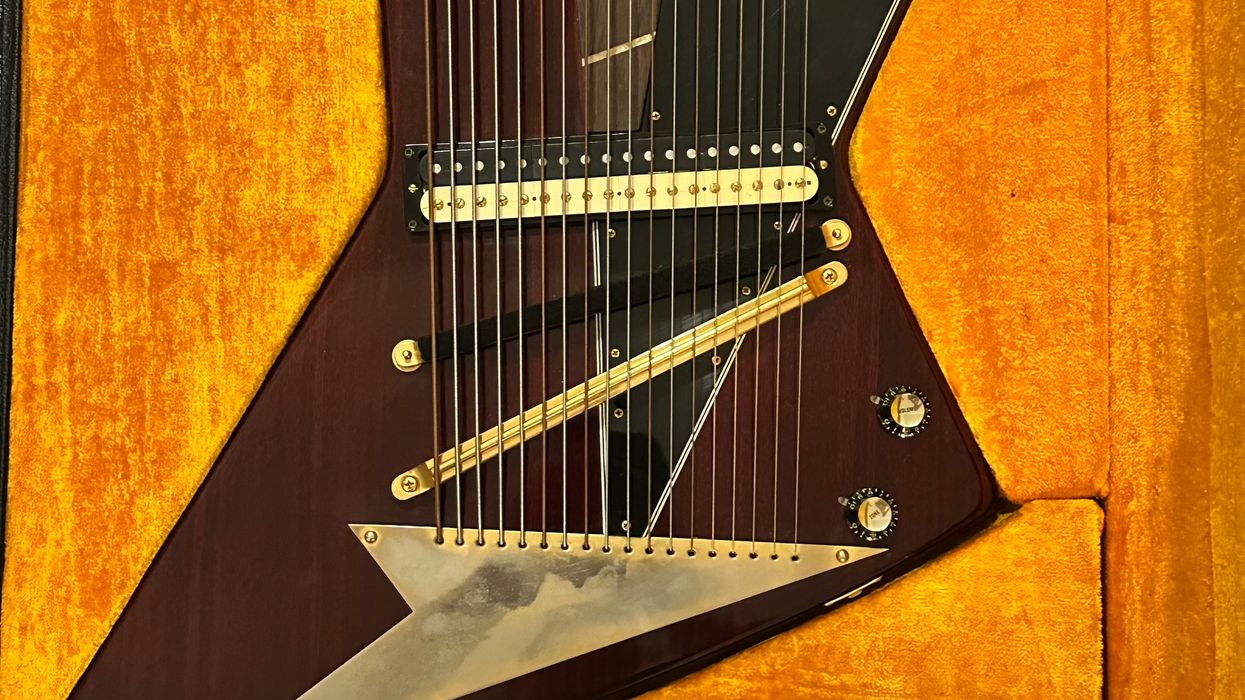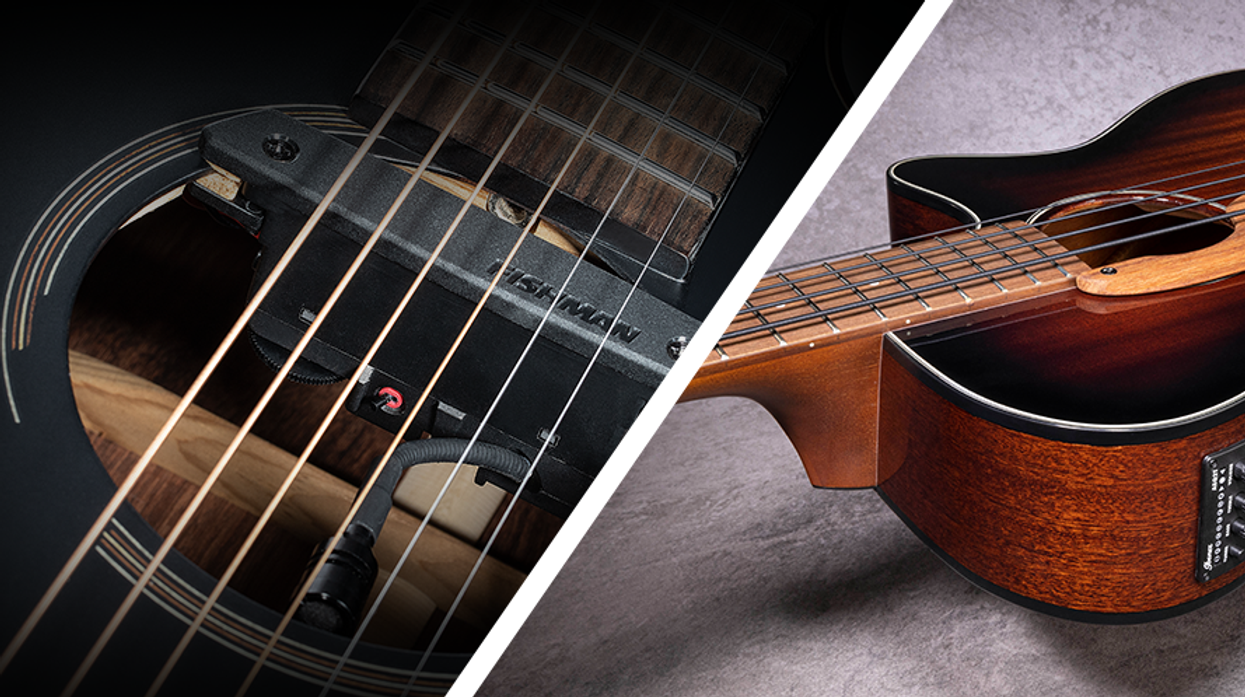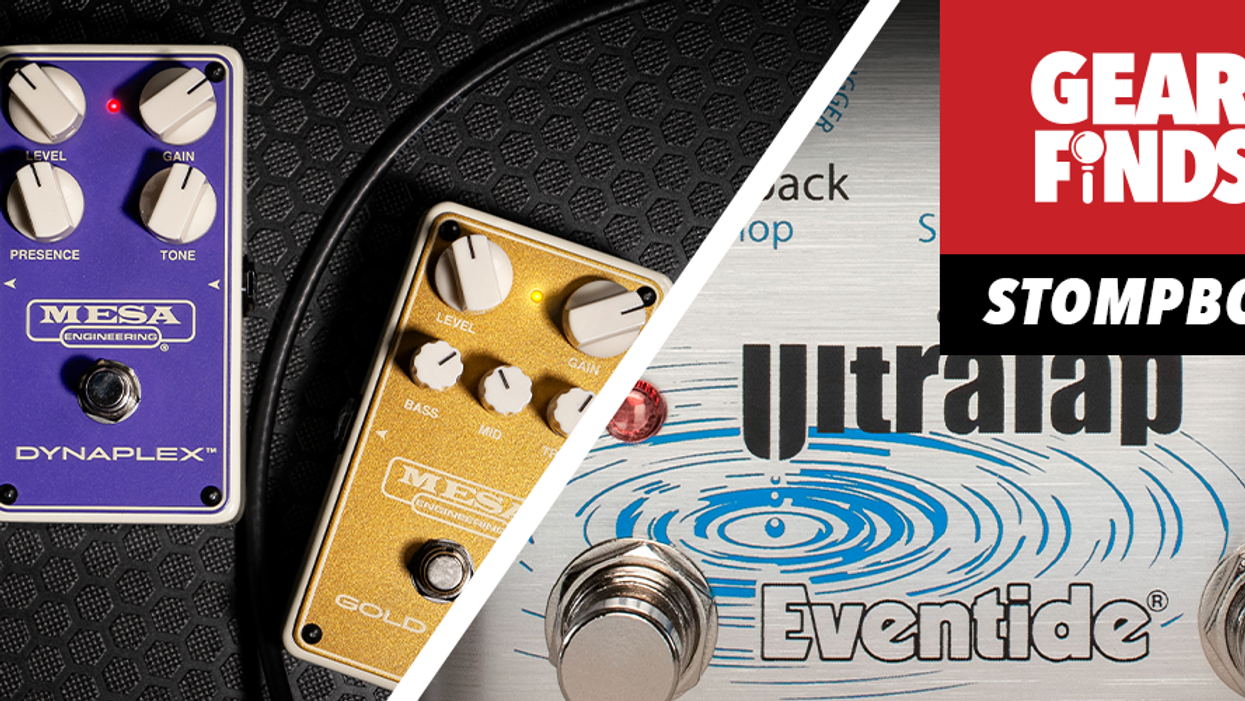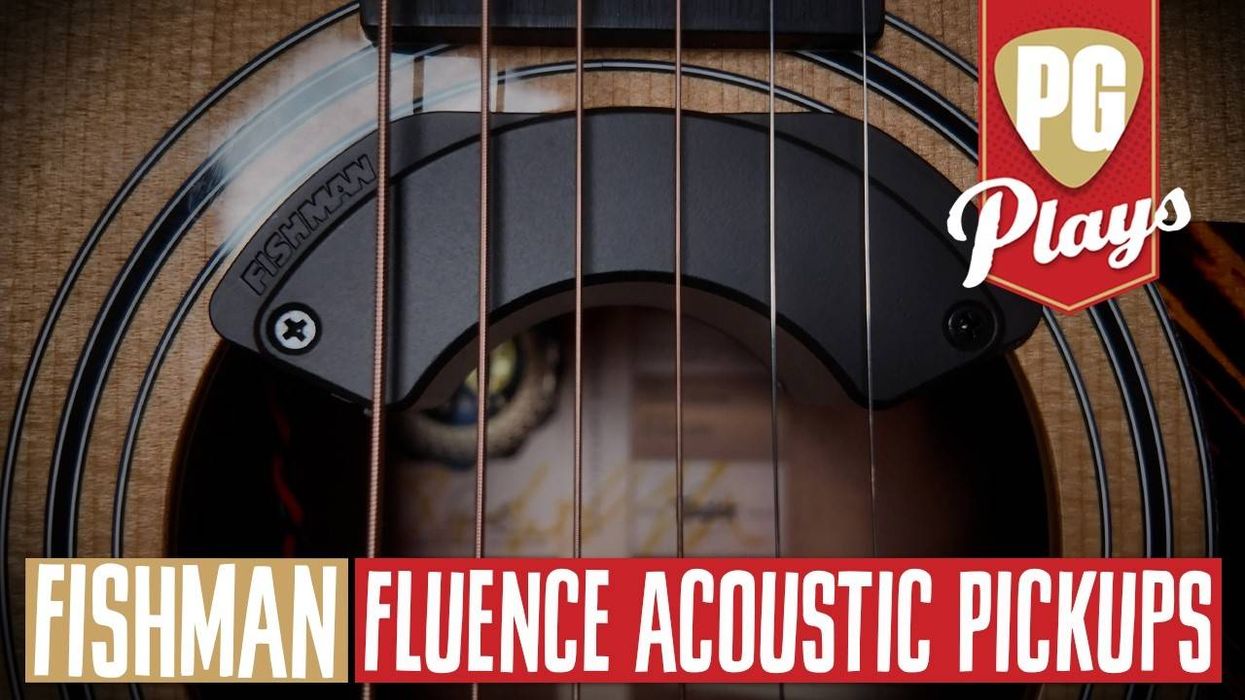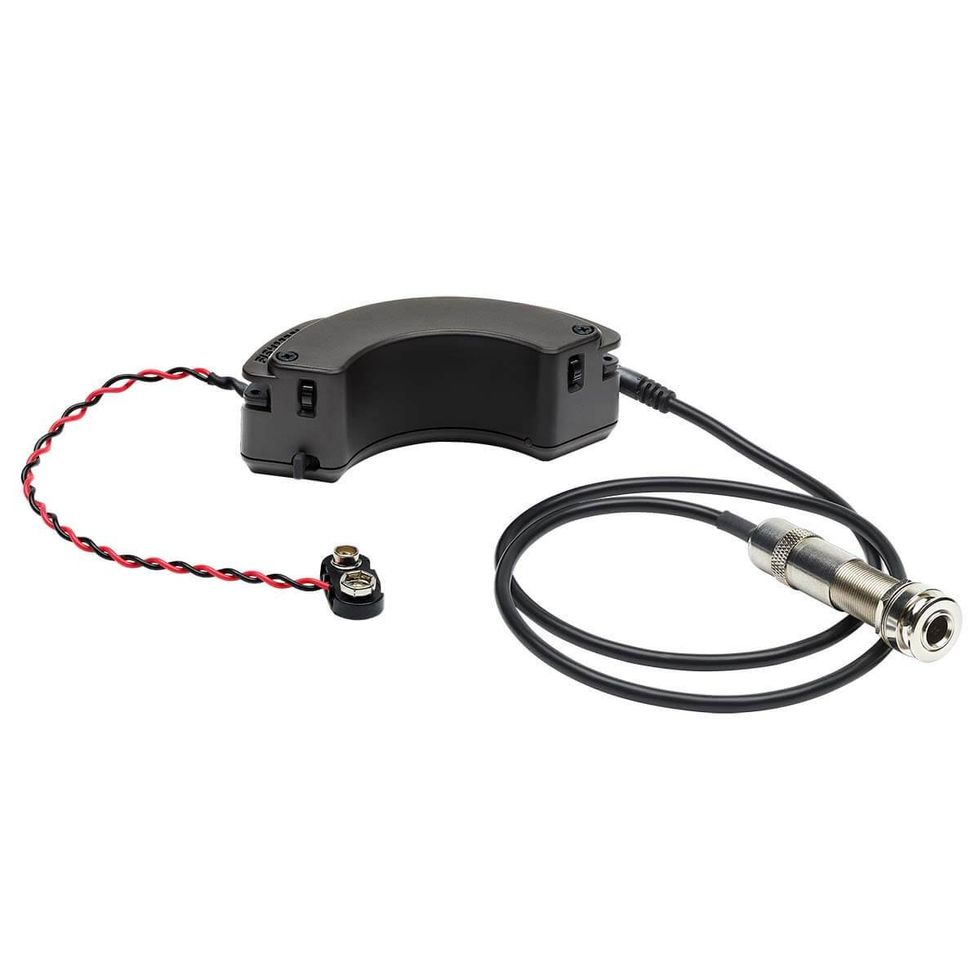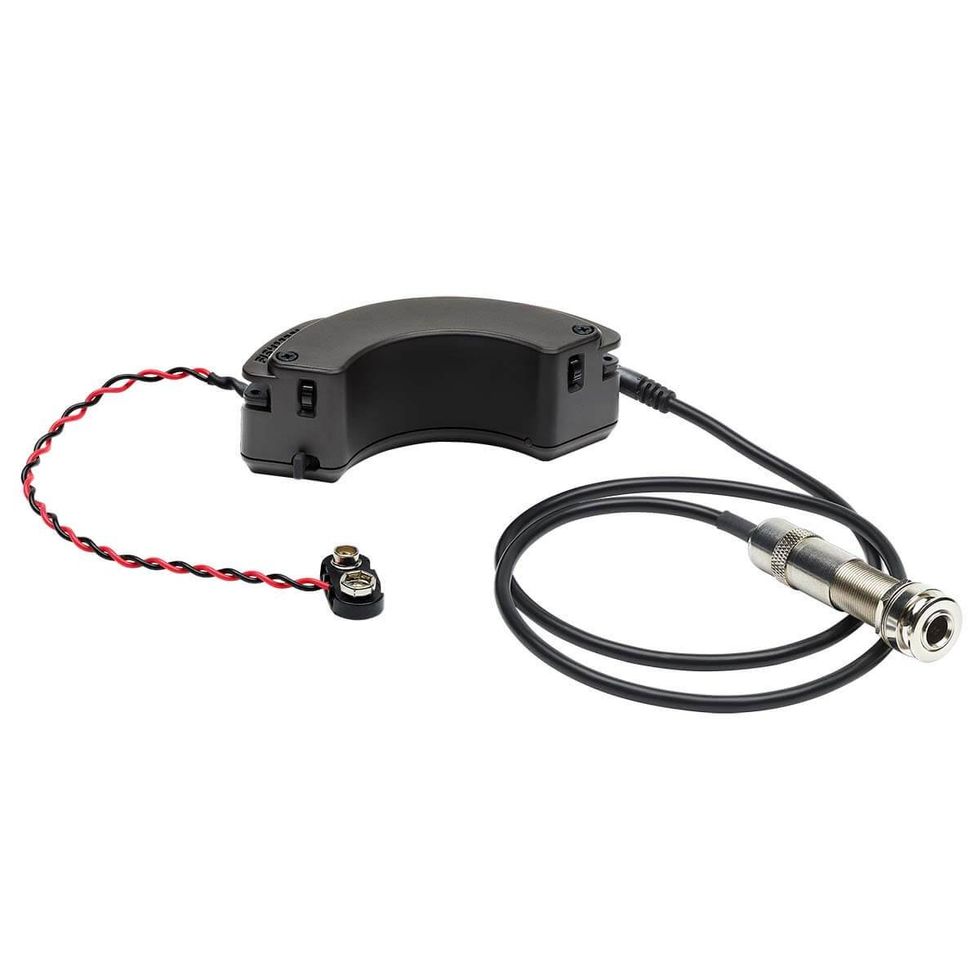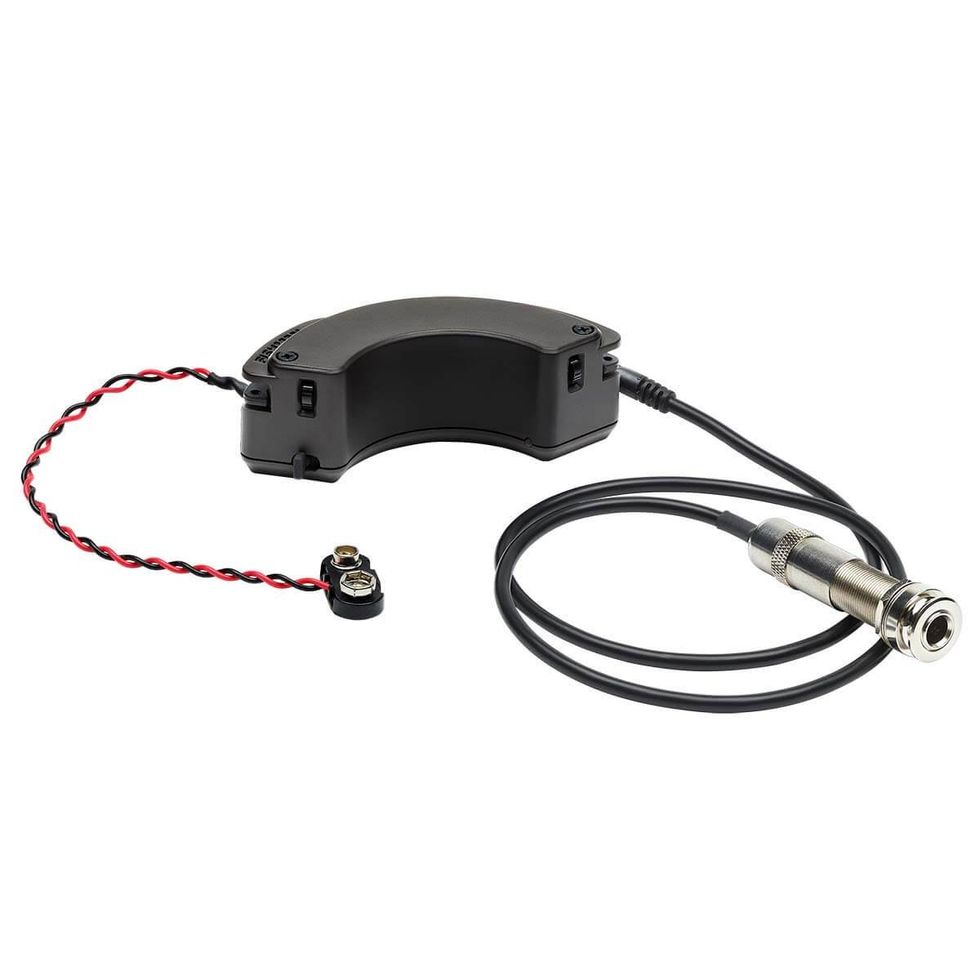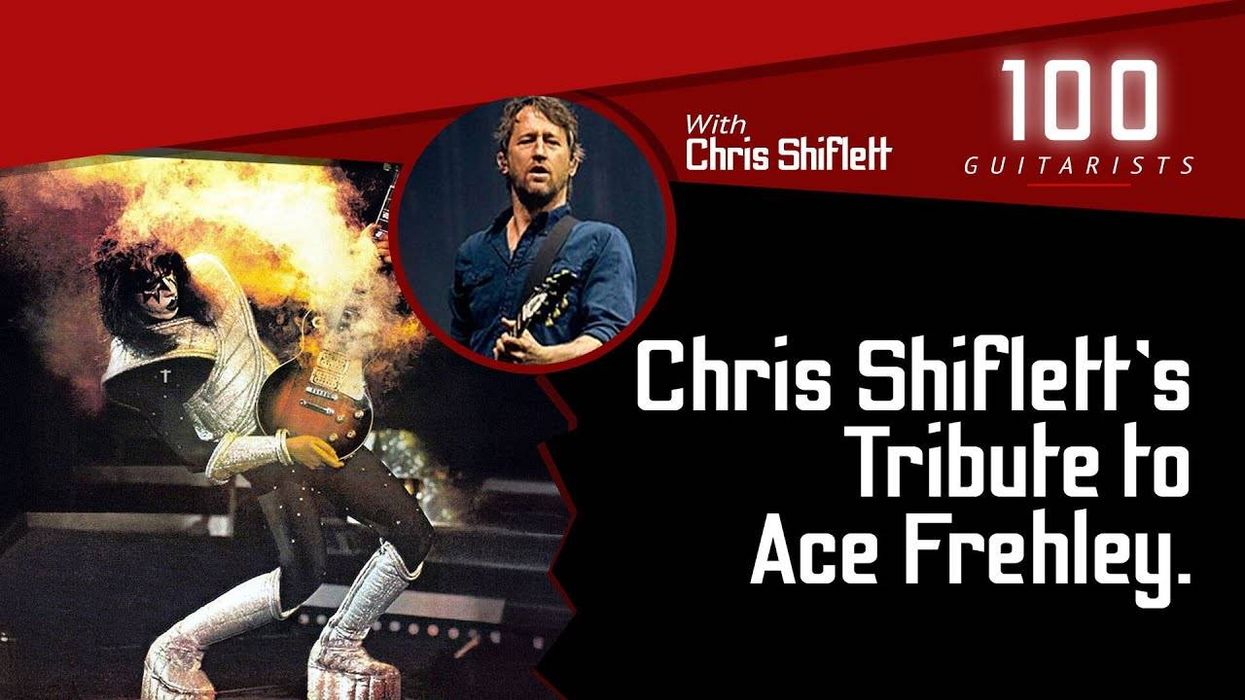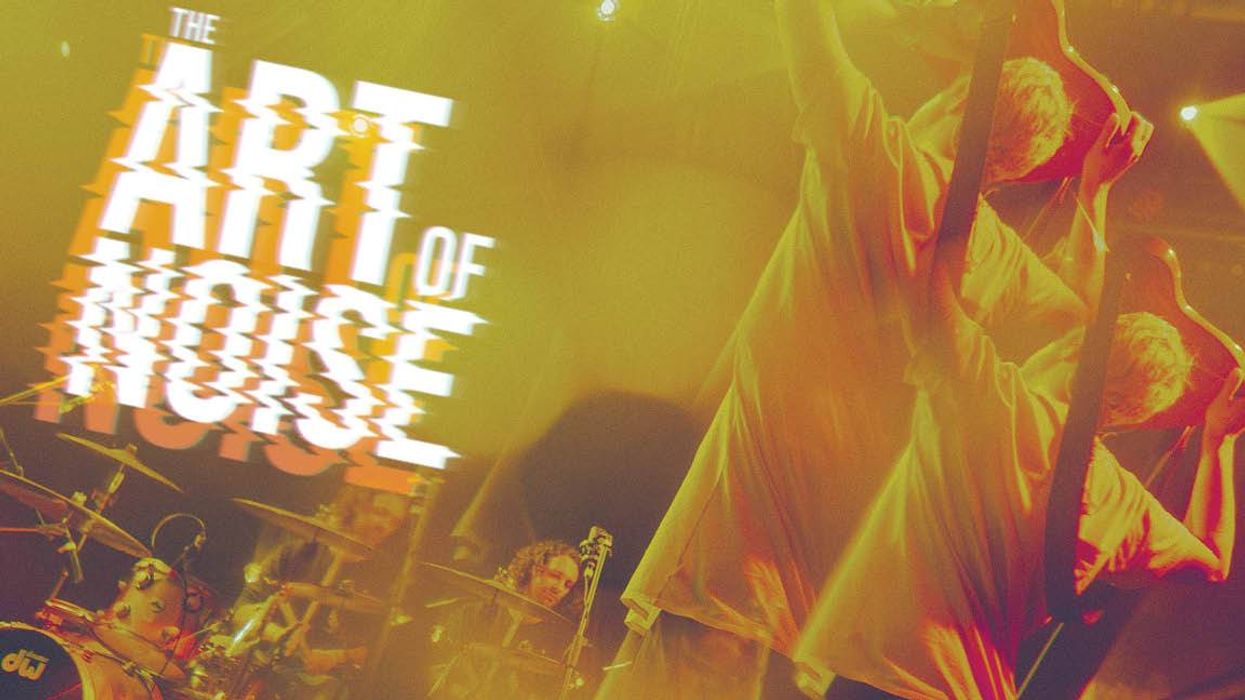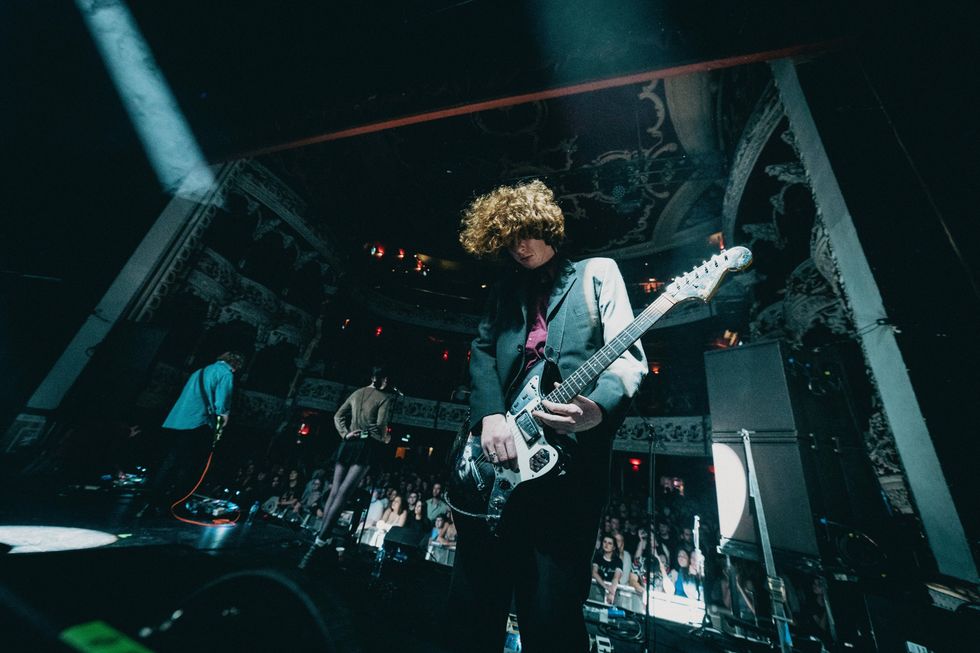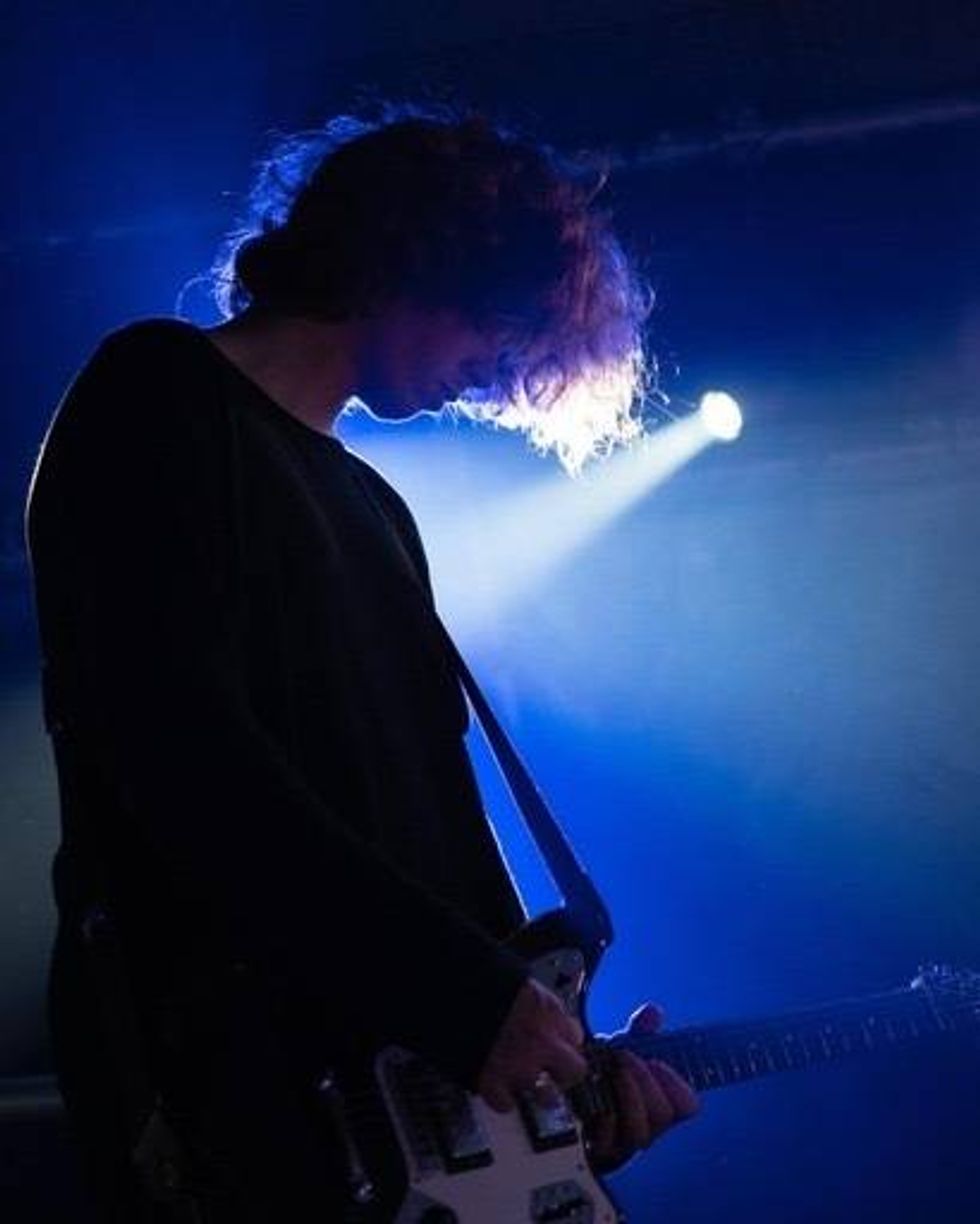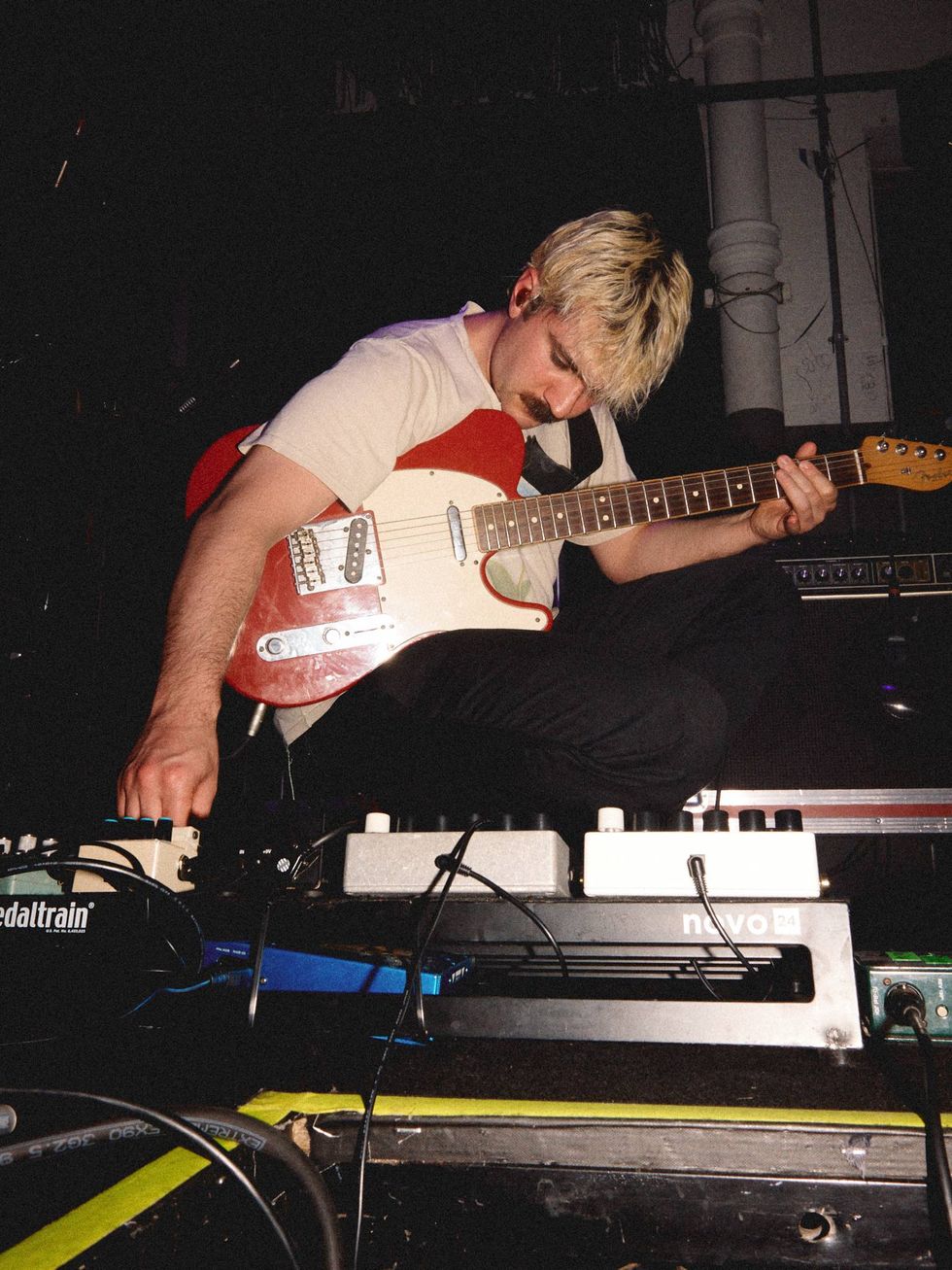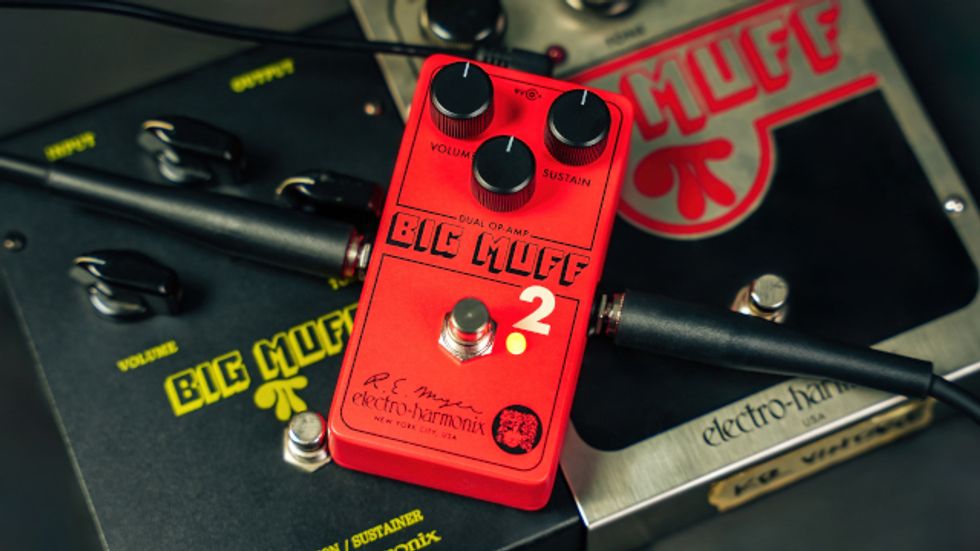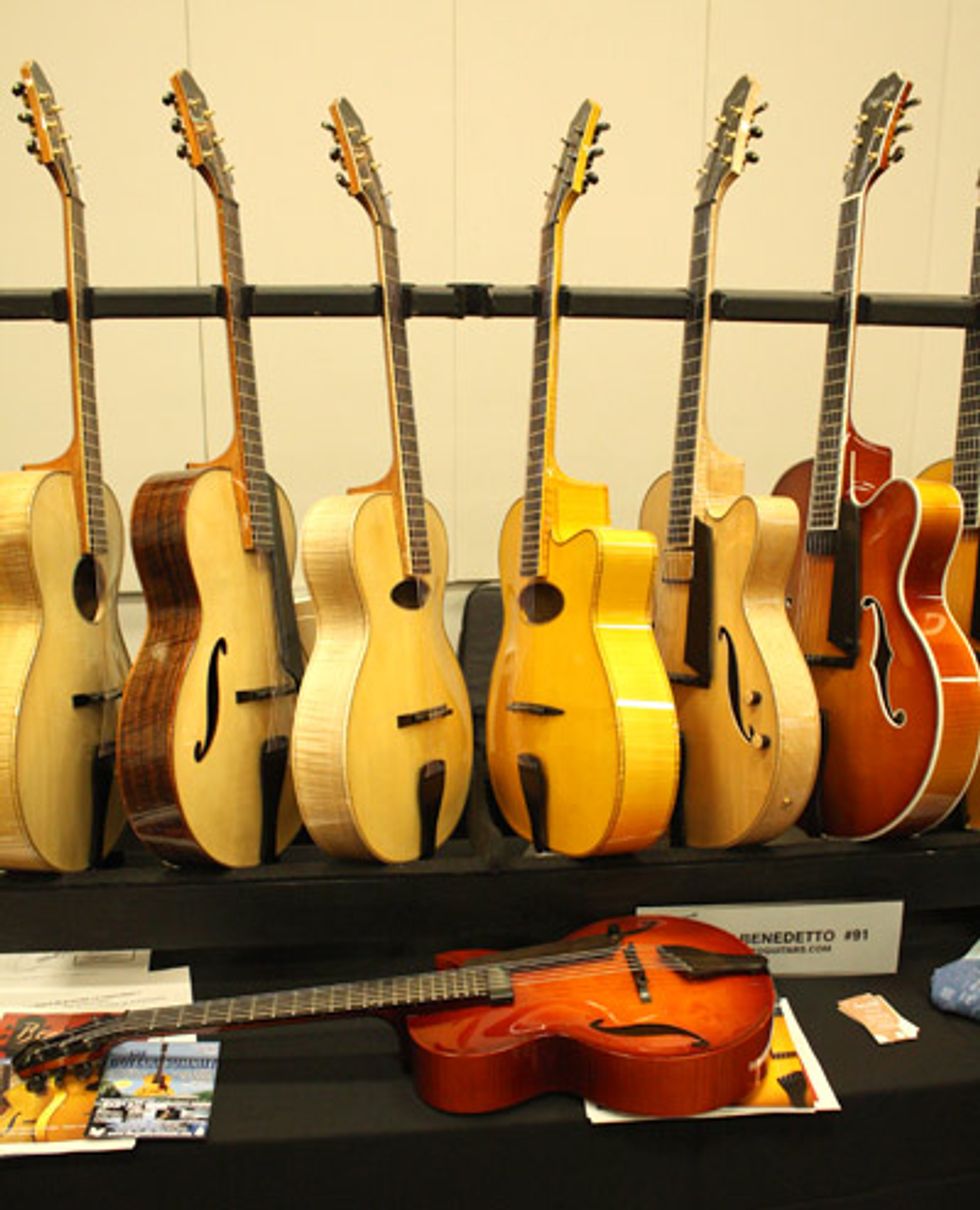
Benedetto brought a bevy of instruments to Montreal, including a 16" Sinfonietta as well as La Venezia, Bravo Elite, Bambino Elite and Andy Elite models.
Video Interview
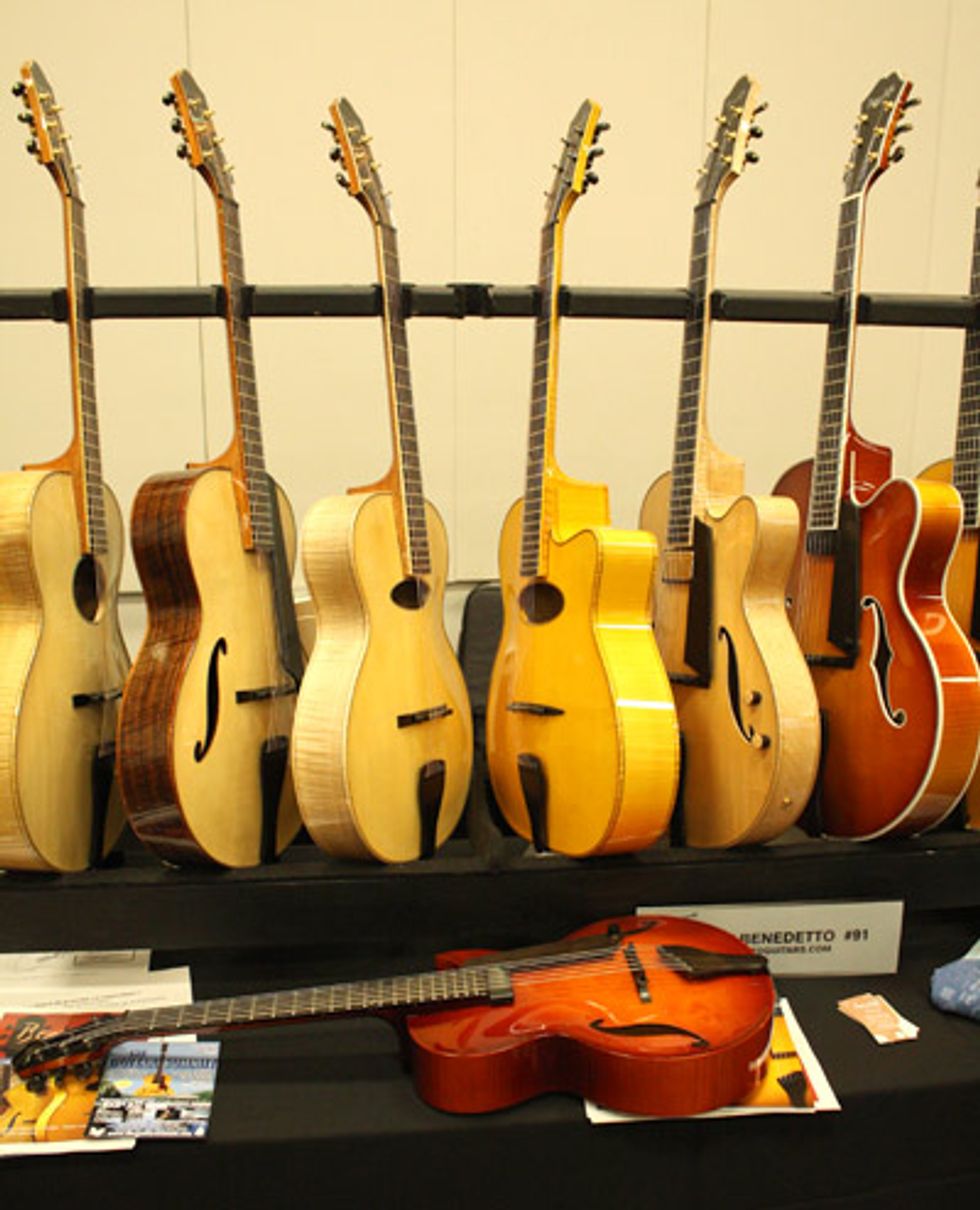 | 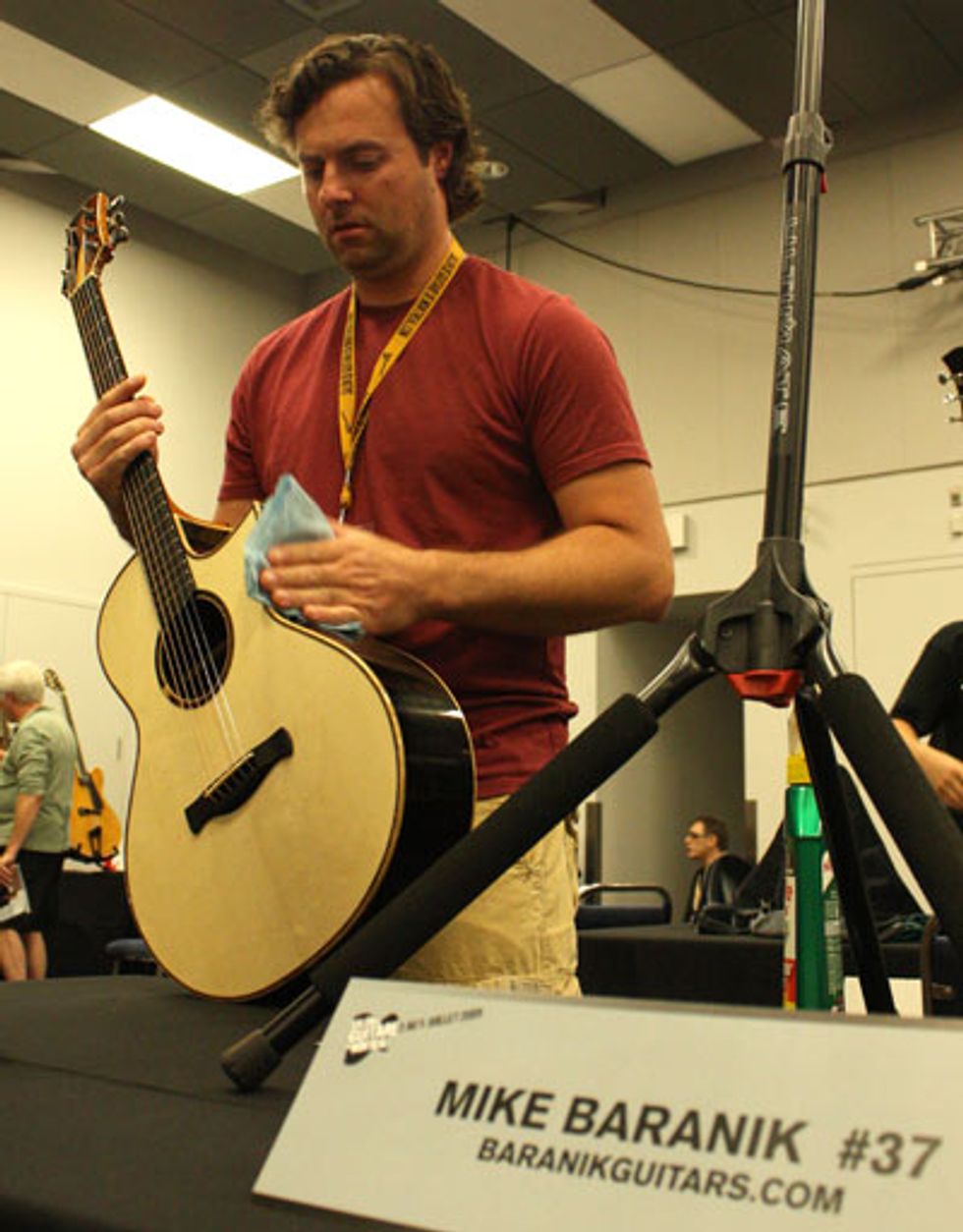 | 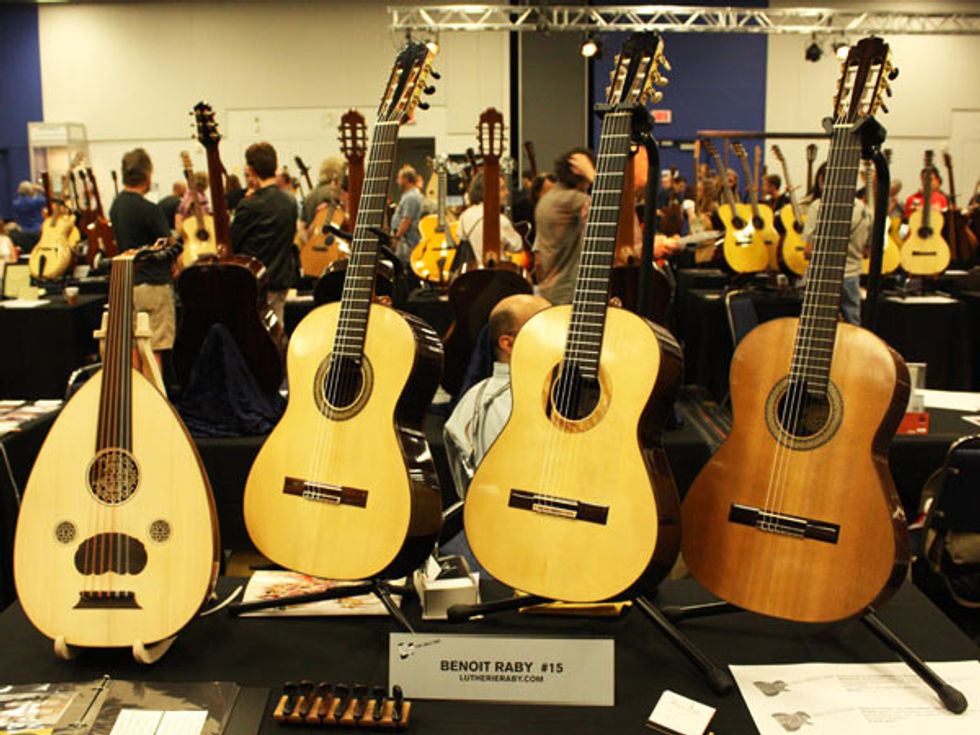 |  | 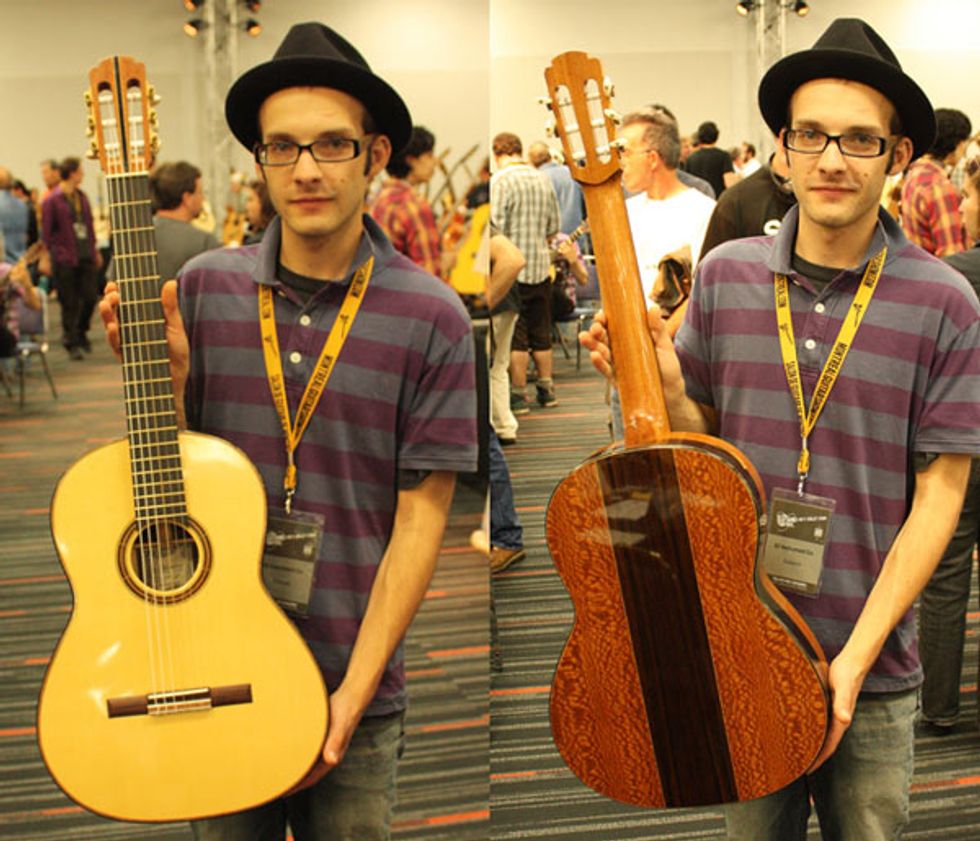 | 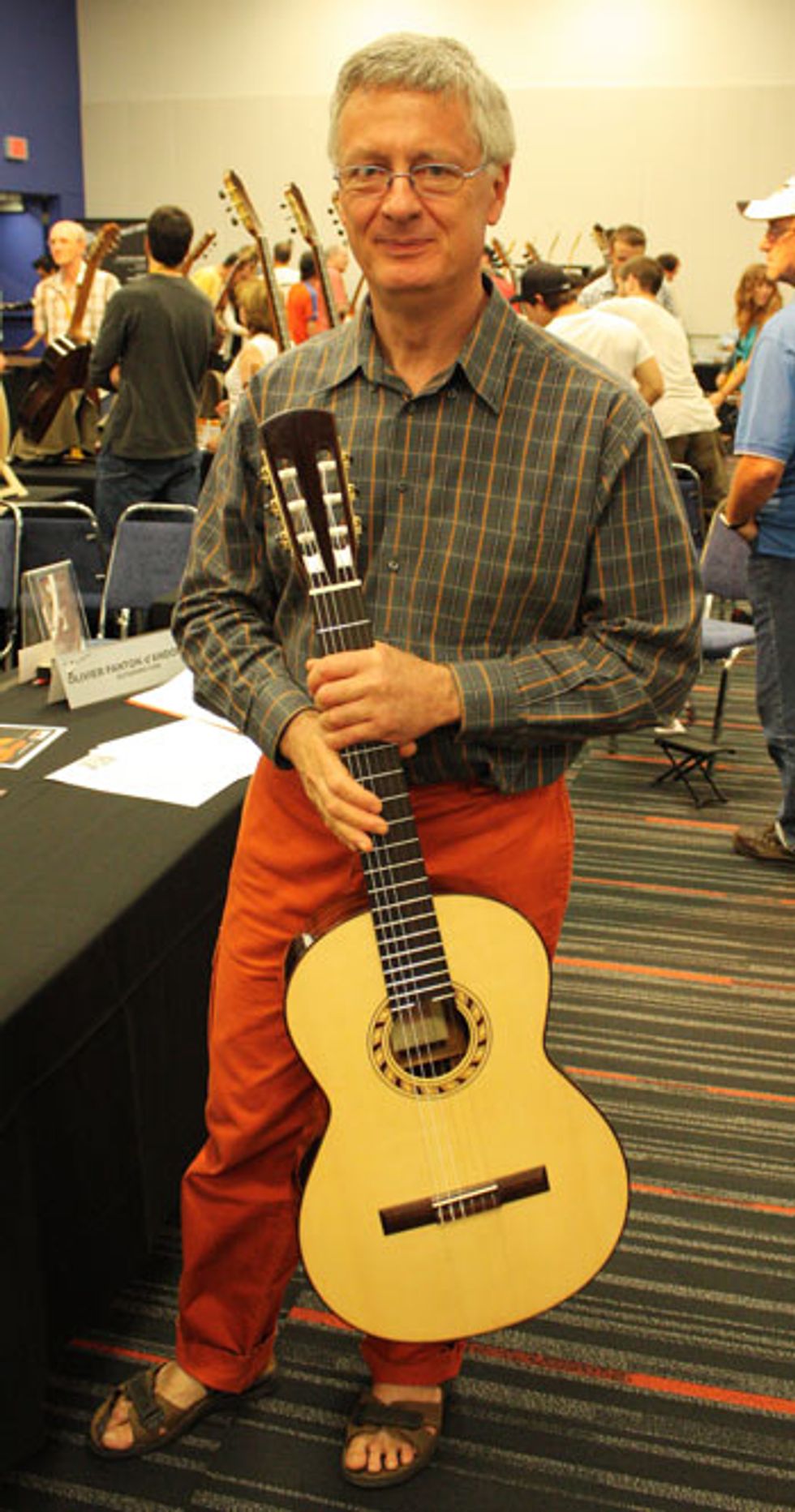 | 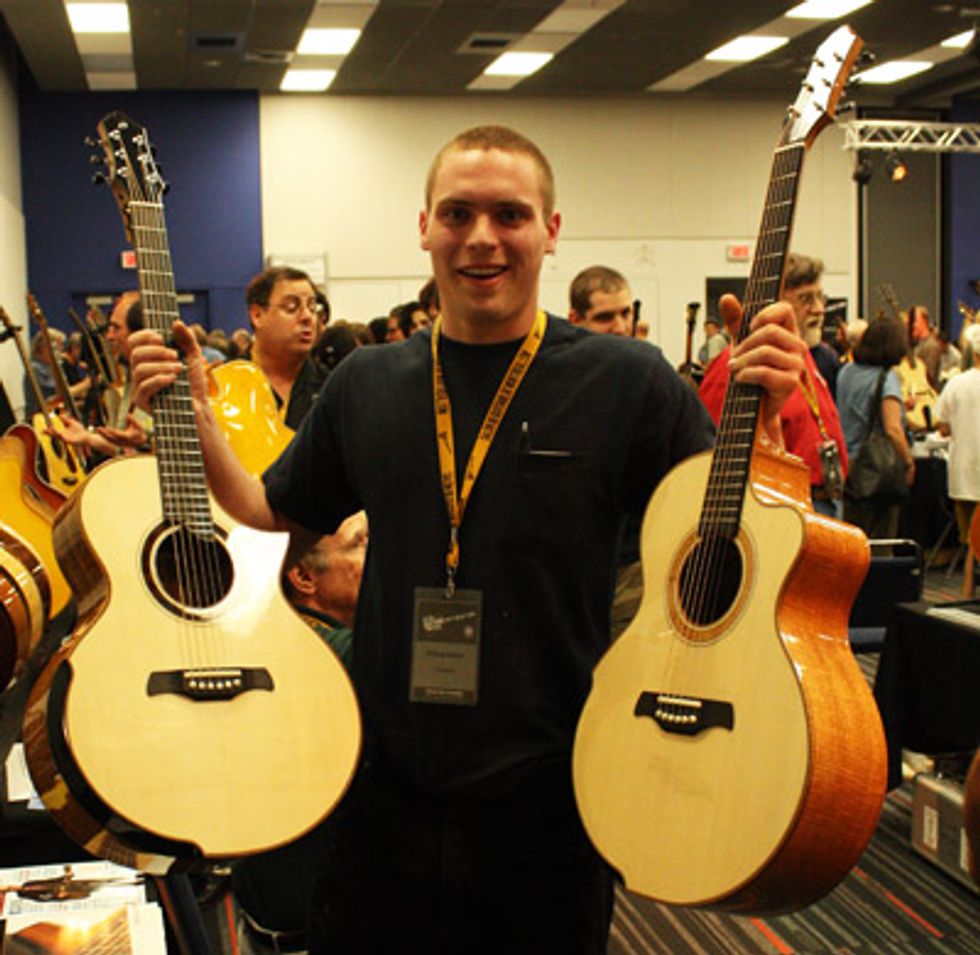 | 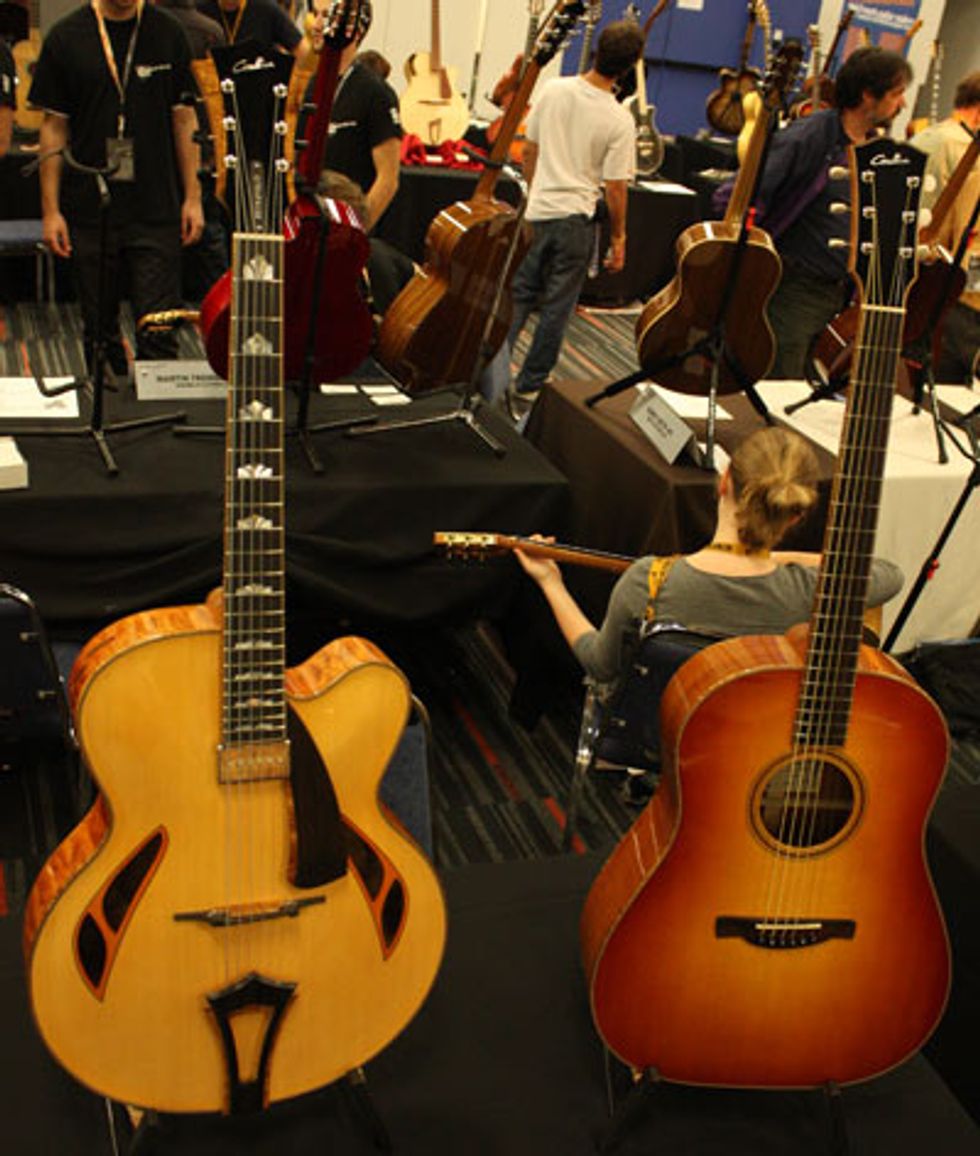 |  | 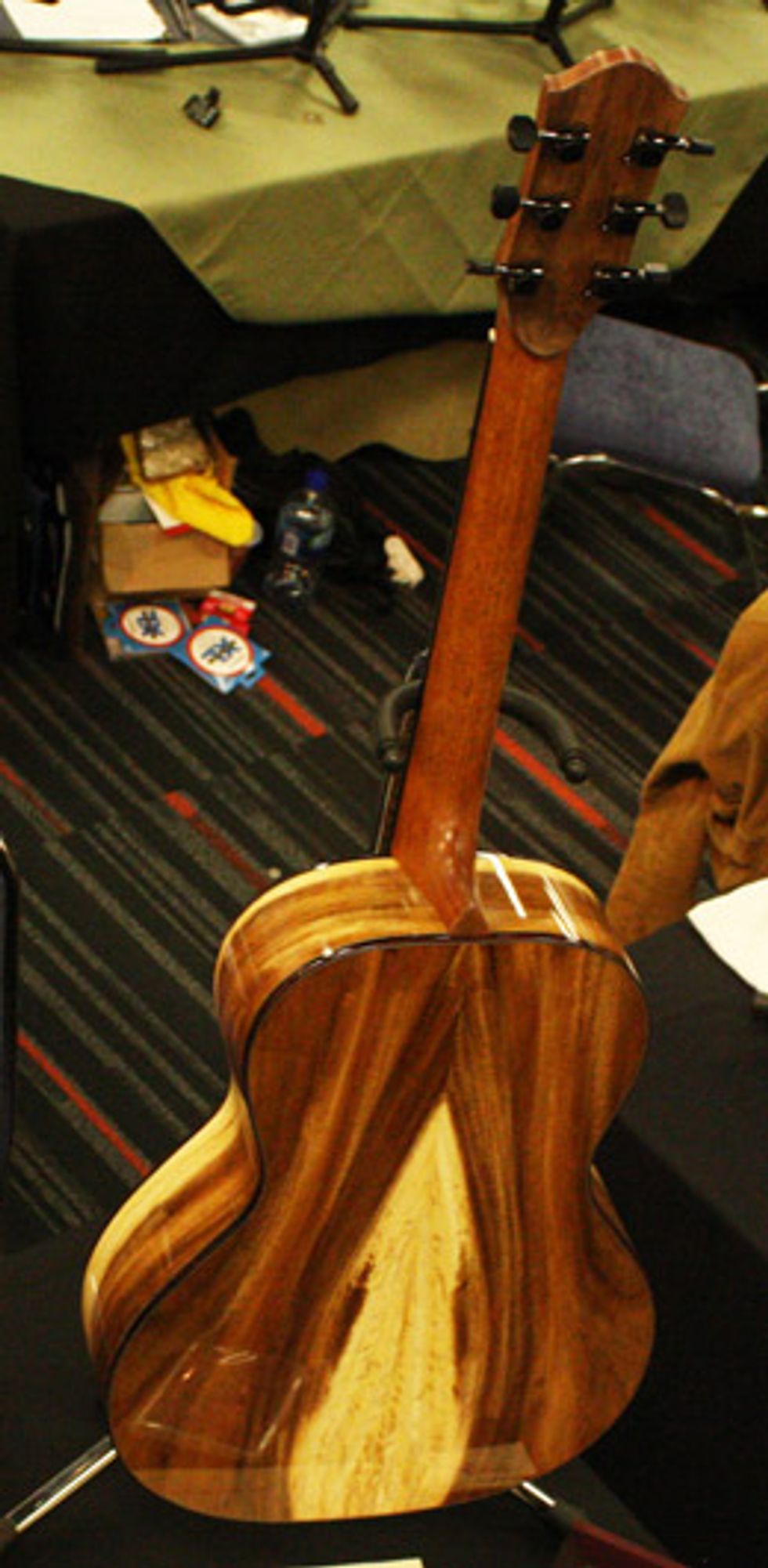 |
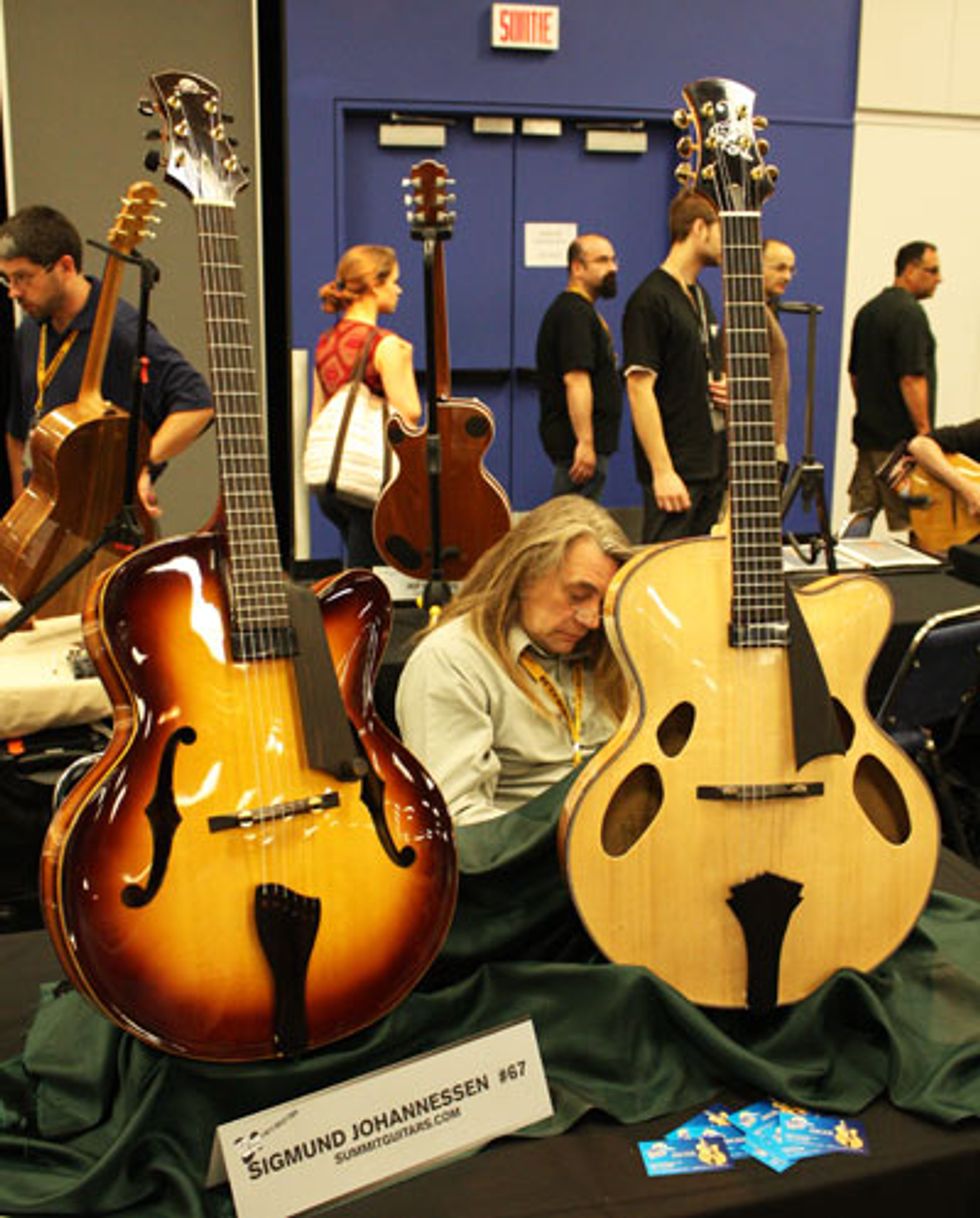 | 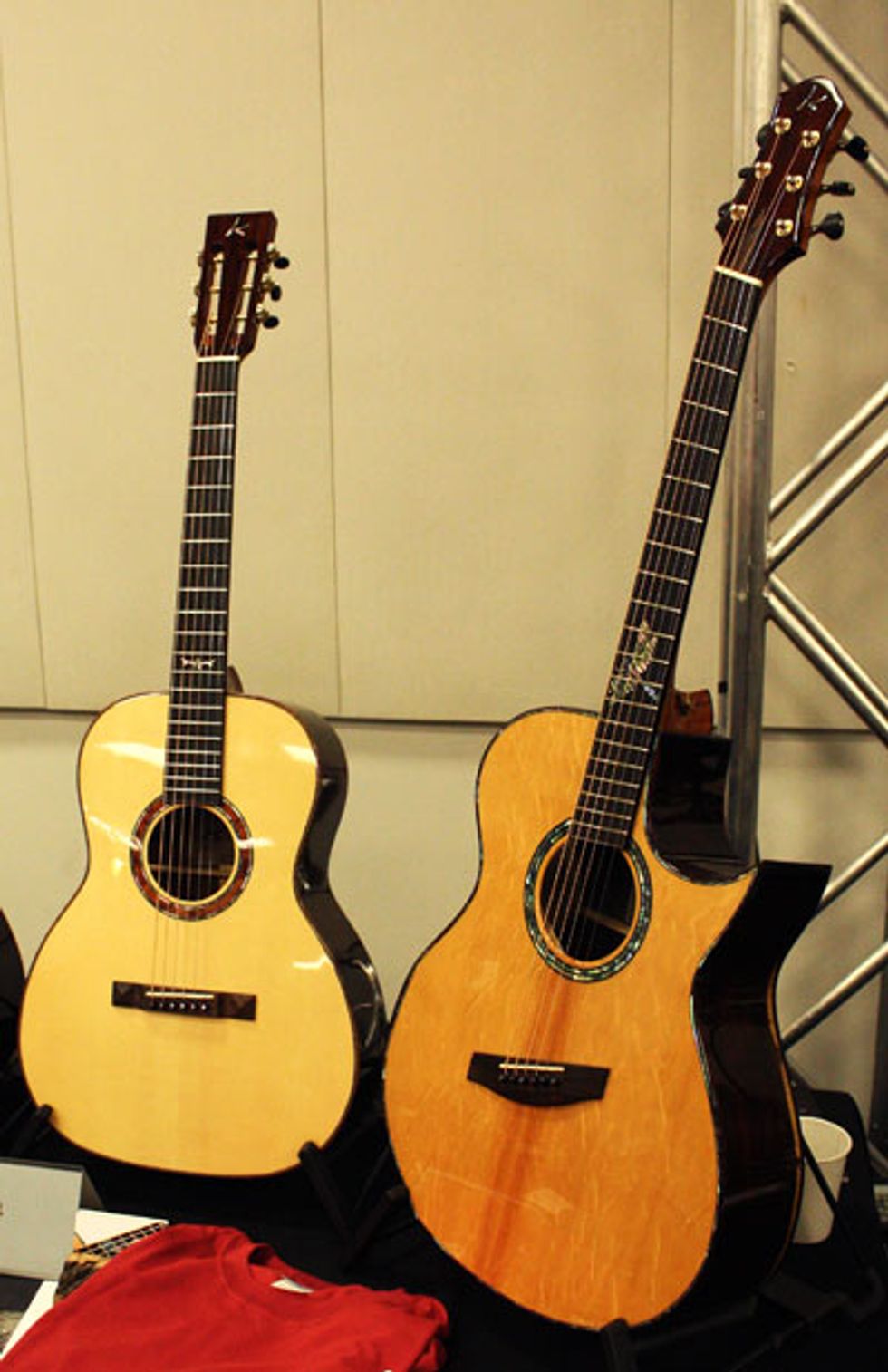 | 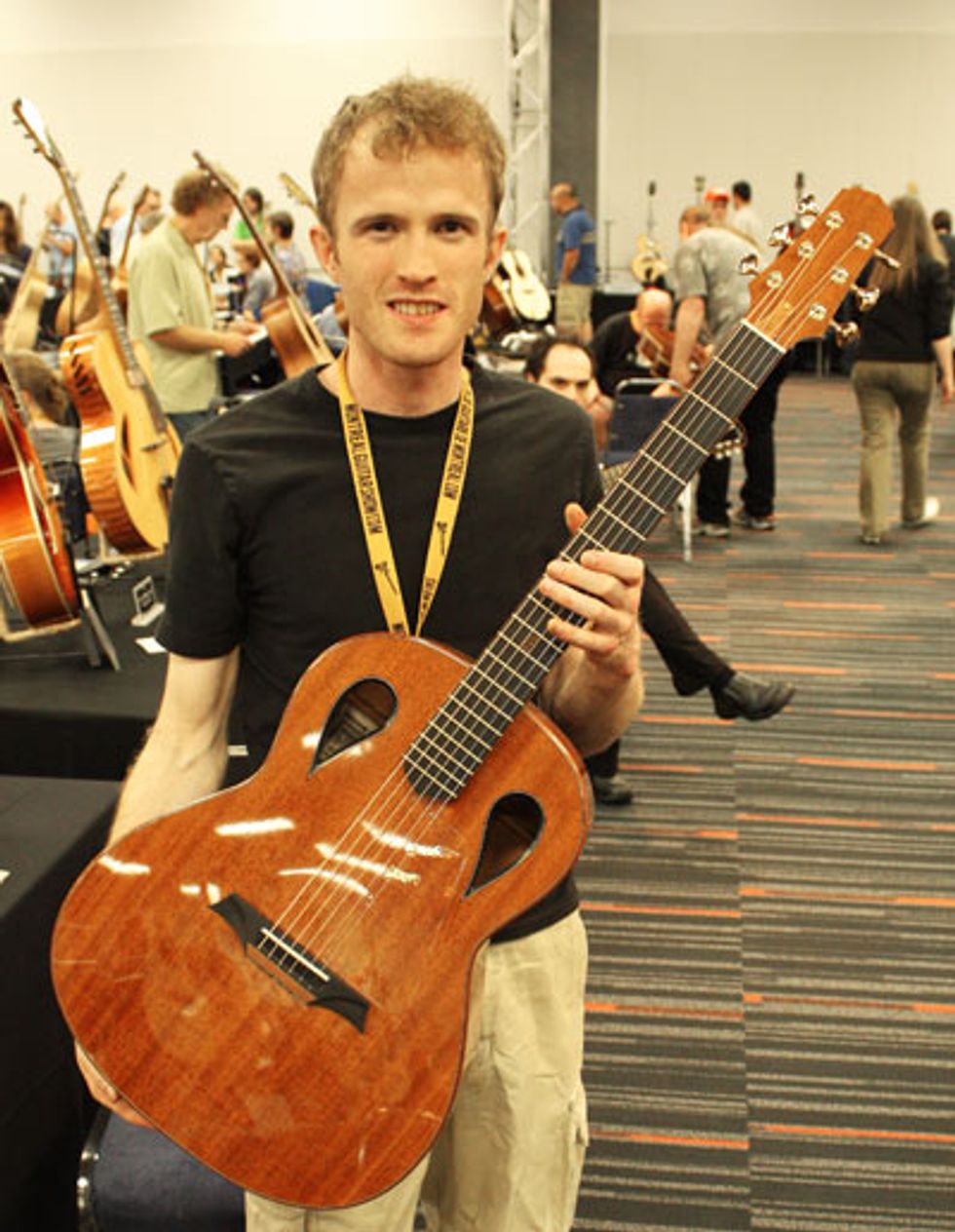 | 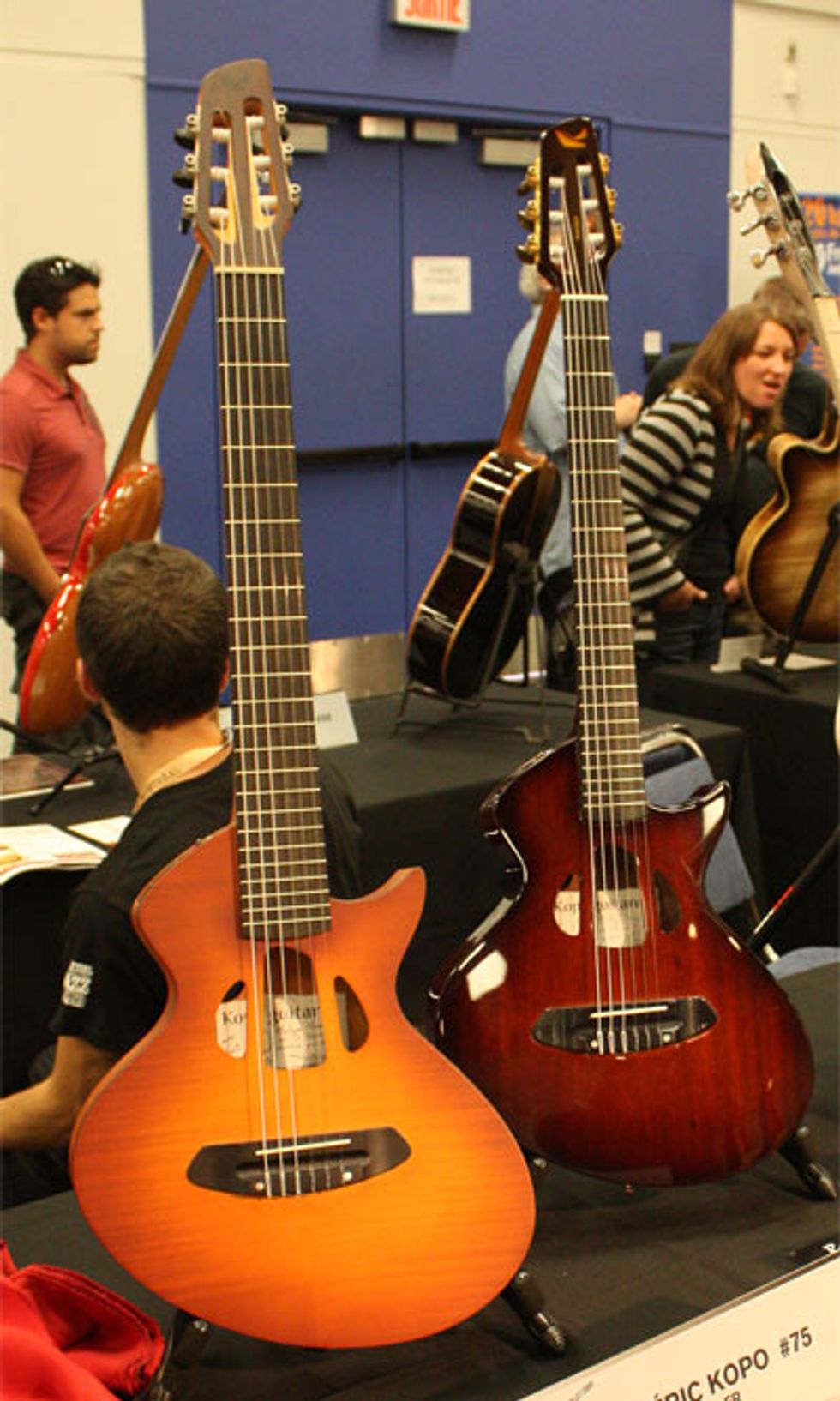 | 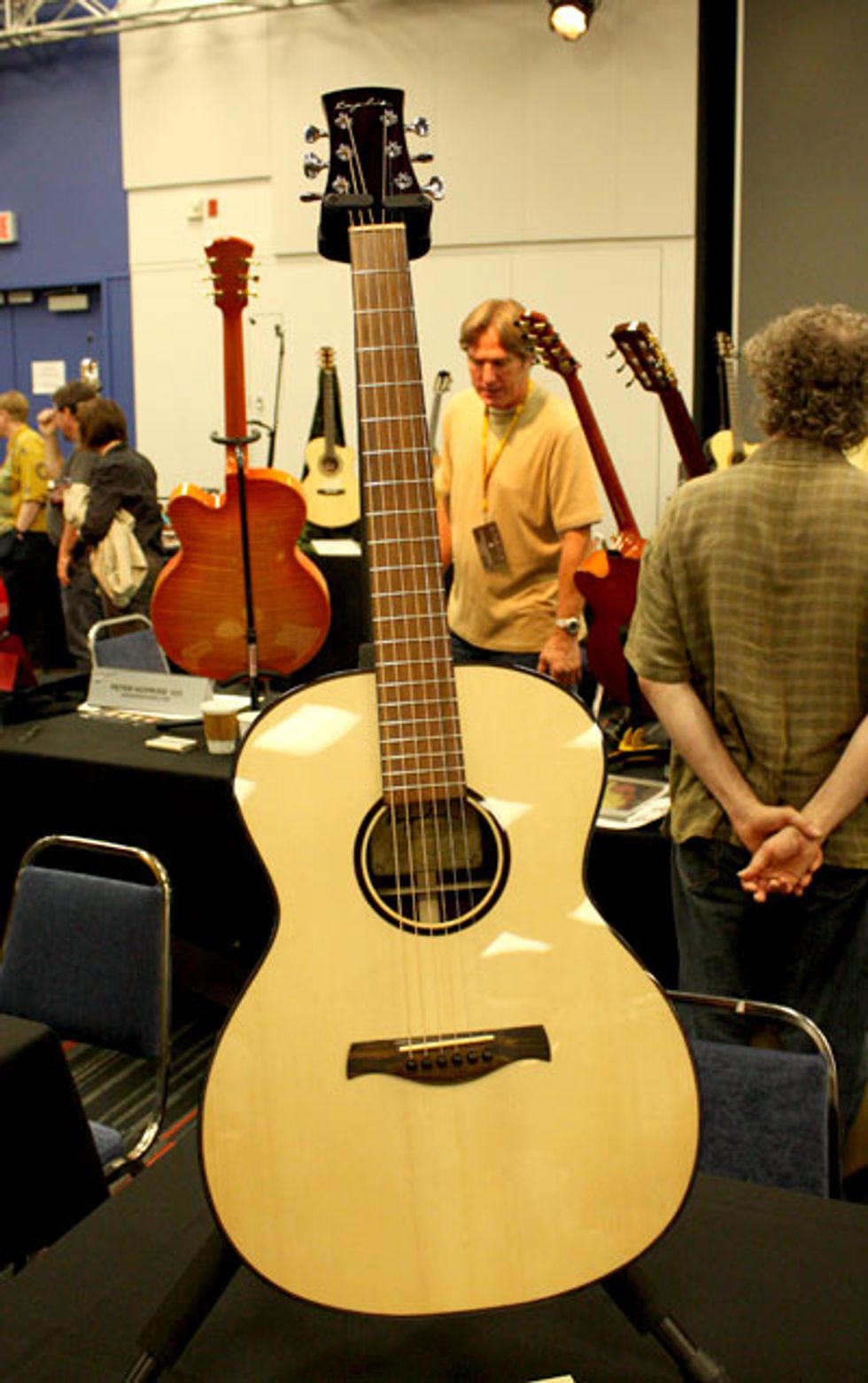 | 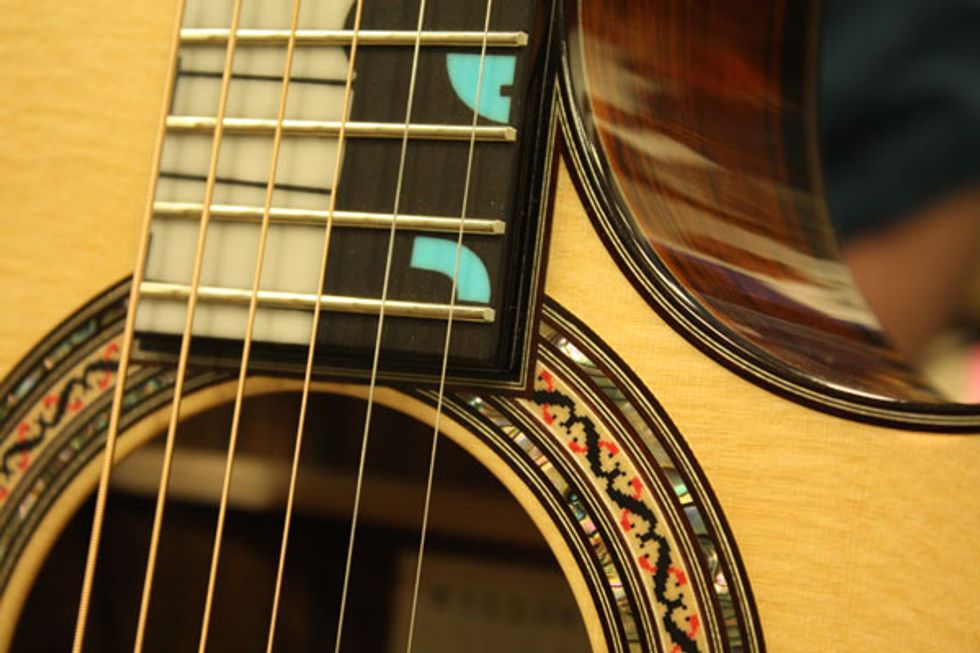 | 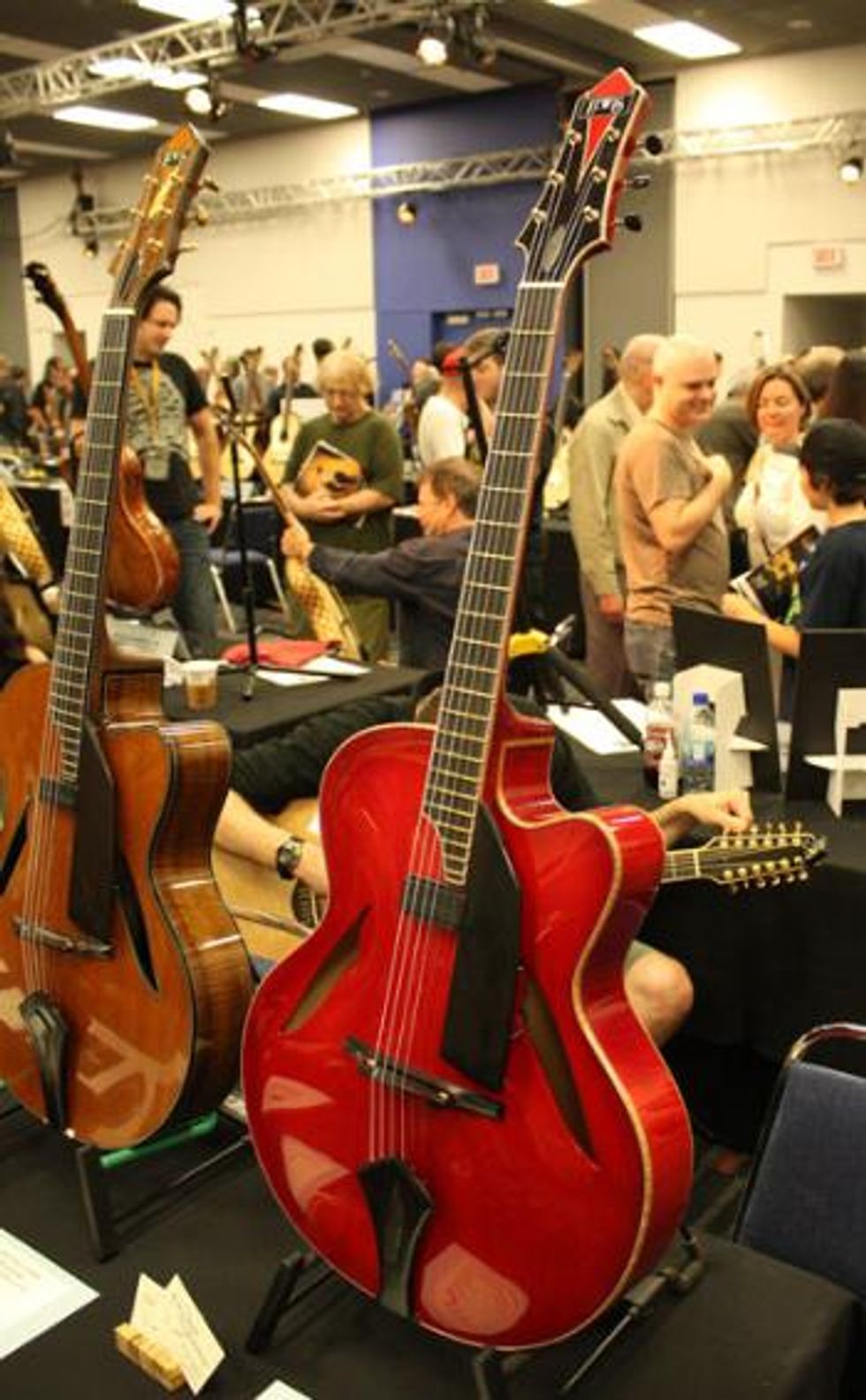 | 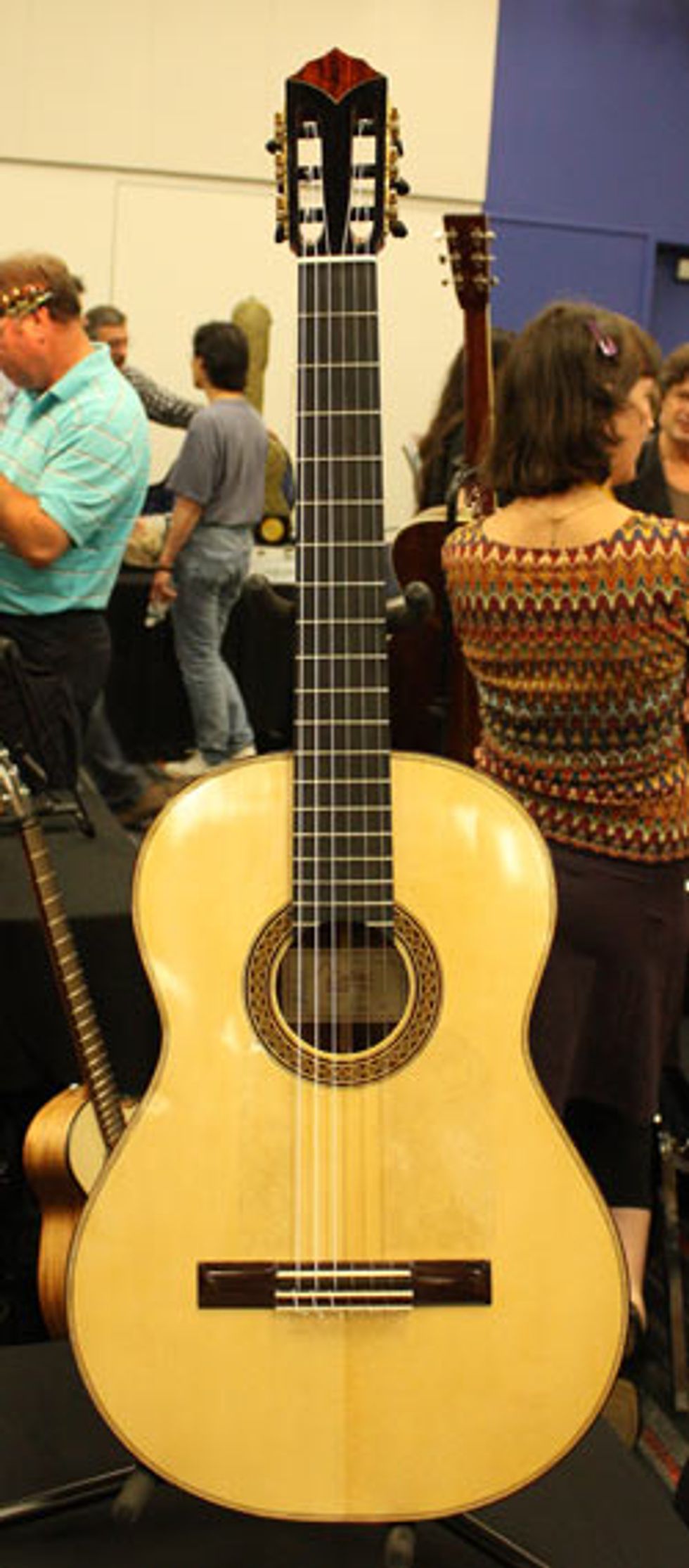 | 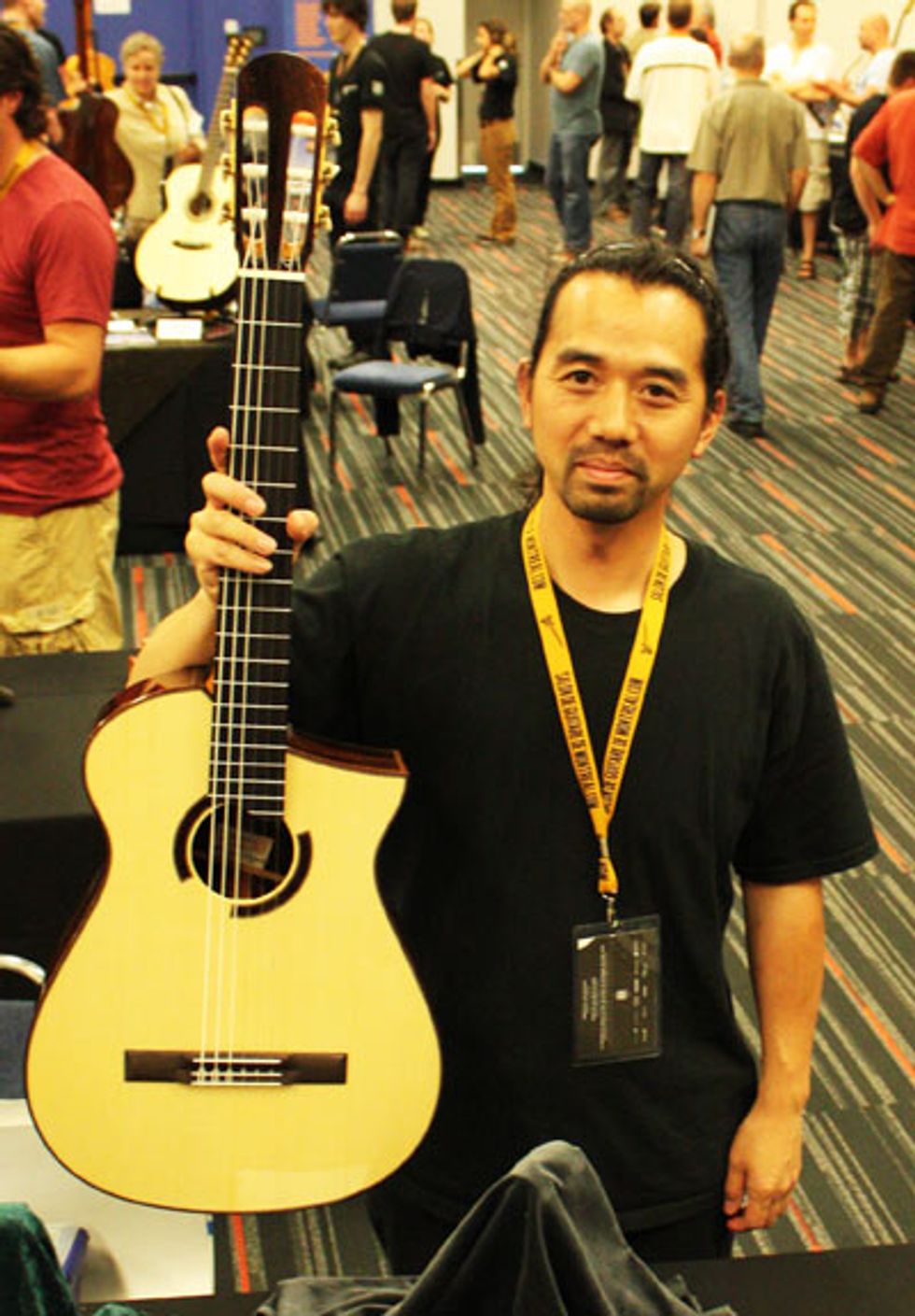 | 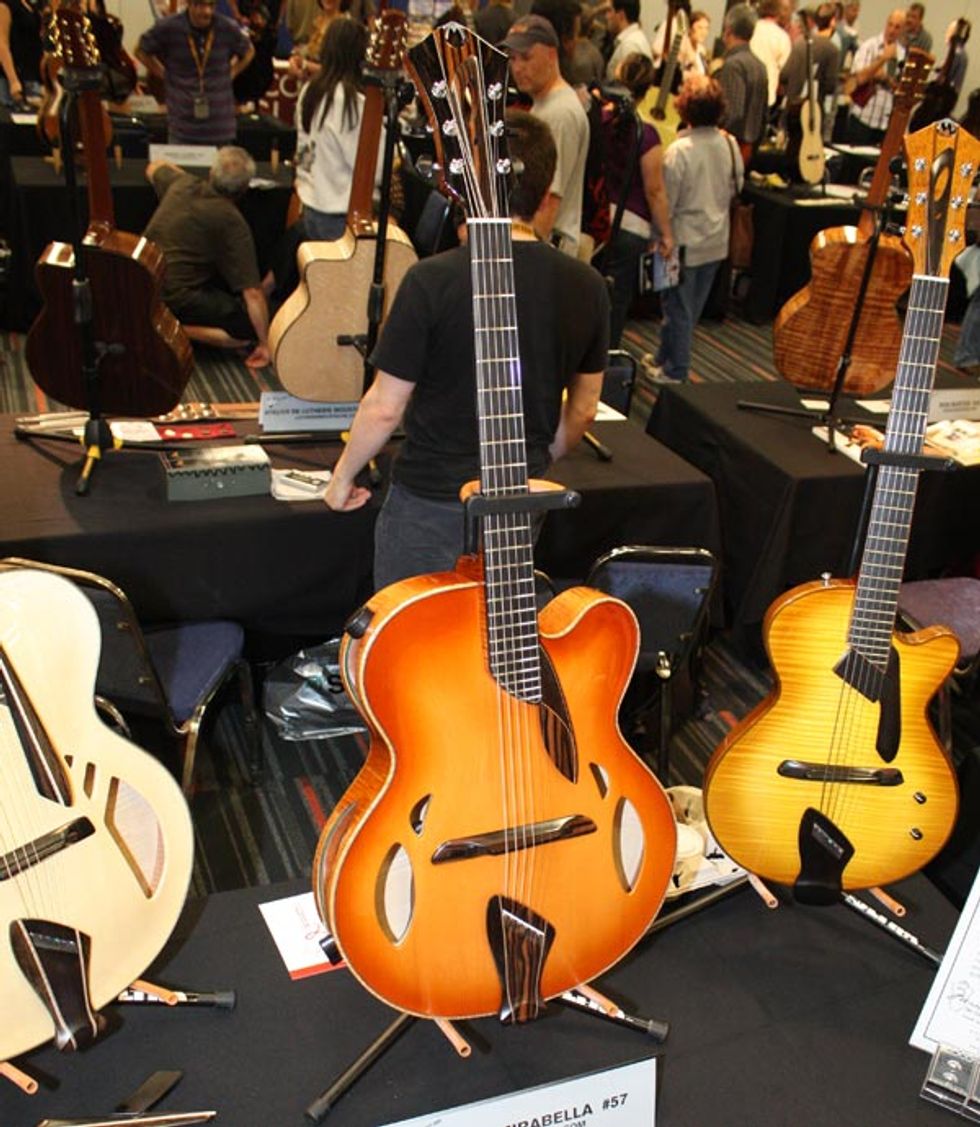 |
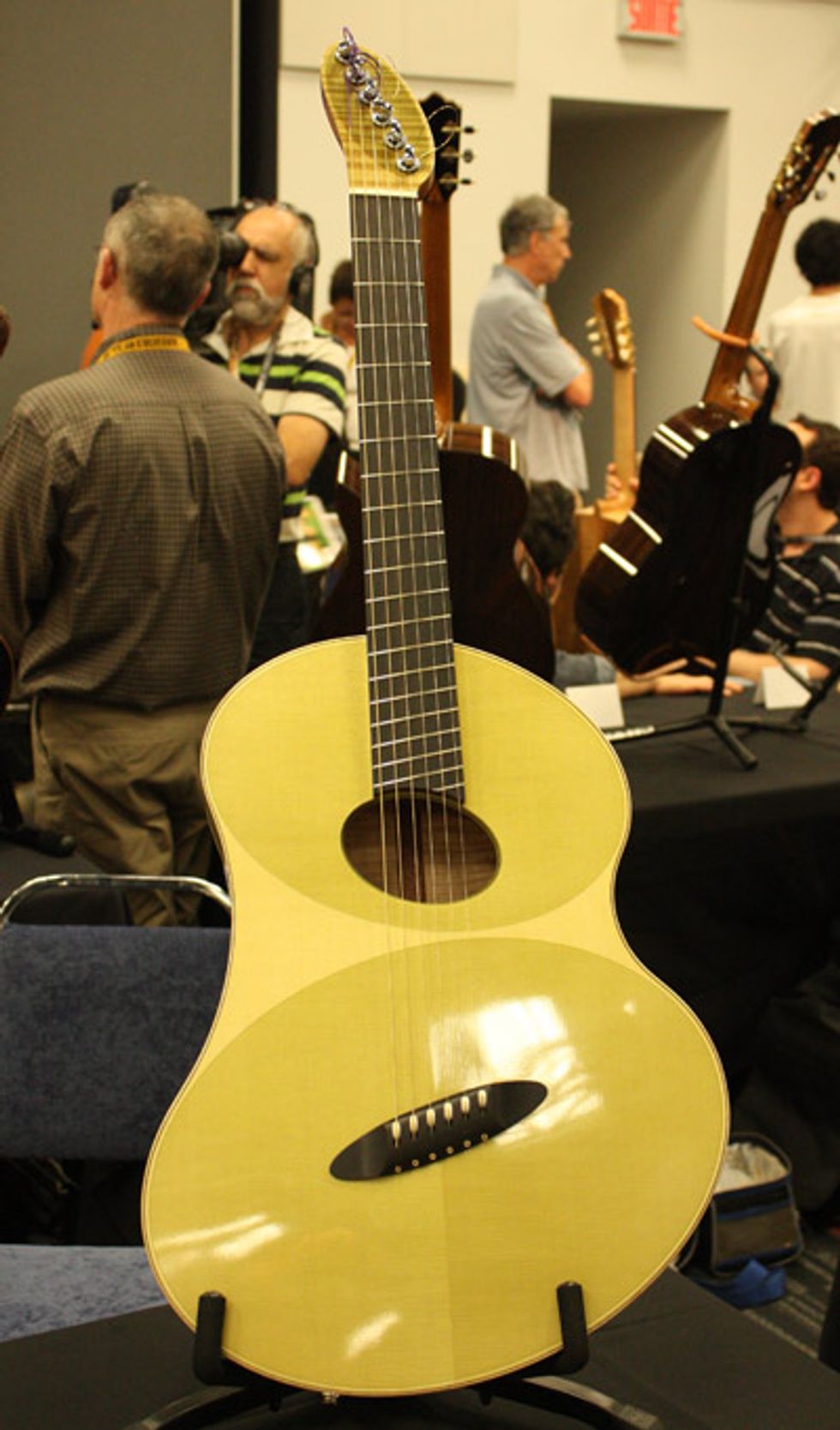 | 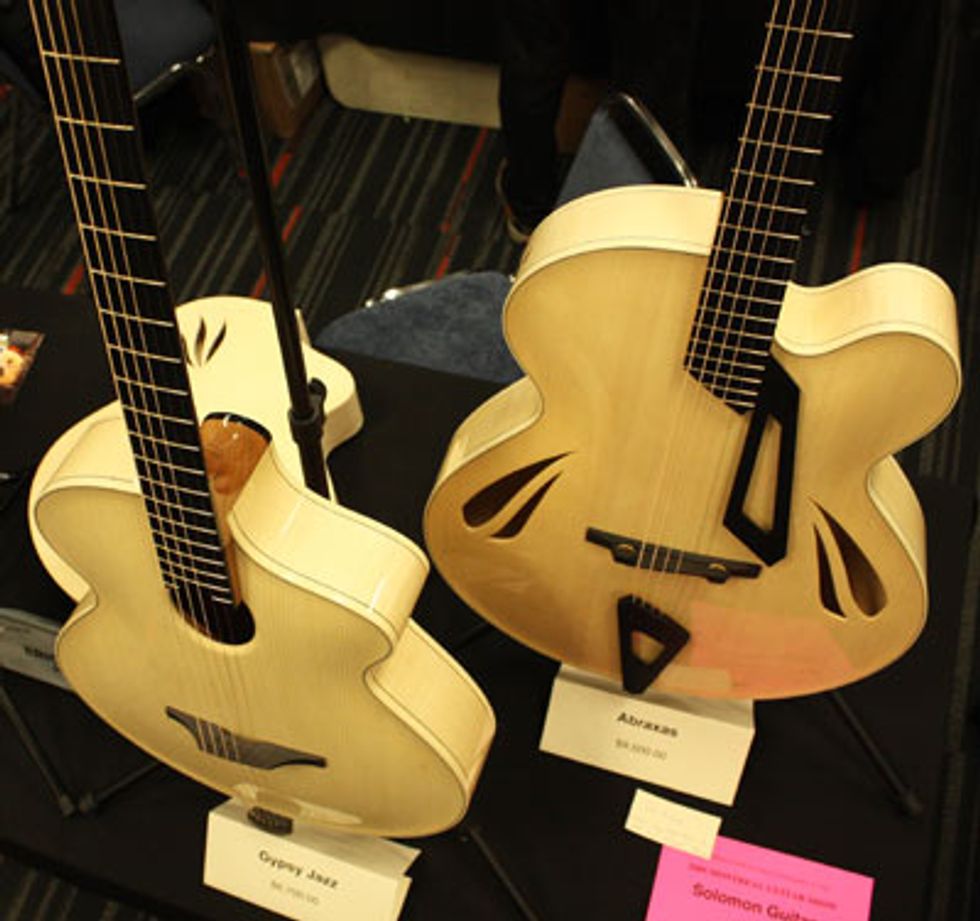 |  | 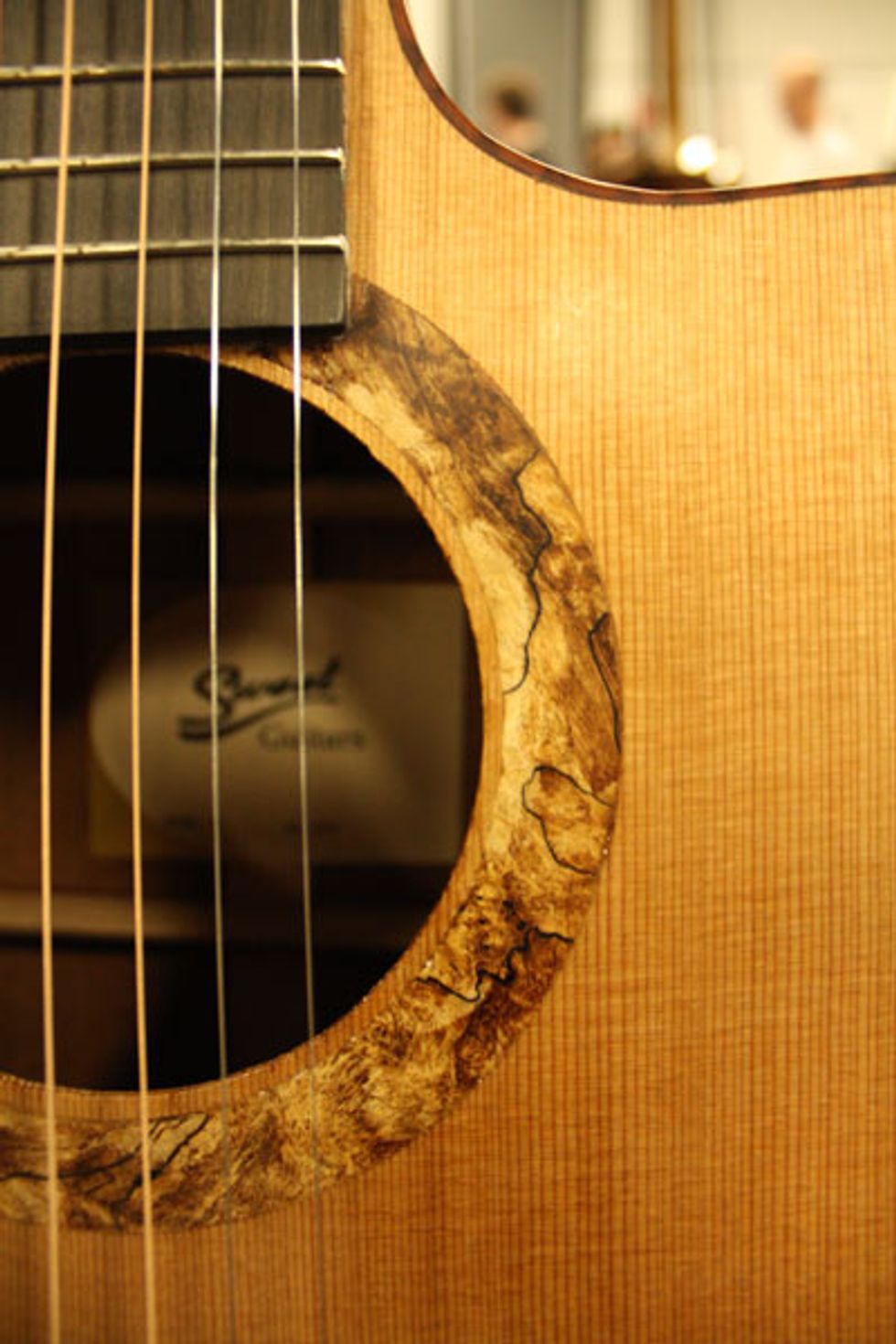 | 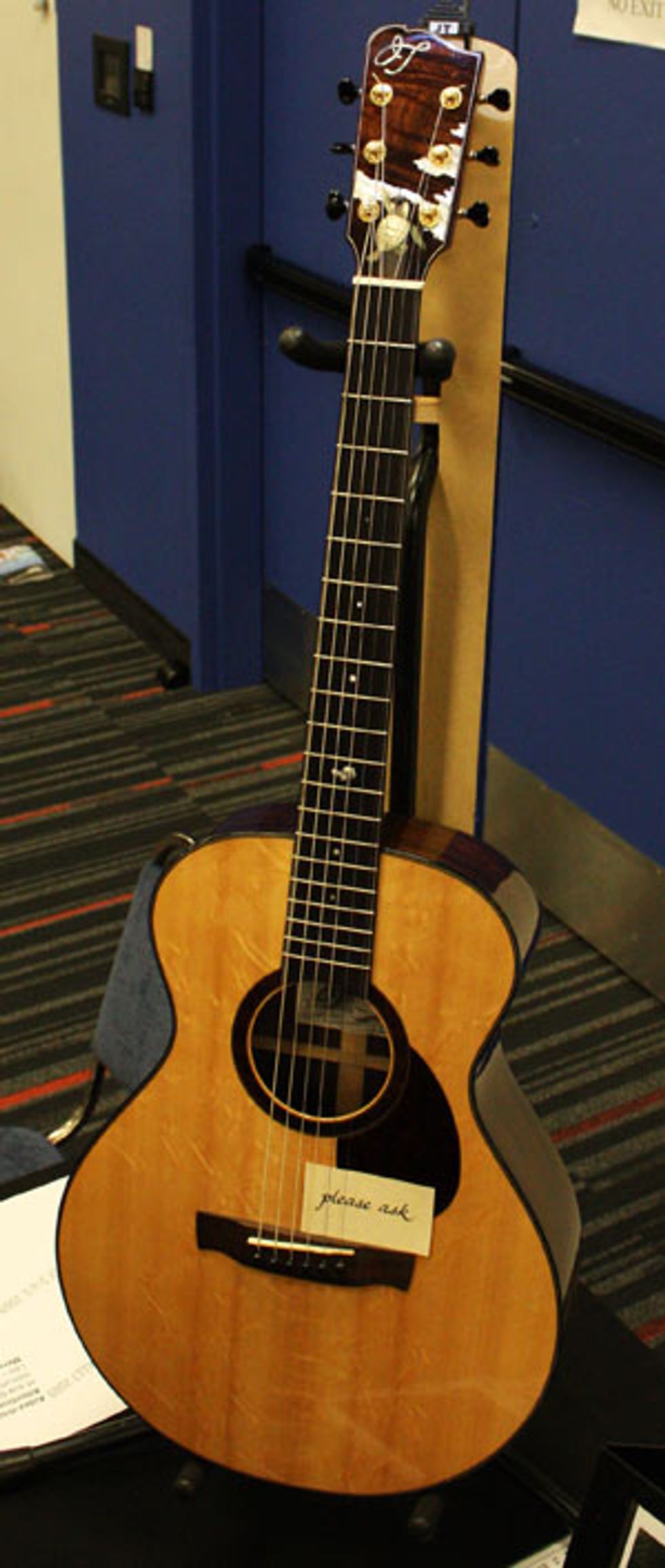 | 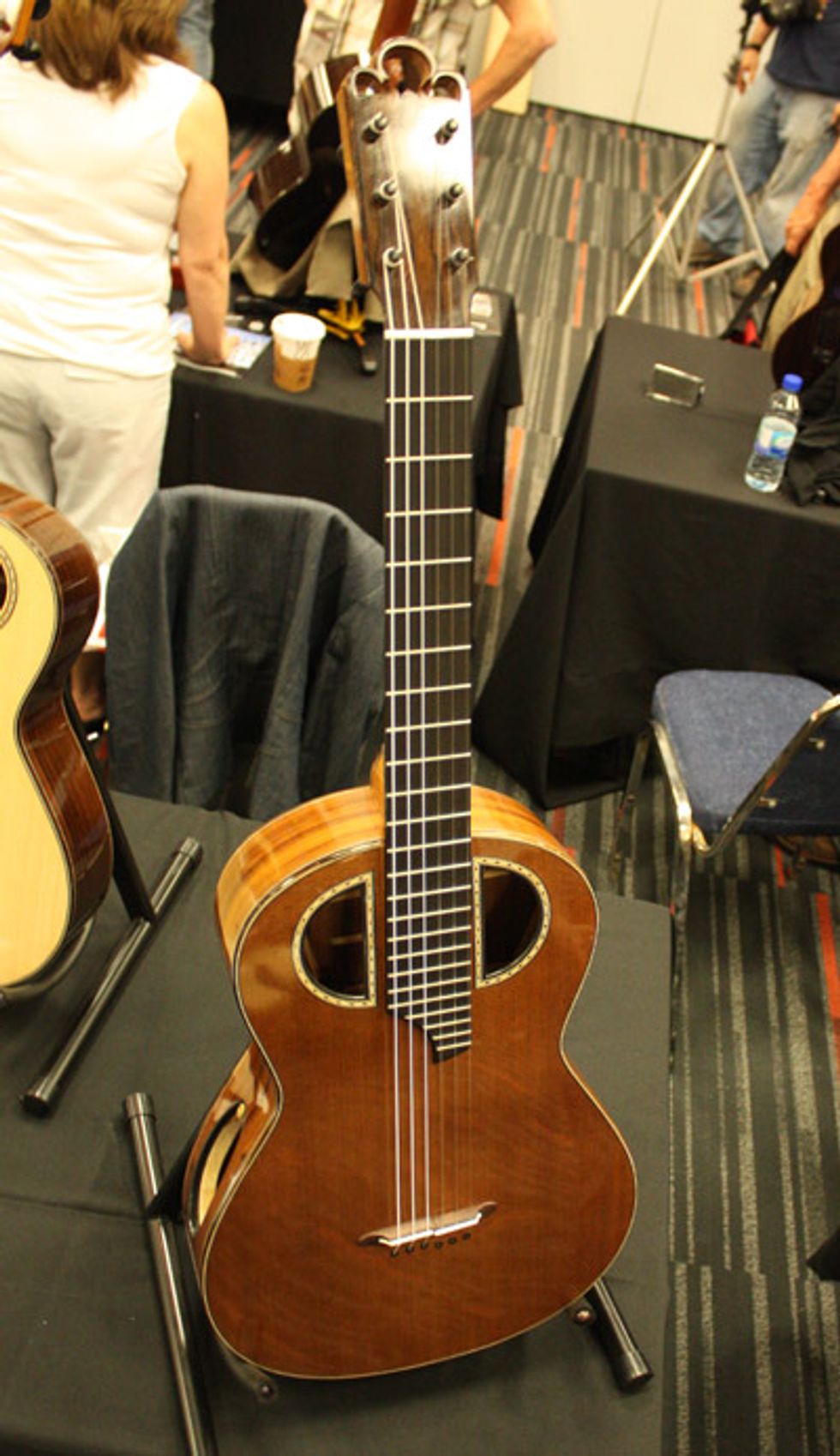 | 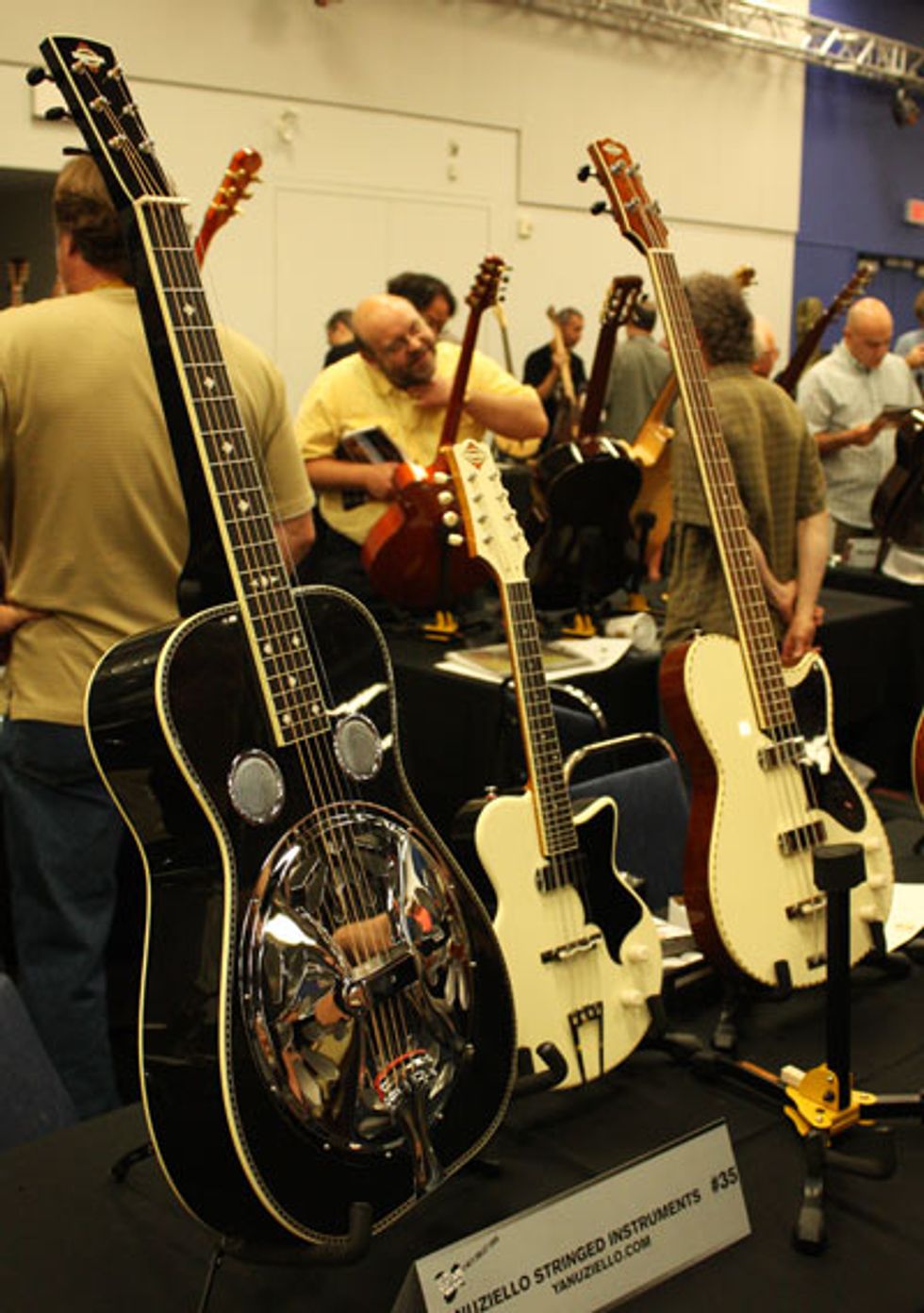 |
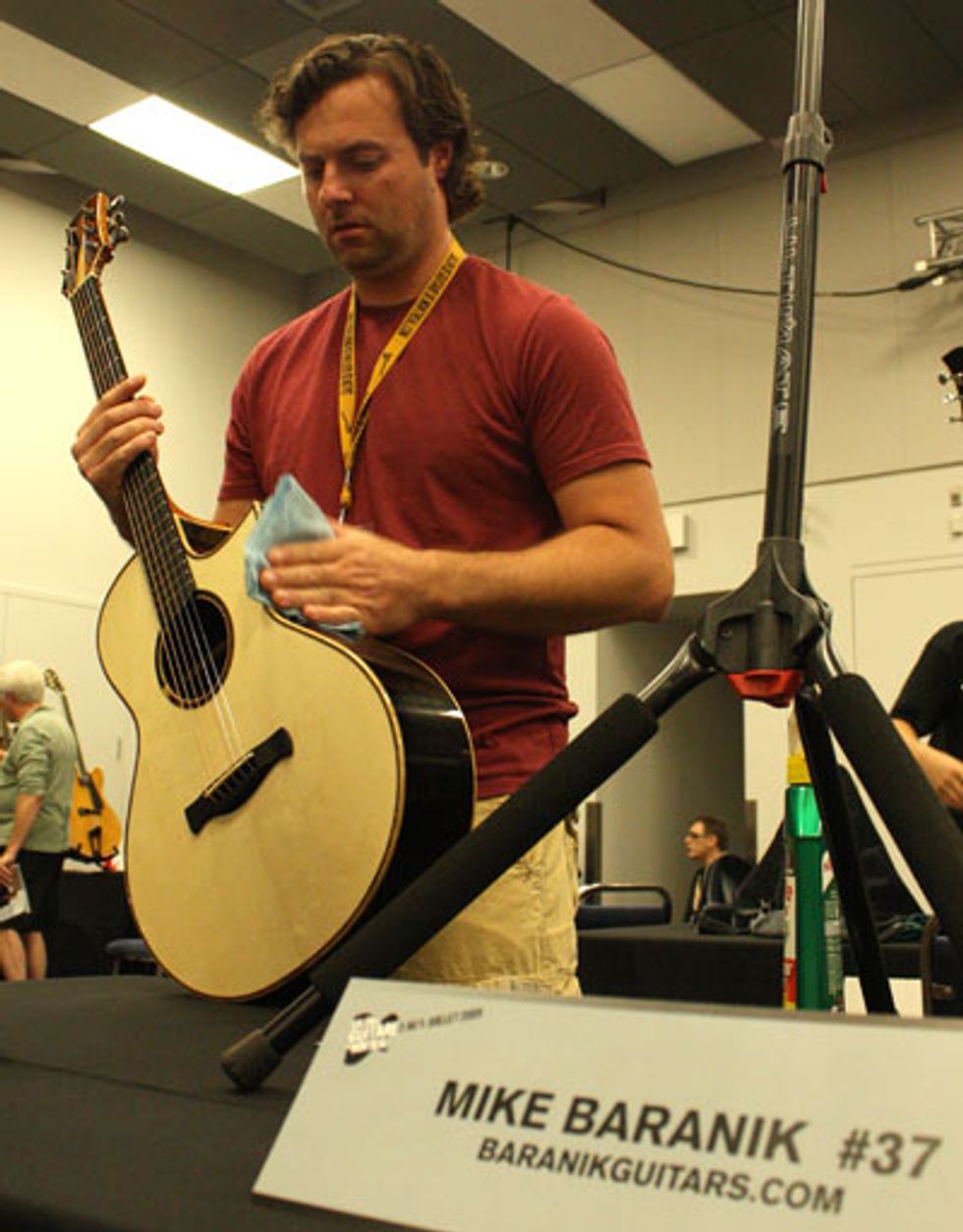
Mike Baranik uses exotic woods and innovative features to build guitars at his shop in California.
 |  |  |  |  |  |  |  |  |  |
 |  |  |  |  |  |  |  |  |  |
 |  |  |  |  |  |  |
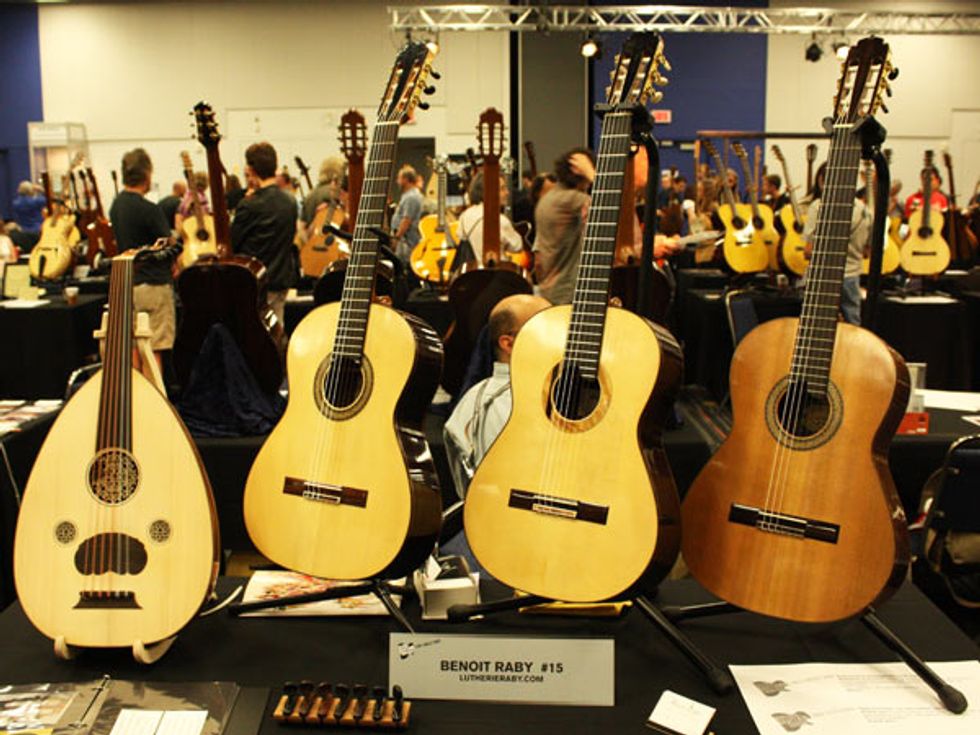
Canadian Benoit Raby specializes in the art of classical and flamenco guitar making, but also makes a fretless instrument known as the oud.
 |  |  |  |  |  |  |  |  |  |
 |  |  |  |  |  |  |  |  |  |
 |  |  |  |  |  |  |
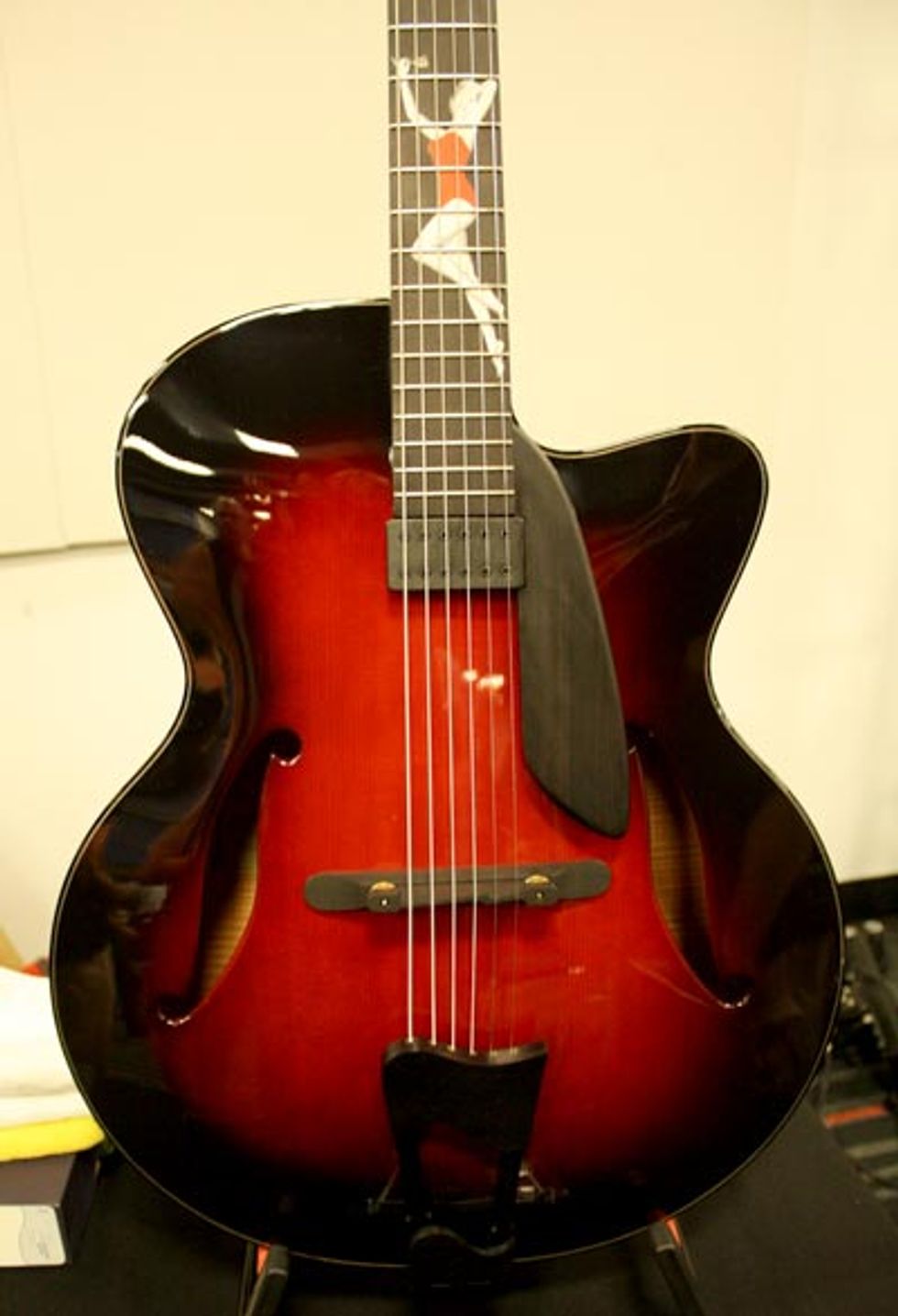
“The Black Cherry” by Montreal’s own Michael Greenfield, with inlay work by Larry Robinson, was also made for Jacques-André Dupont’s Red Guitar collection.
Video Interview
 |  |  |  |  |  |  |  |  |  |
 |  |  |  |  |  |  |  |  |  |
 |  |  |  |  |  |  |
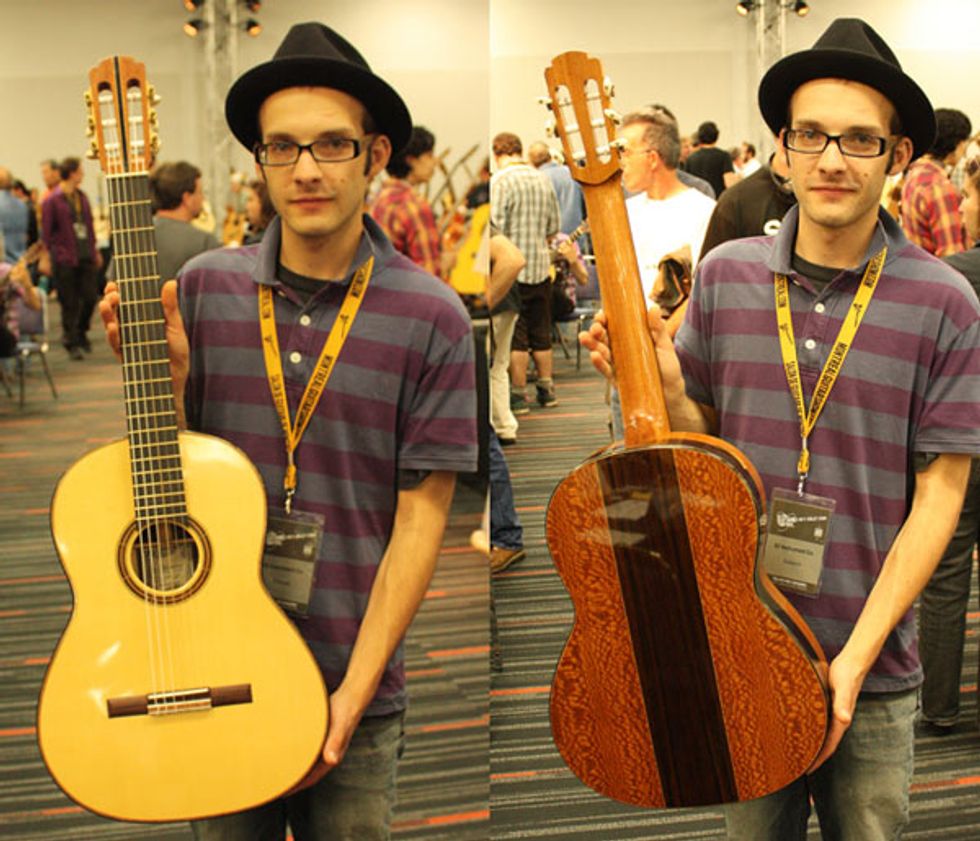
Canadian Jeremy Clark of 52 Instrument Company displays his penchant for yellow cedar and Indian rosewood.
 |  |  |  |  |  |  |  |  |  |
 |  |  |  |  |  |  |  |  |  |
 |  |  |  |  |  |  |
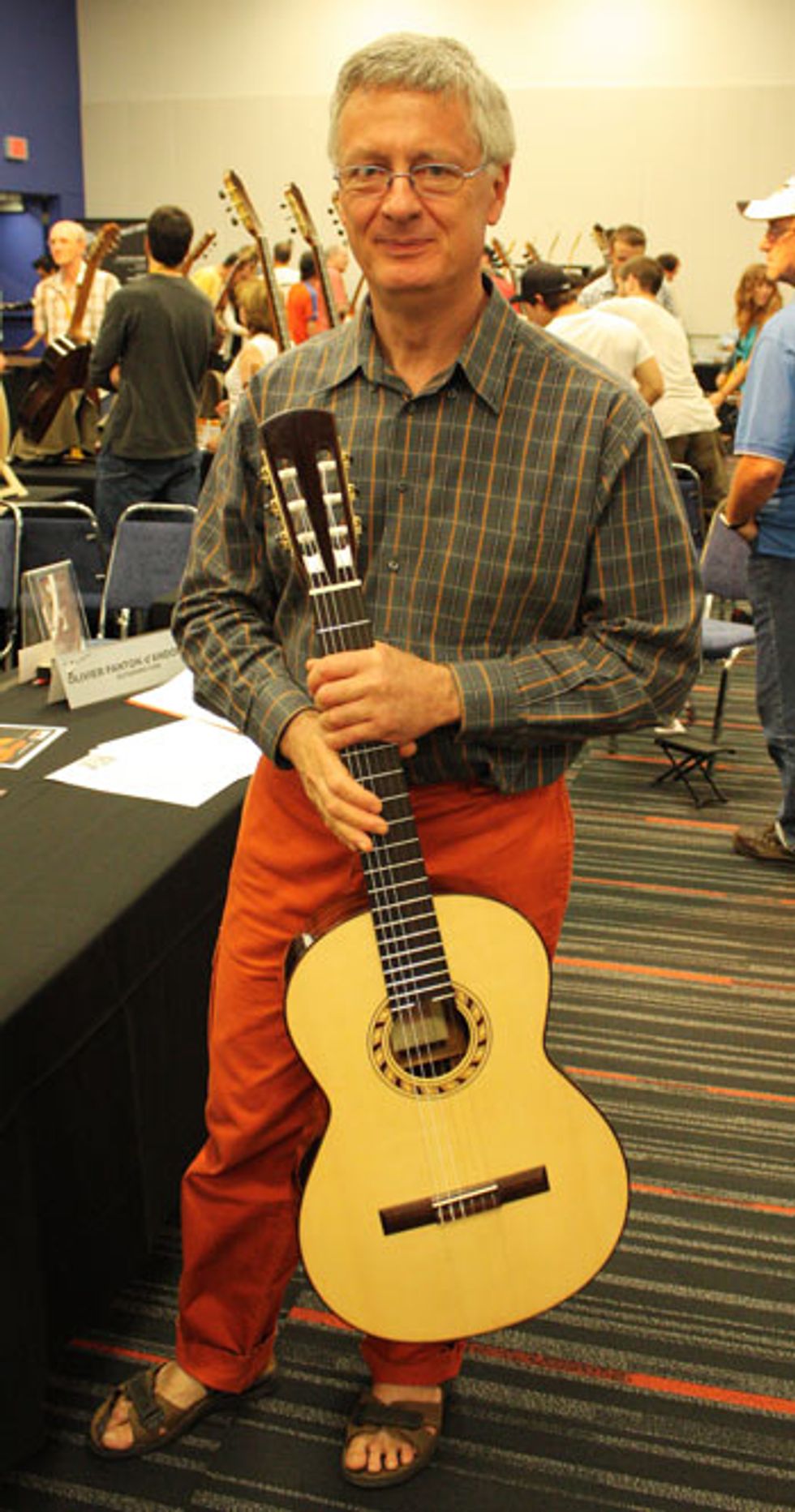
French self-taught luthier Olivier Fanton d’Andon is known for his elegant designs and balanced tones.
 |  |  |  |  |  |  |  |  |  |
 |  |  |  |  |  |  |  |  |  |
 |  |  |  |  |  |  |
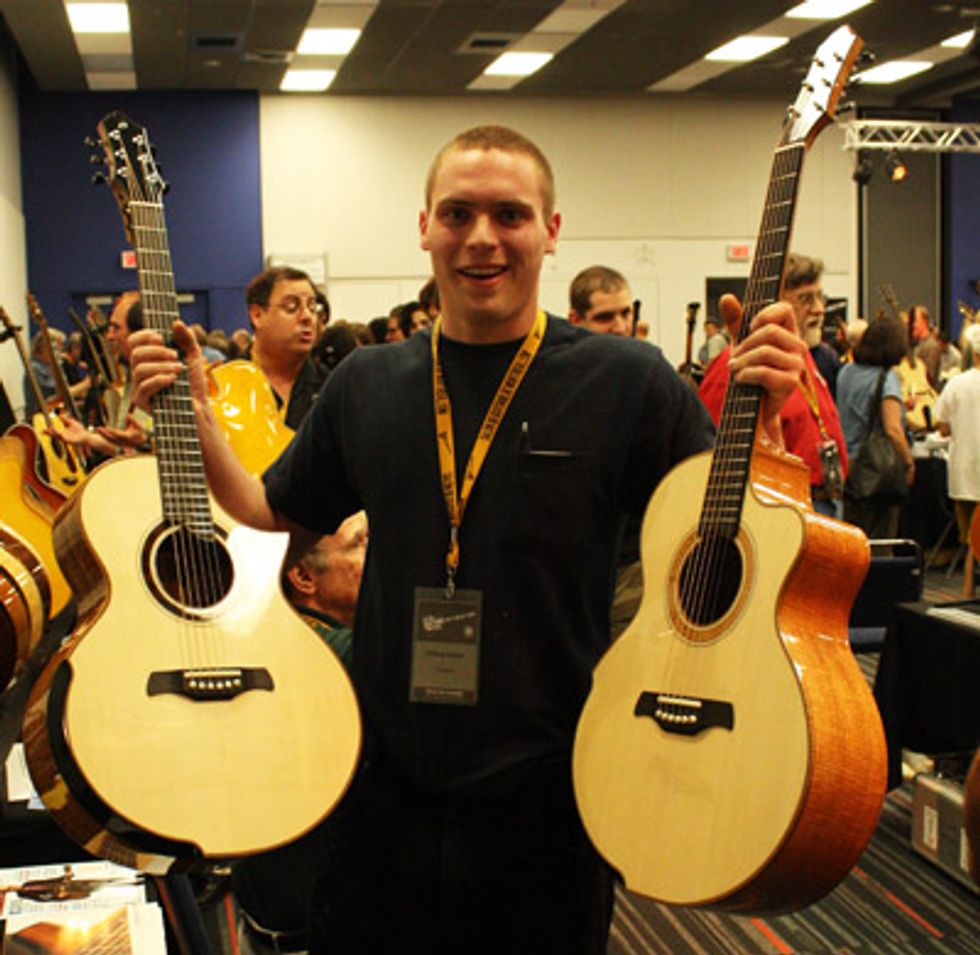
Galloup Guitars of Big Rapids, Michigan is a full service guitar facility where budding luthiers can learn the craft of guitar making. Custom guitars made at Galloup include small body guitars, baritones and everything inbetween.
 |  |  |  |  |  |  |  |  |  |
 |  |  |  |  |  |  |  |  |  |
 |  |  |  |  |  |  |
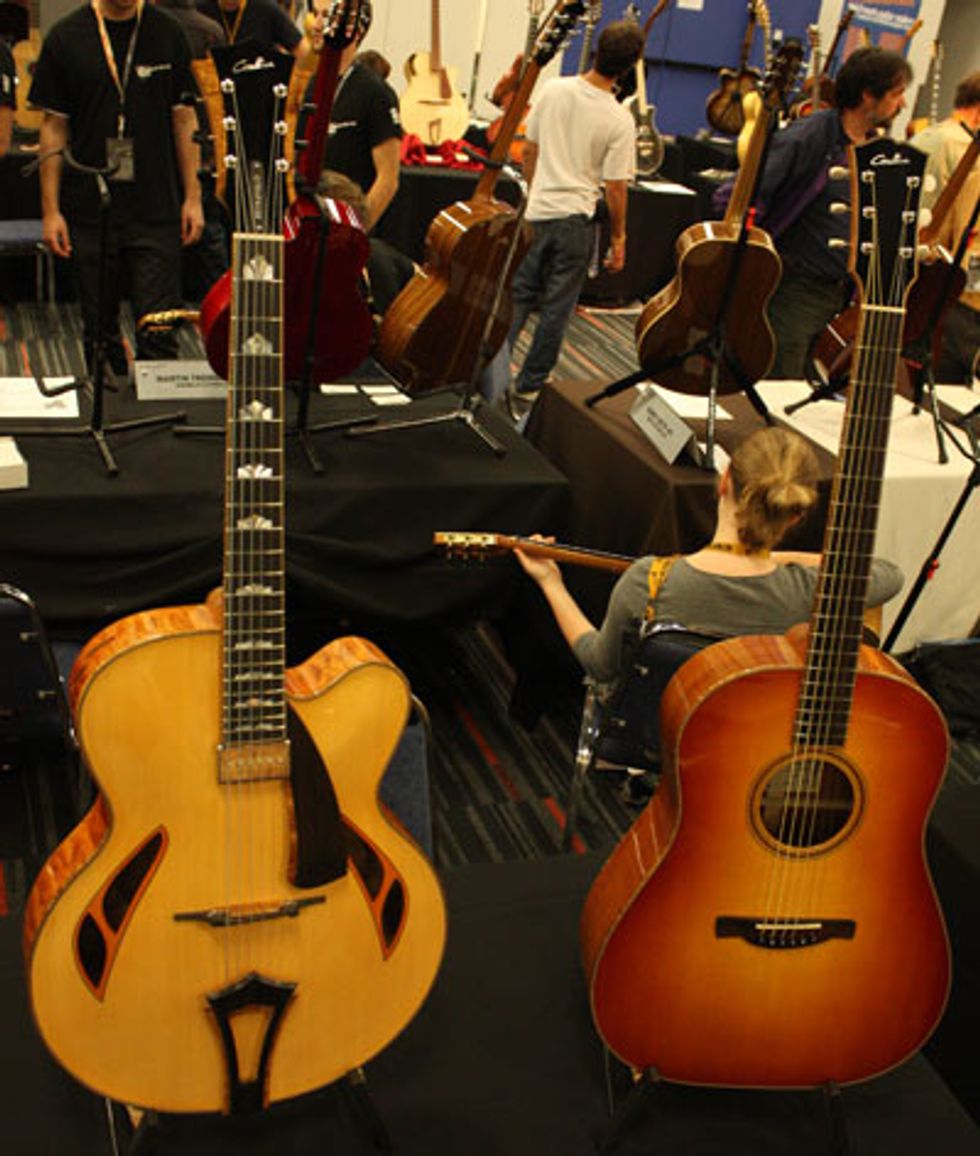
French luthier Christophe Grellier makes flat tops, archops and Weissenborns.
 |  |  |  |  |  |  |  |  |  |
 |  |  |  |  |  |  |  |  |  |
 |  |  |  |  |  |  |
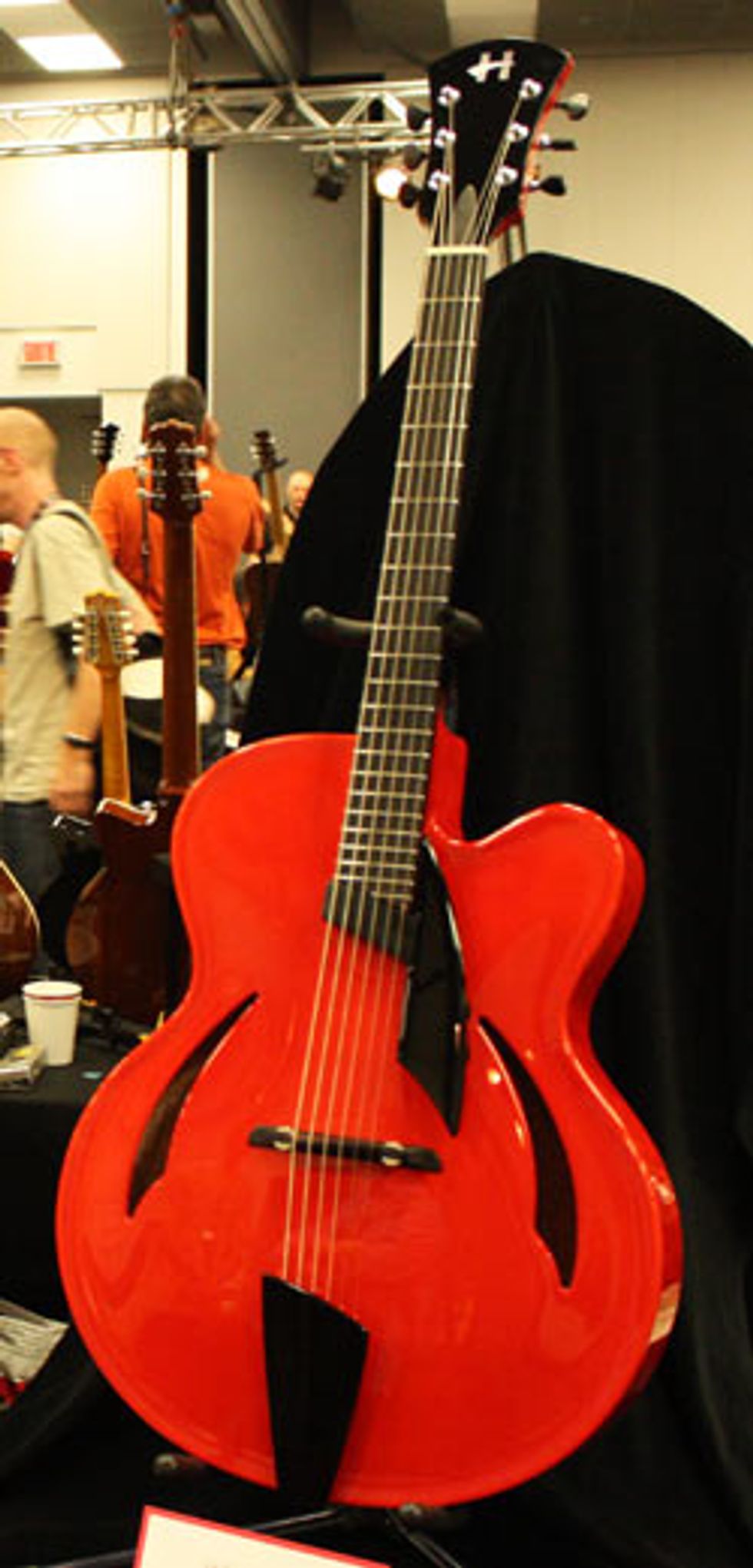
Canadian Peter Hopkins is known for his modern interpretations of the archtop. Here is the “Red Tessa Nova” Jacques-Andre Dupont commissioned for the Red Archtop collection.
 |  |  |  |  |  |  |  |  |  |
 |  |  |  |  |  |  |  |  |  |
 |  |  |  |  |  |  |
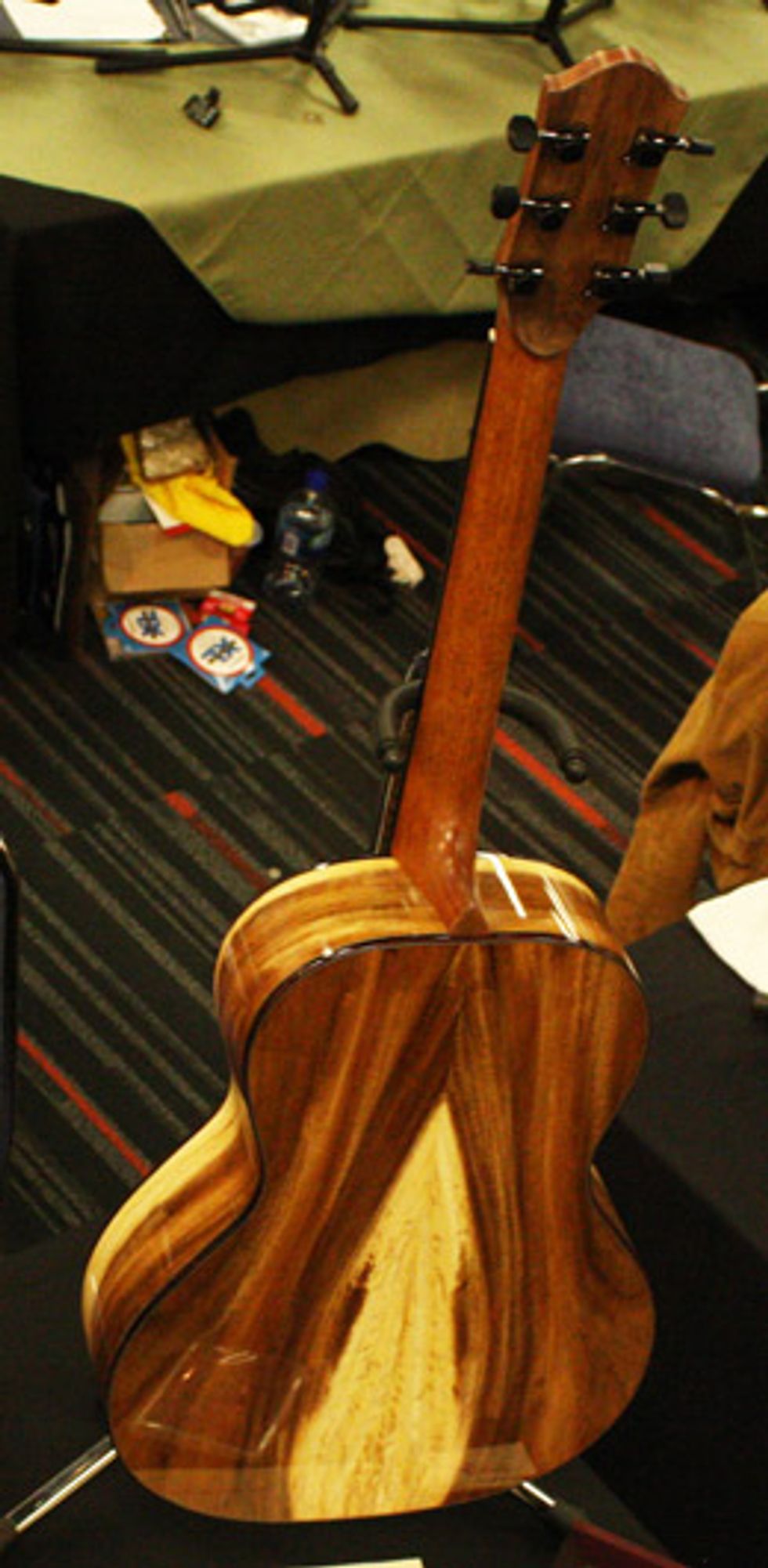
Candian luthier Josh House specializes in steel string flat tops. This Piedmont (L-00) Pro has a Monkey Pod back and sides.
 |  |  |  |  |  |  |  |  |  |
 |  |  |  |  |  |  |  |  |  |
 |  |  |  |  |  |  |
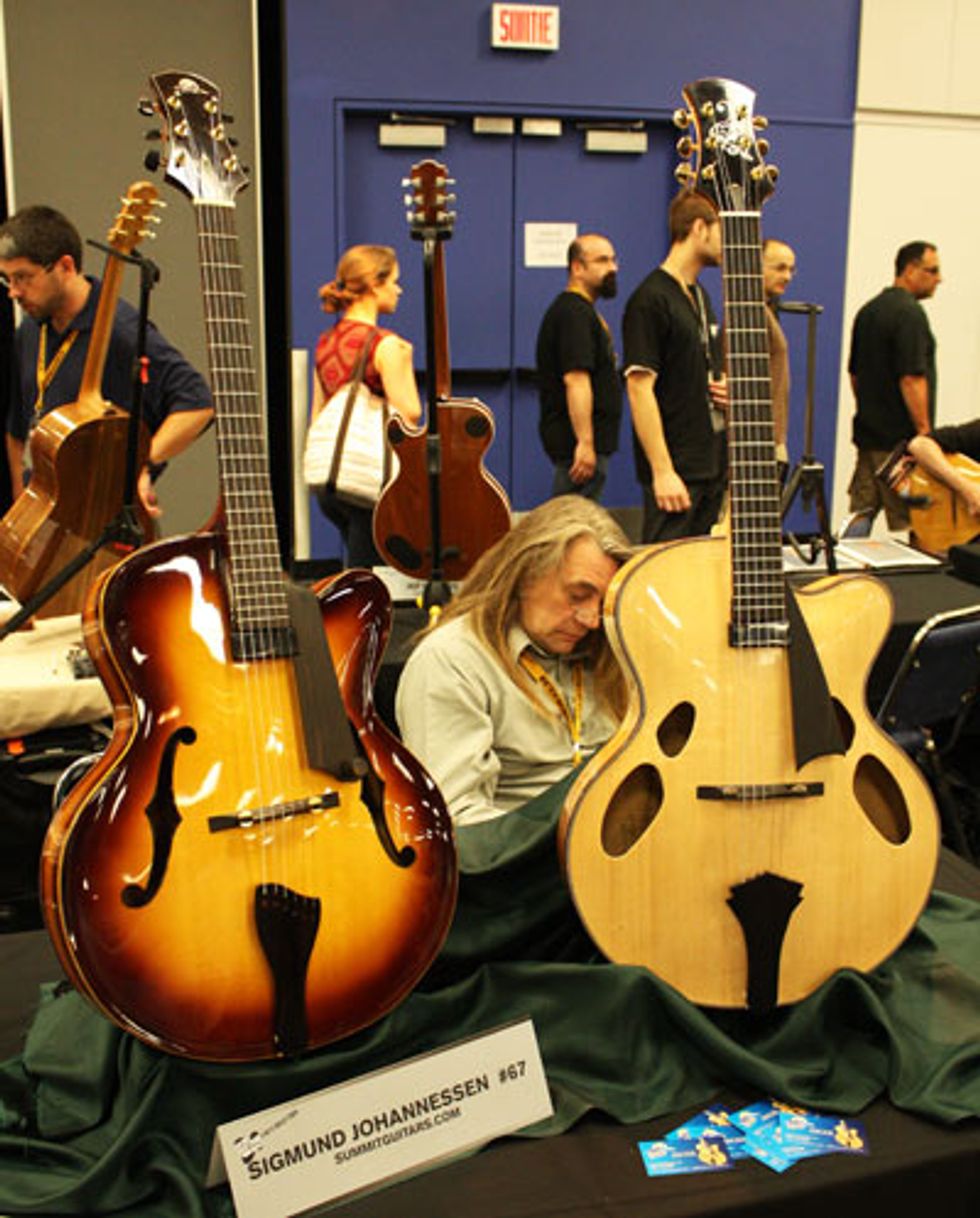
Sigmund Johannessen is a Norwegian who immigrated to Canada. He specializes in hand-carved archtops.
 |  |  |  |  |  |  |  |  |  |
 |  |  |  |  |  |  |  |  |  |
 |  |  |  |  |  |  |
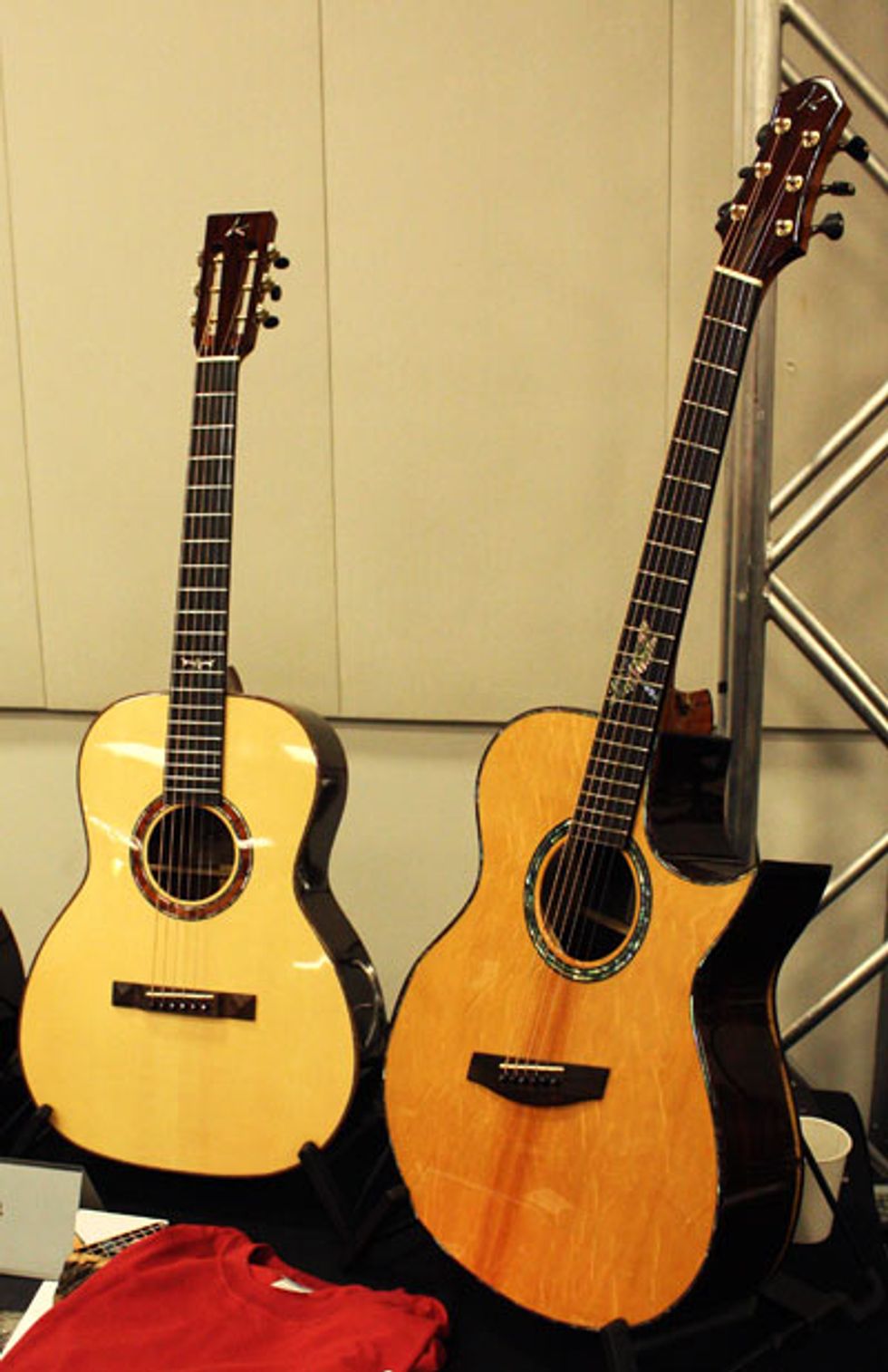
Canadian luthier Tony Karol builds custom guitars at his shop in Mississauga.
 |  |  |  |  |  |  |  |  |  |
 |  |  |  |  |  |  |  |  |  |
 |  |  |  |  |  |  |
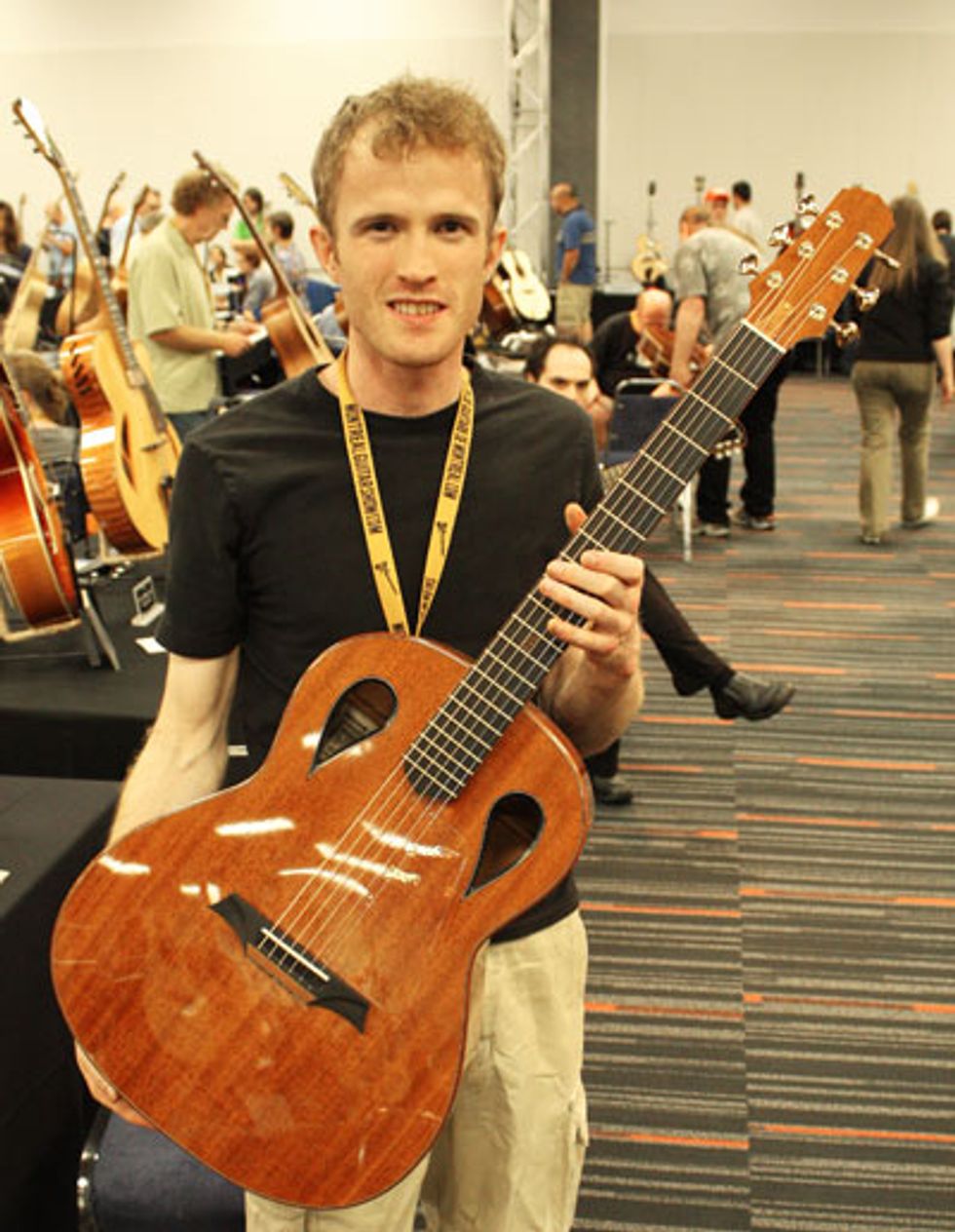
Canadian Michael Kennedy is making guitars under the Indian Hill Guitar Company name. Kennedy completed a three-year apprenticeship with master luthier Sergei de Jonge.
 |  |  |  |  |  |  |  |  |  |
 |  |  |  |  |  |  |  |  |  |
 |  |  |  |  |  |  |
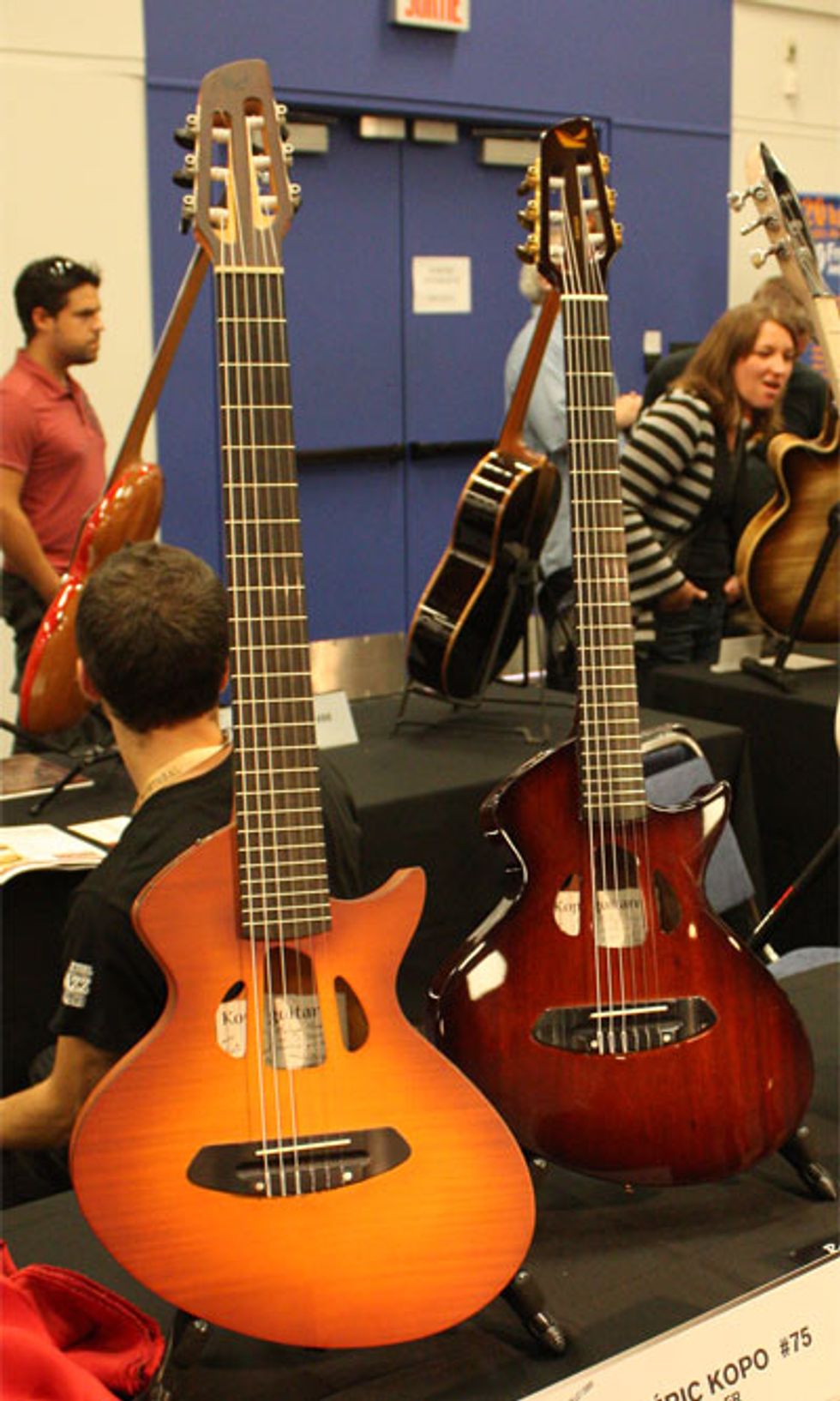
Kopo’s Fred Pons uses wood, carbon- and metal-based materials to create unique, ergonomic instruments, including these Malaga models.
 |  |  |  |  |  |  |  |  |  |
 |  |  |  |  |  |  |  |  |  |
 |  |  |  |  |  |  |
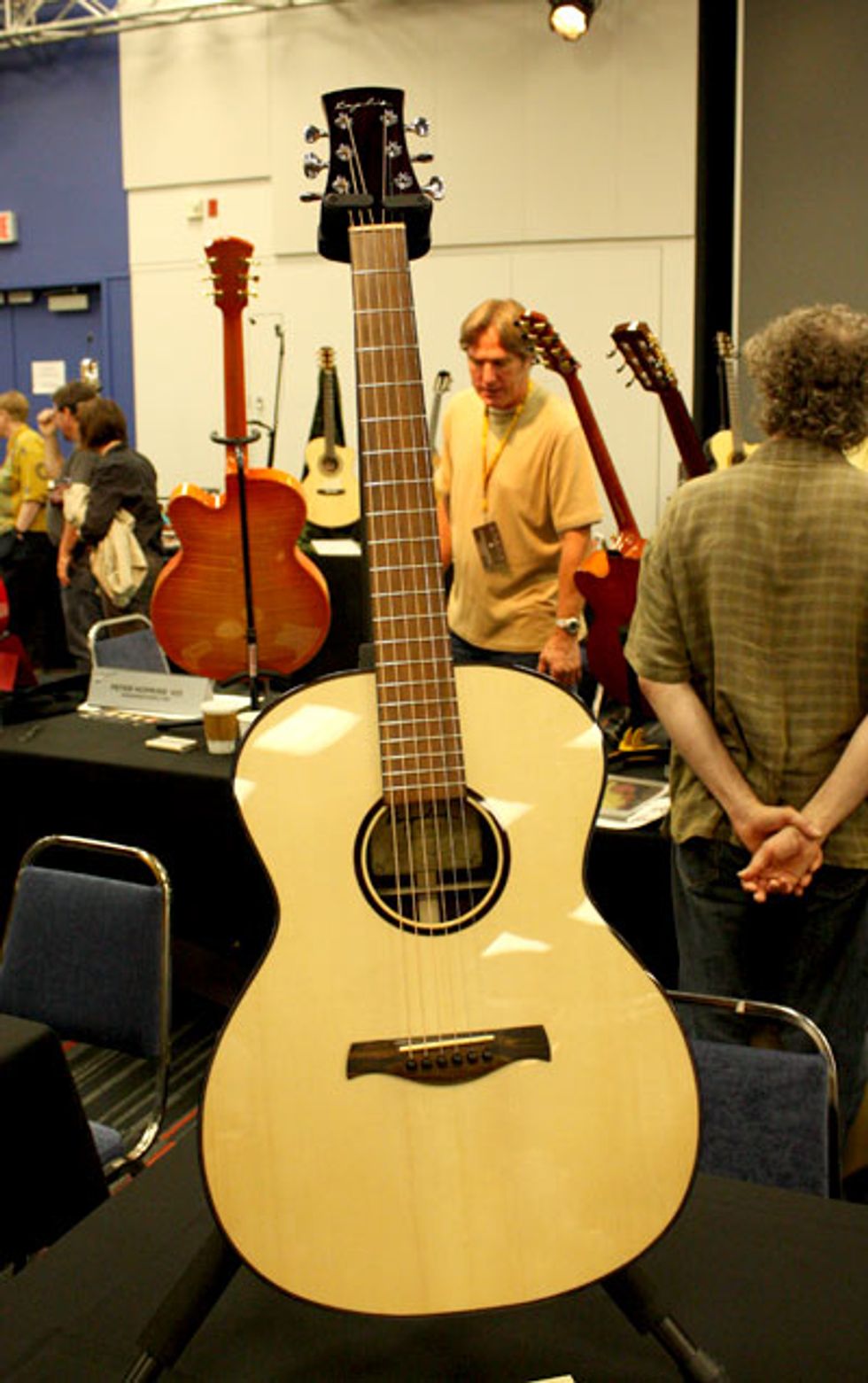
Lance Kragenbrink specializes in contemporary fingerstyle guitars, which he builds in his Vandercook Lake, MI, studio. This is his OM Fingerstylist.
 |  |  |  |  |  |  |  |  |  |
 |  |  |  |  |  |  |  |  |  |
 |  |  |  |  |  |  |
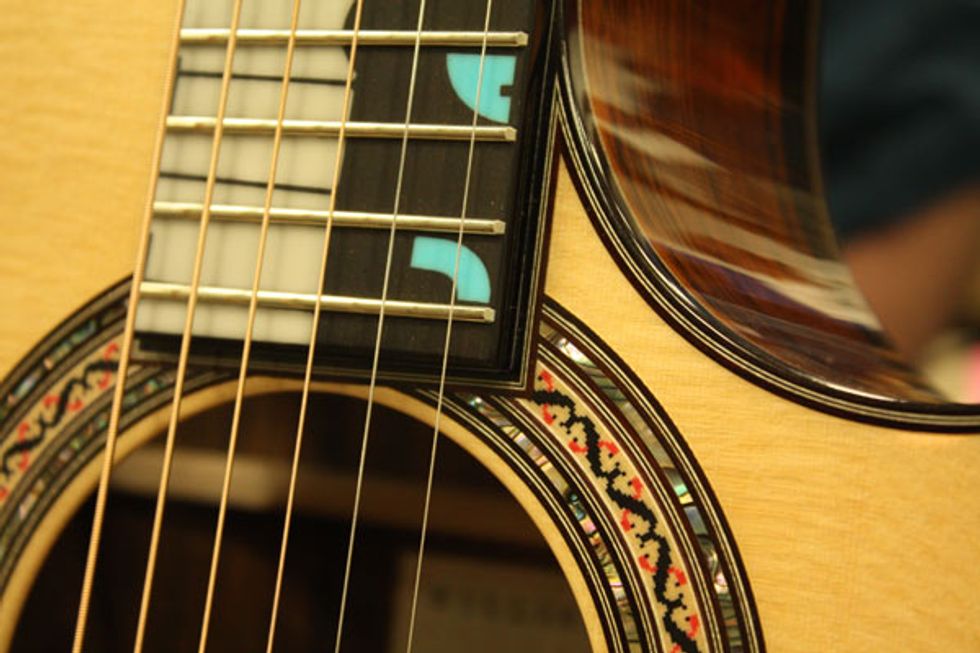
Canadian William “Grit” Laskin is the only instrument maker to have received Canada’s highest craft honor, the Saidye Bronfman Award For Excellence. Here is a close-up of Laskin’s “JATP 49,” his tribute to Oscar Peterson.
 |  |  |  |  |  |  |  |  |  |
 |  |  |  |  |  |  |  |  |  |
 |  |  |  |  |  |  |
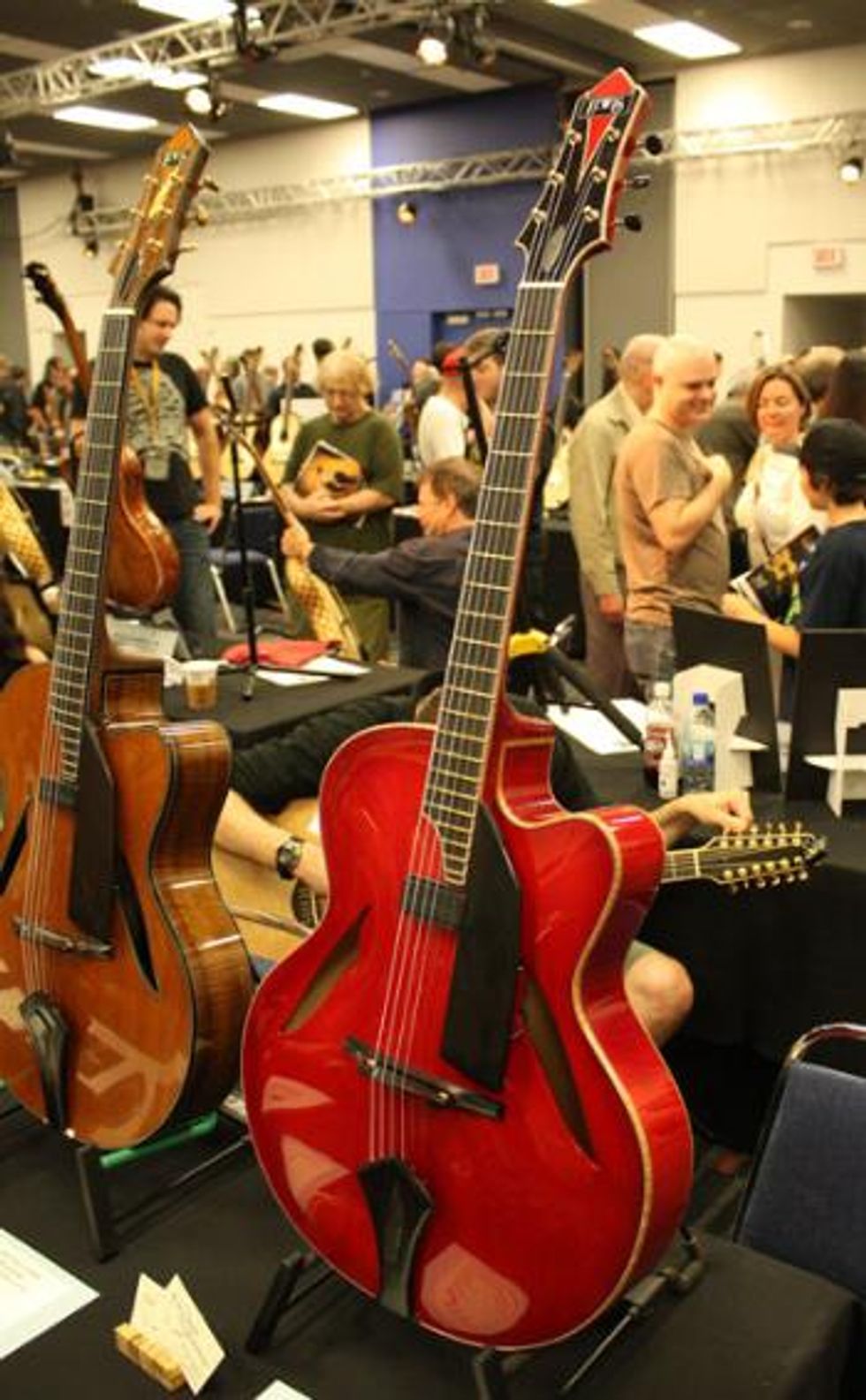
In addition to building Gibson-style mandolins and D’Angelico replicas, Michael Lewis makes archtops of his own design. This one, “La Petite Rougette” is part of Jacques-André Dupont’s Red Guitar collection.
 |  |  |  |  |  |  |  |  |  |
 |  |  |  |  |  |  |  |  |  |
 |  |  |  |  |  |  |
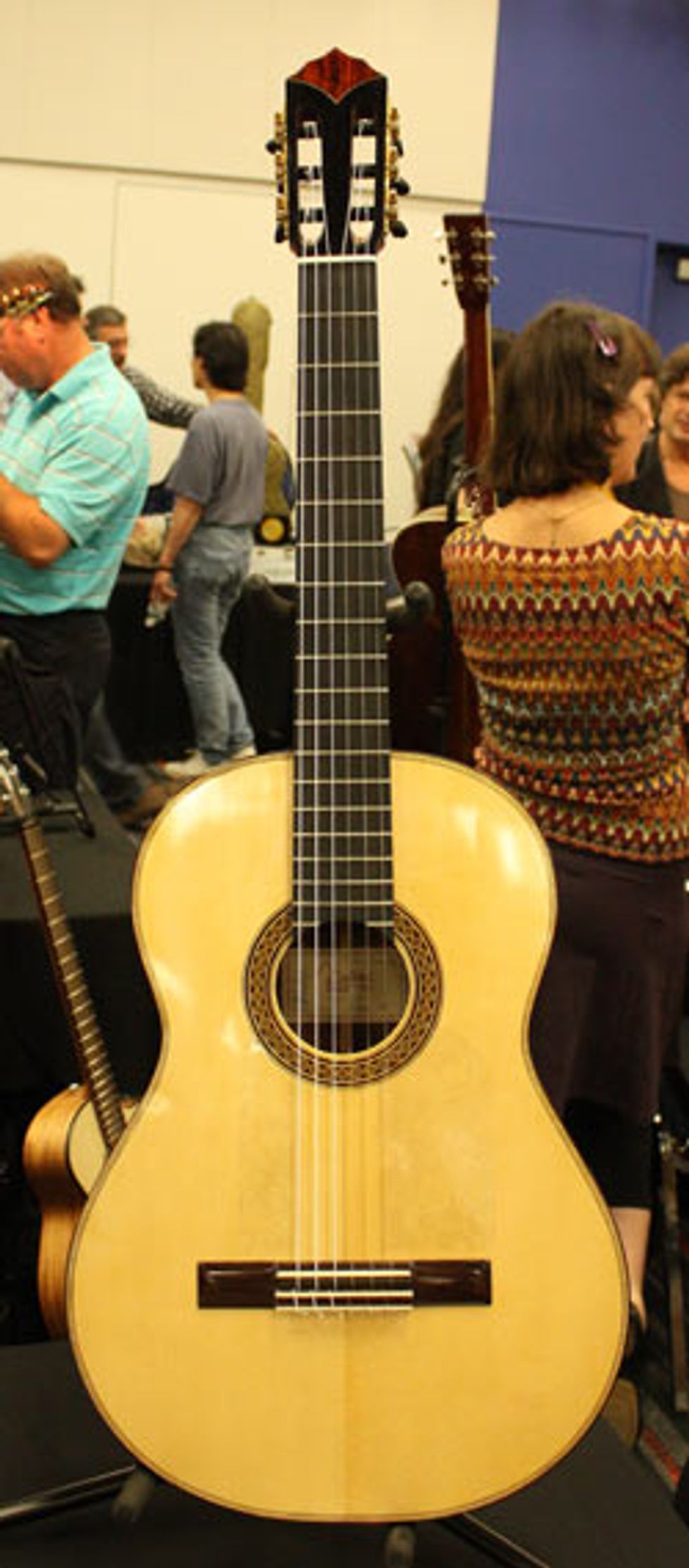
Patrick Mailloux of Canada makes high-end classical and romantic guitars. This model has an Engelman Spruce top and cocobolo back and sides.
 |  |  |  |  |  |  |  |  |  |
 |  |  |  |  |  |  |  |  |  |
 |  |  |  |  |  |  |
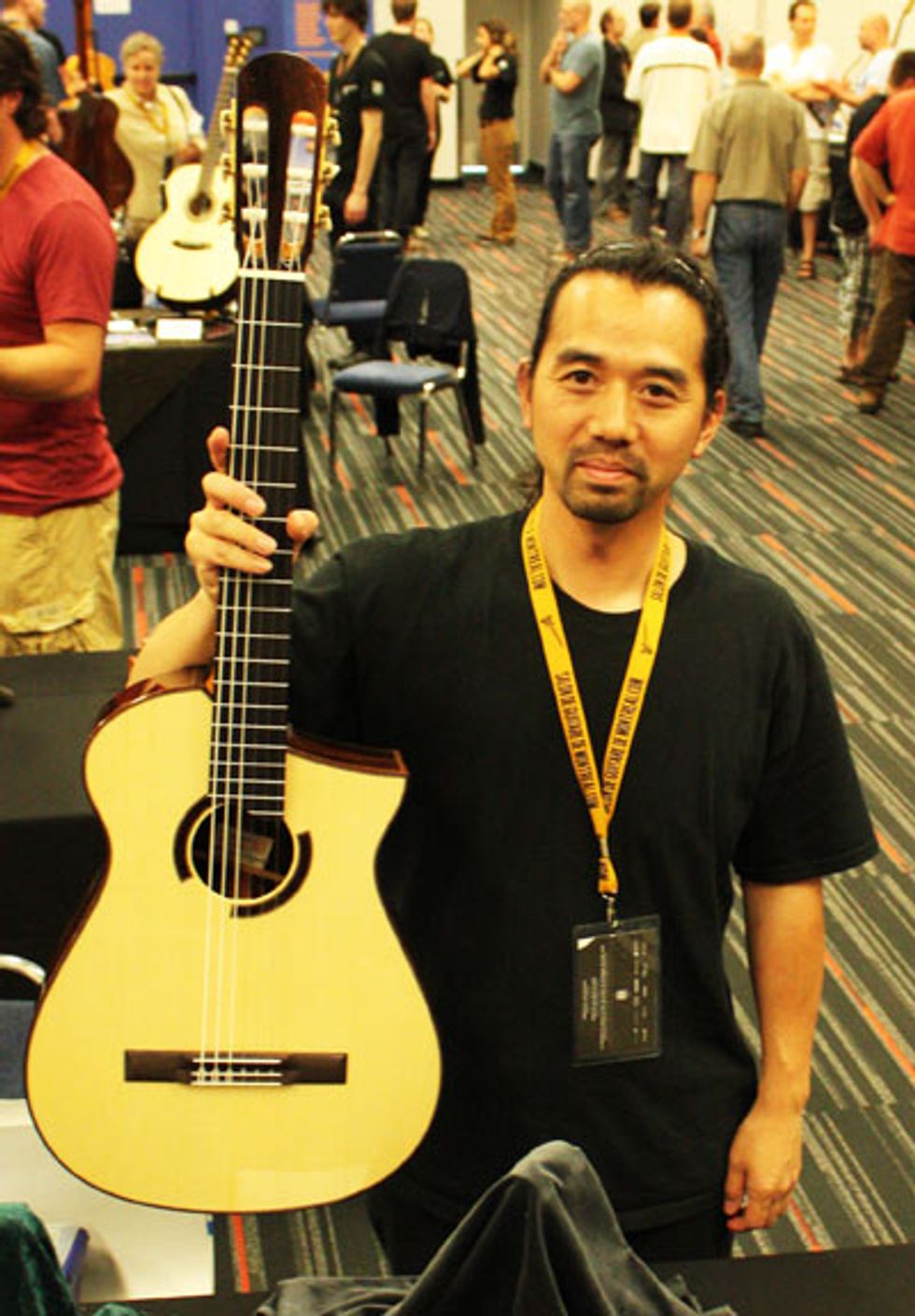
Japanese luthier Michihiro Matsuda turned heads with his innovative designs. Matsuda studied under Ervin Somogyi and Frank Ford.
 |  |  |  |  |  |  |  |  |  |
 |  |  |  |  |  |  |  |  |  |
 |  |  |  |  |  |  |
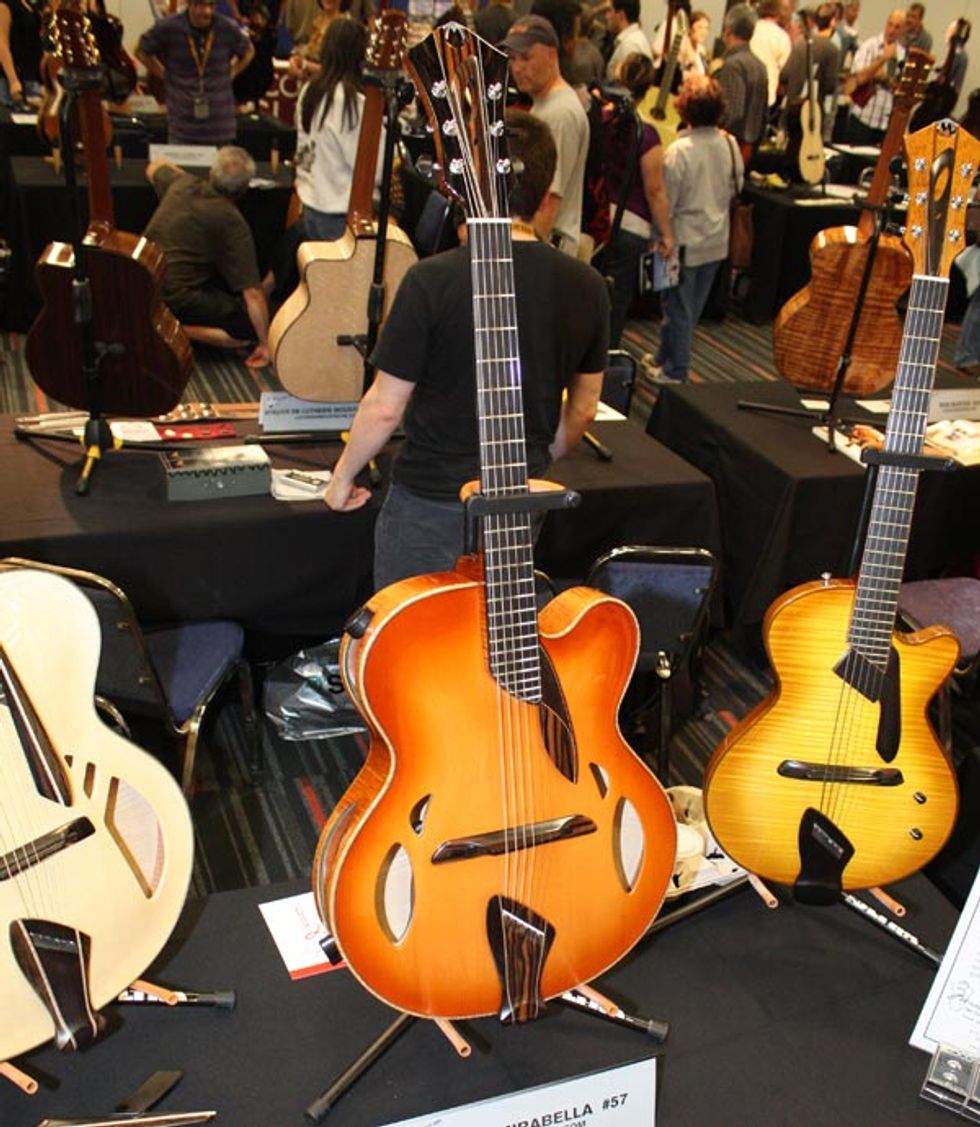
New York’s Christian Mirabella is a top restorer of vintage archtops. His Trap Door guitar features sliding doors to alter the acoustic properties of the instrument.
 |  |  |  |  |  |  |  |  |  |
 |  |  |  |  |  |  |  |  |  |
 |  |  |  |  |  |  |
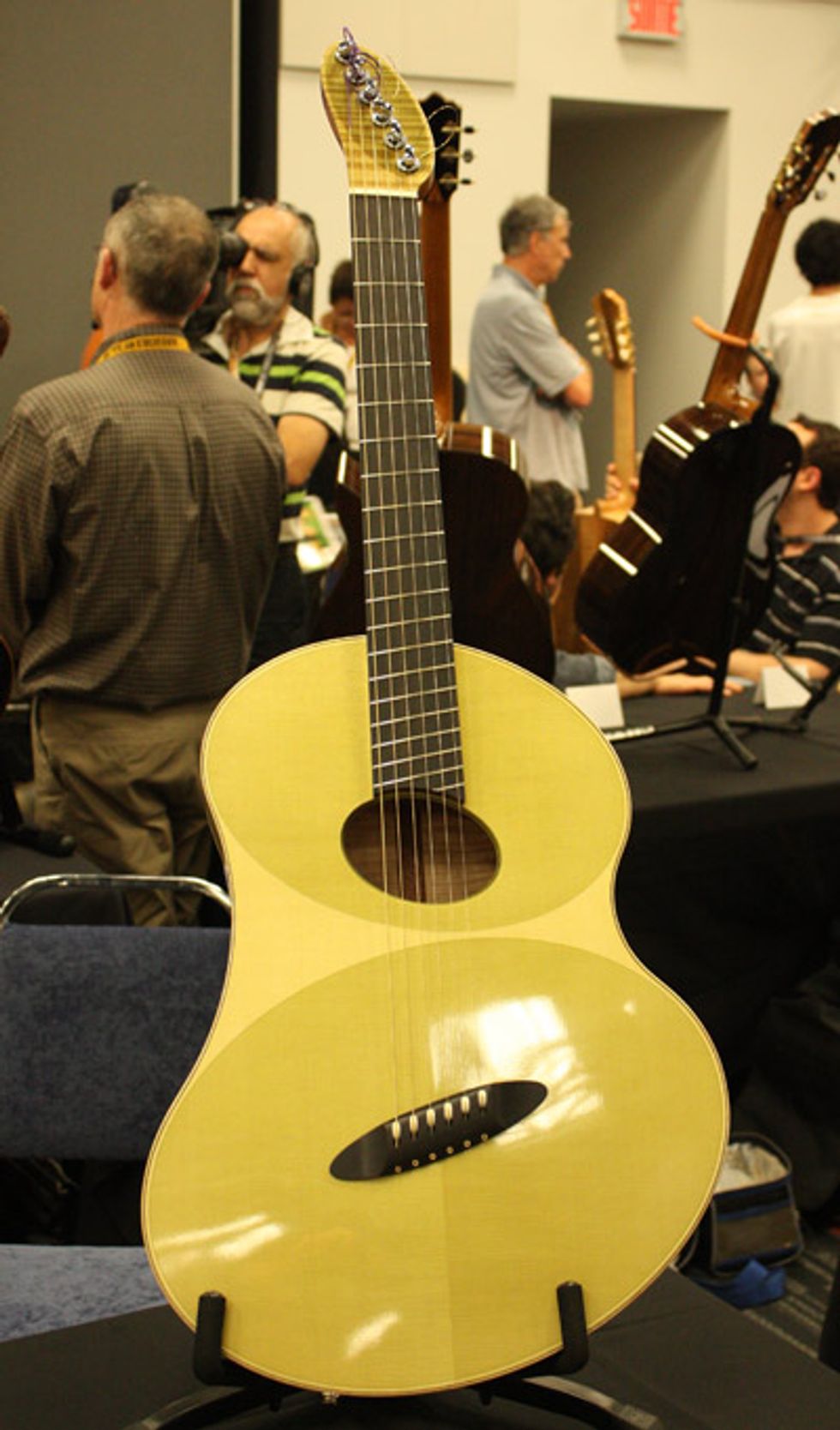
Edward Klein’s elliptical guitar project was supported by a grant from the Ontario Arts Council.
 |  |  |  |  |  |  |  |  |  |
 |  |  |  |  |  |  |  |  |  |
 |  |  |  |  |  |  |
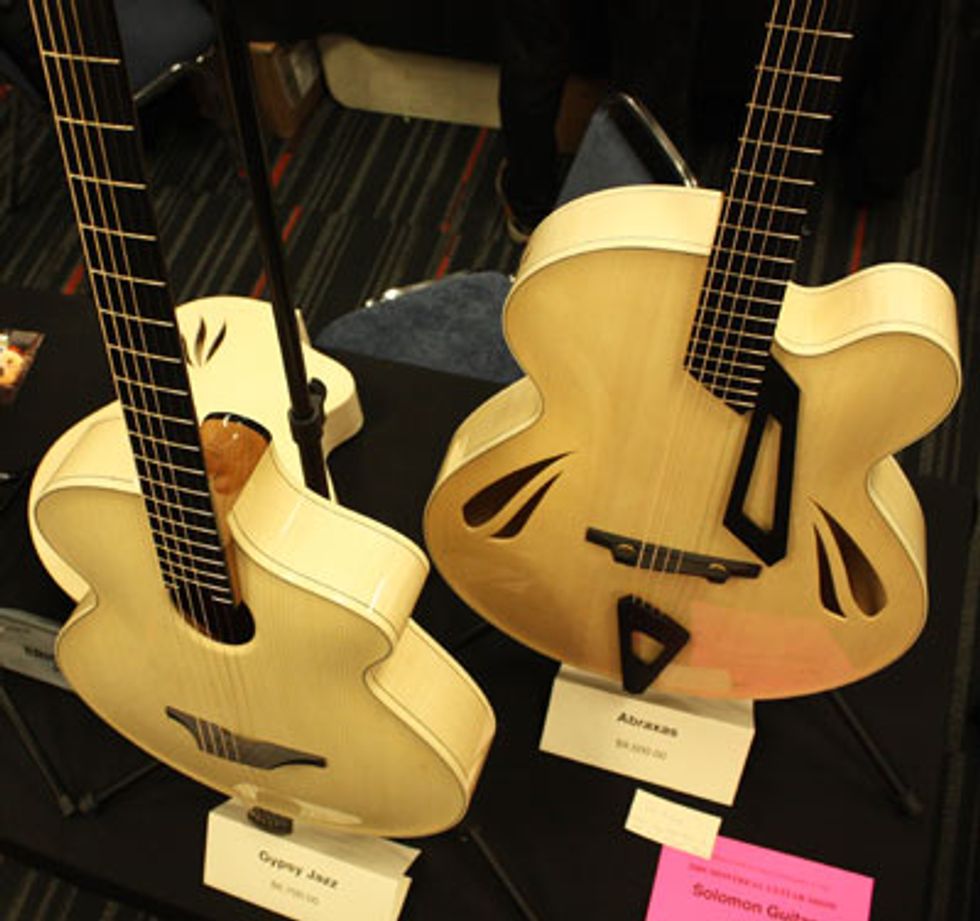
Erich Soloman uses European spruce and European maple to build guitars one at a time in Epping, New Hampshire.
 |  |  |  |  |  |  |  |  |  |
 |  |  |  |  |  |  |  |  |  |
 |  |  |  |  |  |  |
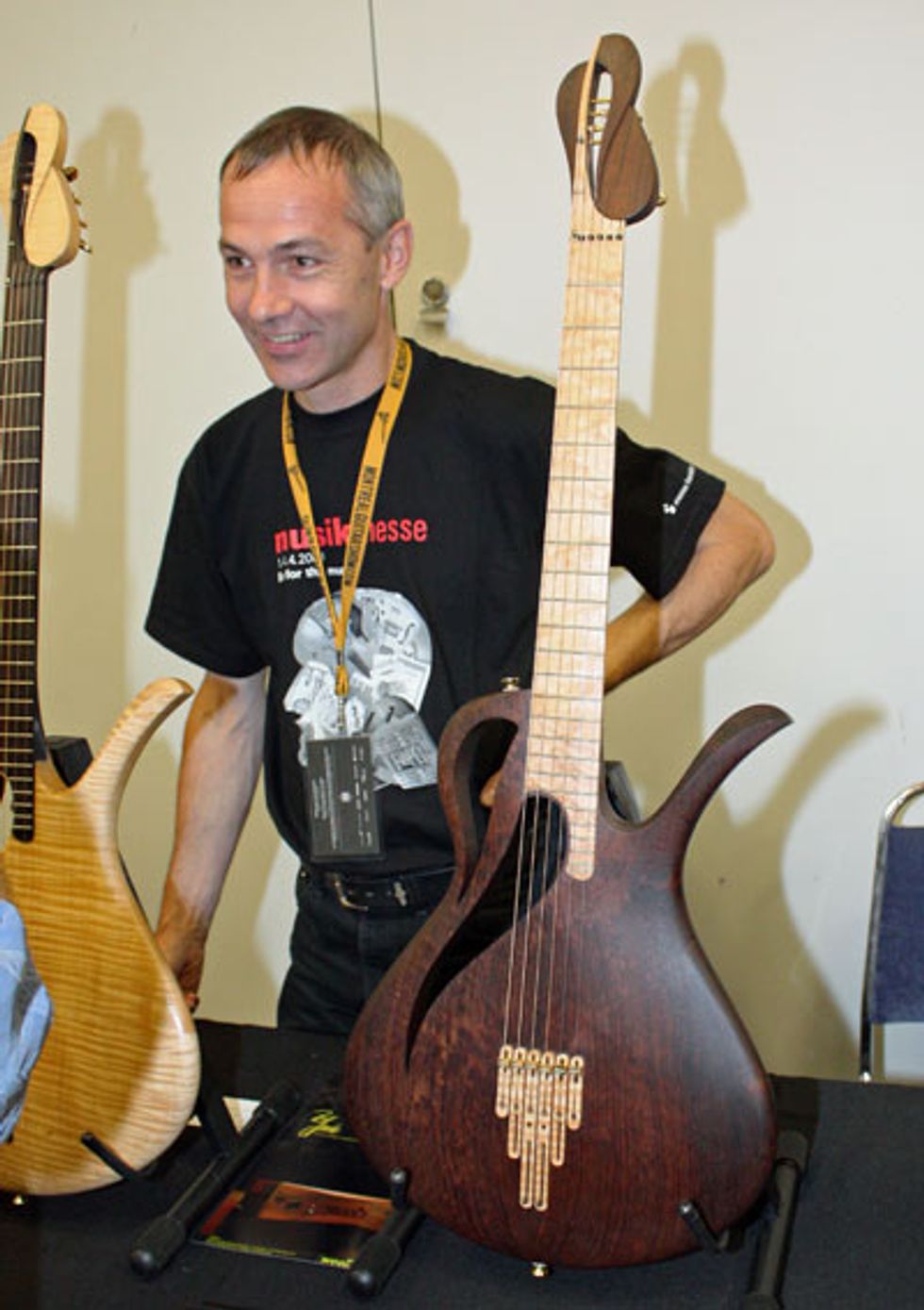
Rolf Spuler is a Swiss-based luthier and engineer. He is shown here with his Paradis models, which are equipped with his proprietary undersaddle pickup system.
 |  |  |  |  |  |  |  |  |  |
 |  |  |  |  |  |  |  |  |  |
 |  |  |  |  |  |  |
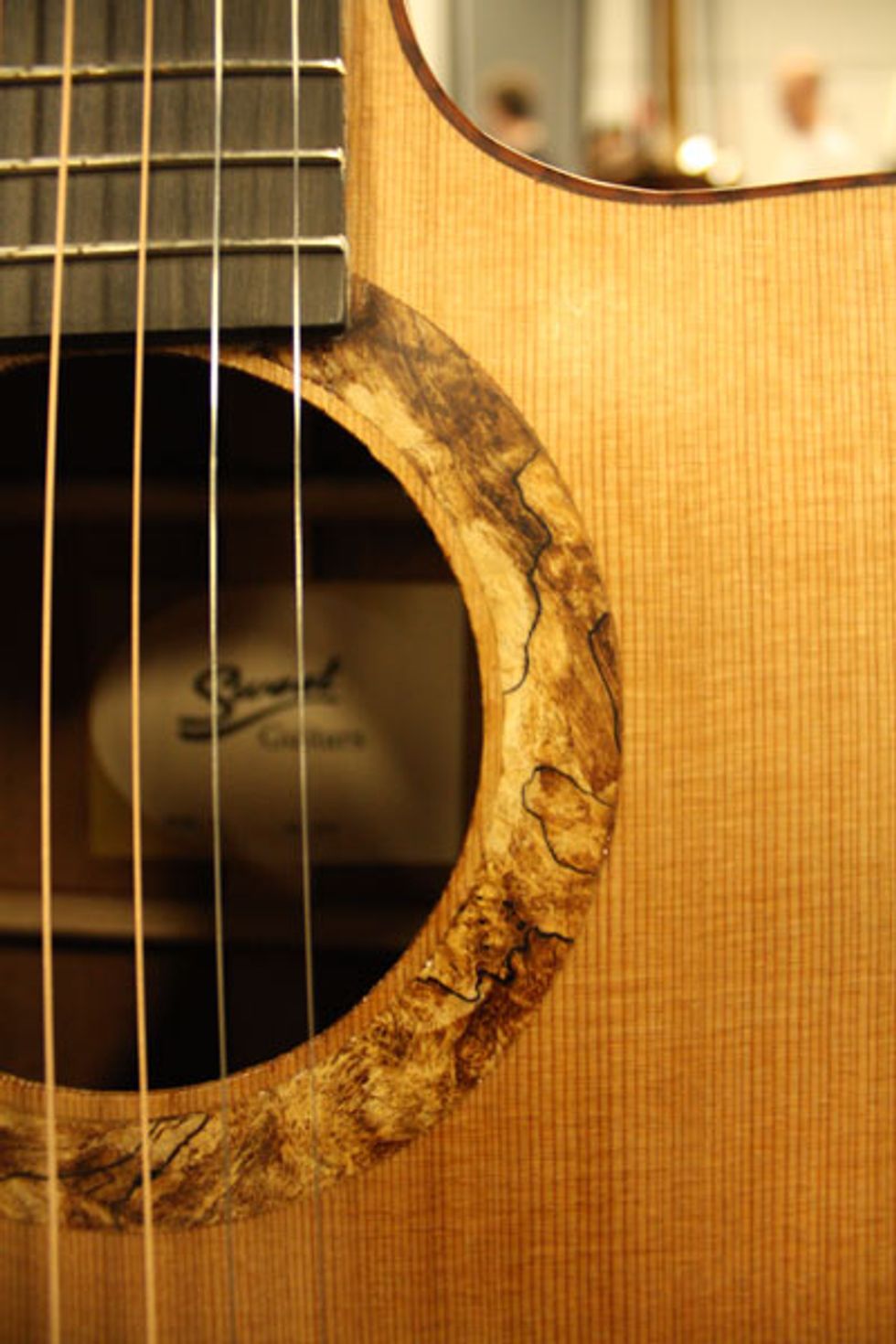
Talk about a Sweet Rosette! (Sorry, couldn’t resist) US luthier Blair Sweet uses choice woods for a balanced acoustic tone. Rosette options include wood designs, bwb lam and abalone.
 |  |  |  |  |  |  |  |  |  |
 |  |  |  |  |  |  |  |  |  |
 |  |  |  |  |  |  |
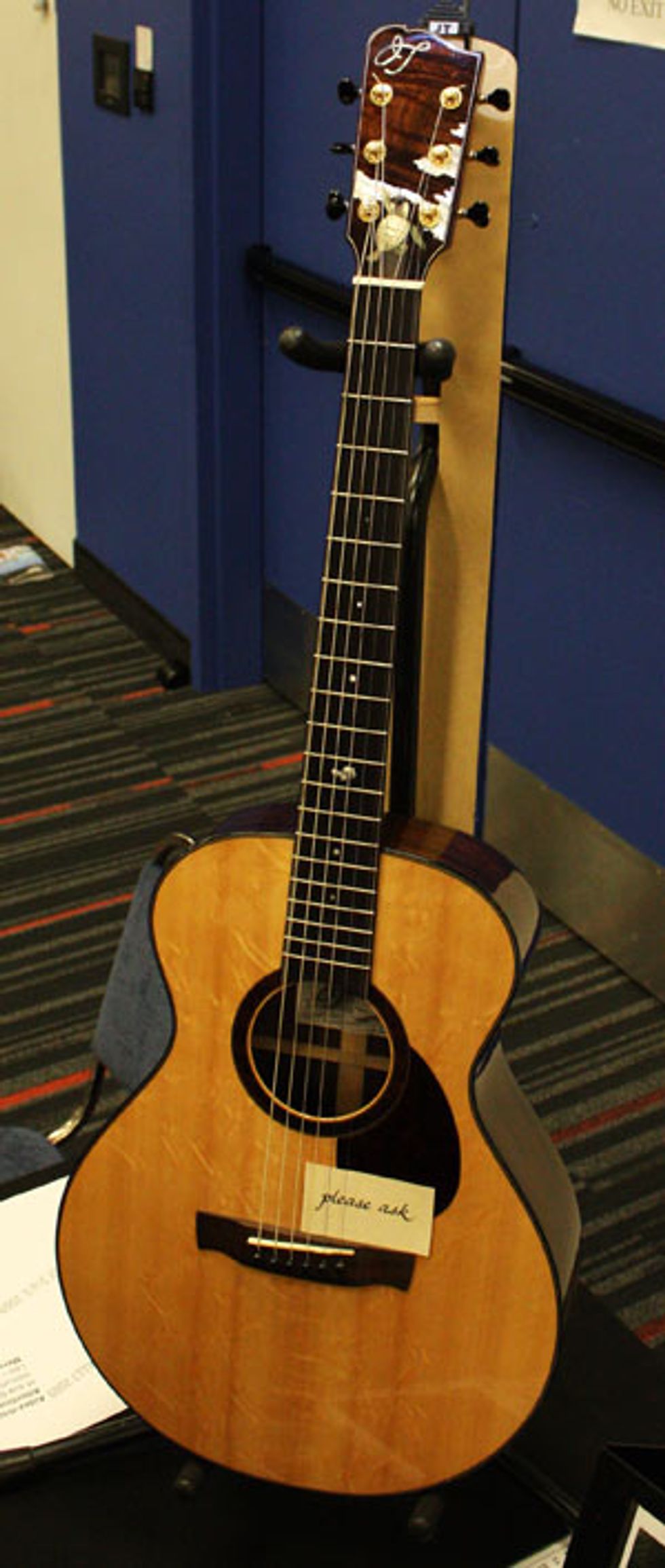
Canadian Judy Threet specializes in small-bodied guitars which she adorns with creative and life-like inlays. Video Interview
 |  |  |  |  |  |  |  |  |  |
 |  |  |  |  |  |  |  |  |  |
 |  |  |  |  |  |  |
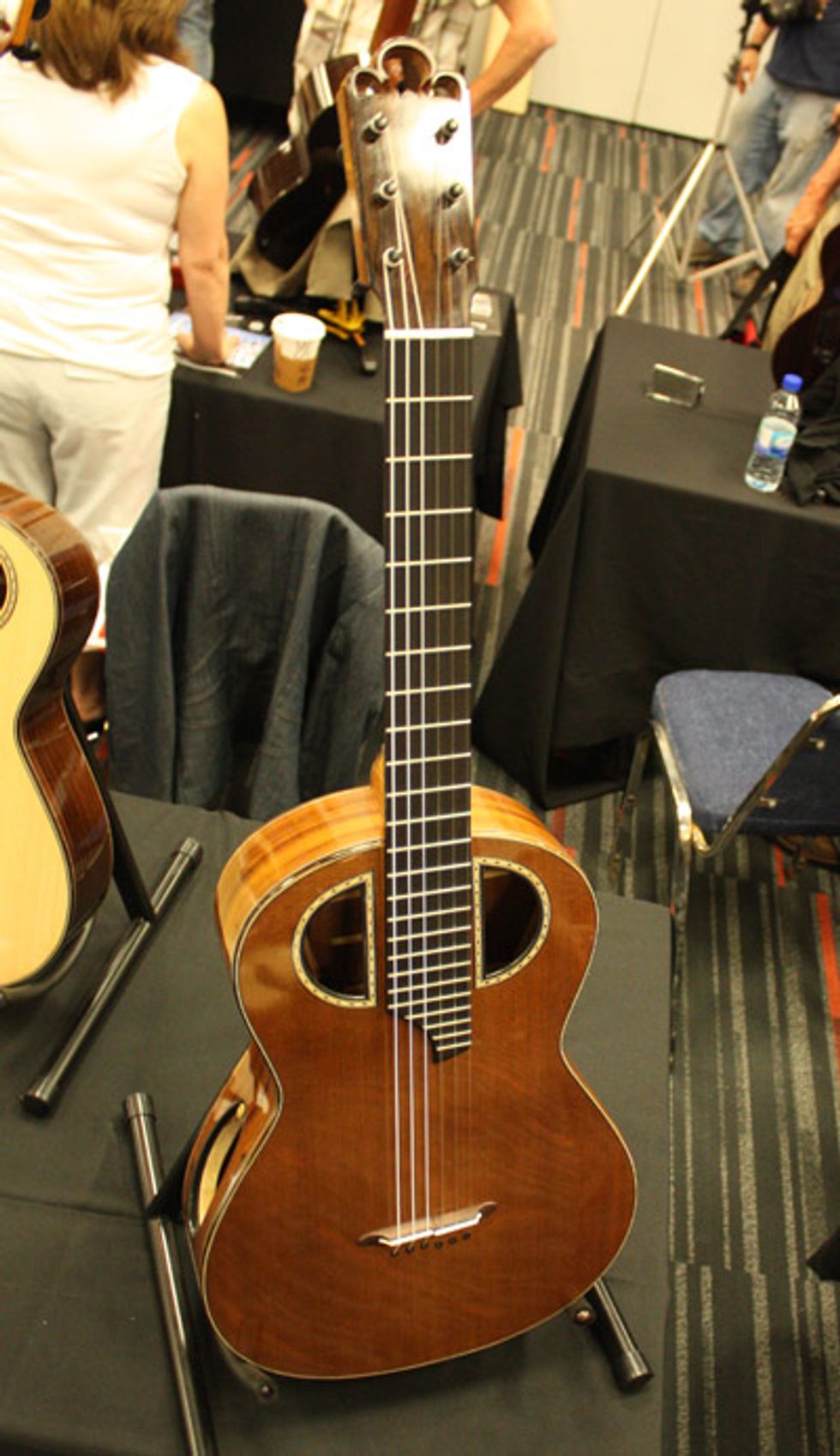
This instrument is the product of research on experimental classical guitars conducted by Florian Vorreiter in his Winnipeg workshop.
 |  |  |  |  |  |  |  |  |  |
 |  |  |  |  |  |  |  |  |  |
 |  |  |  |  |  |  |

Canadian Joseph Yanuziello doesn’t stop at traditional flat top guitars – he also makes resophonics, and various electric mandolins (including mandolas and mandocellos). This year he brought a bass, too.
Video Interview
 |  |  |  |  |  |  |  |  |  |
 |  |  |  |  |  |  |  |  |  |
 |  |  |  |  |  |  |



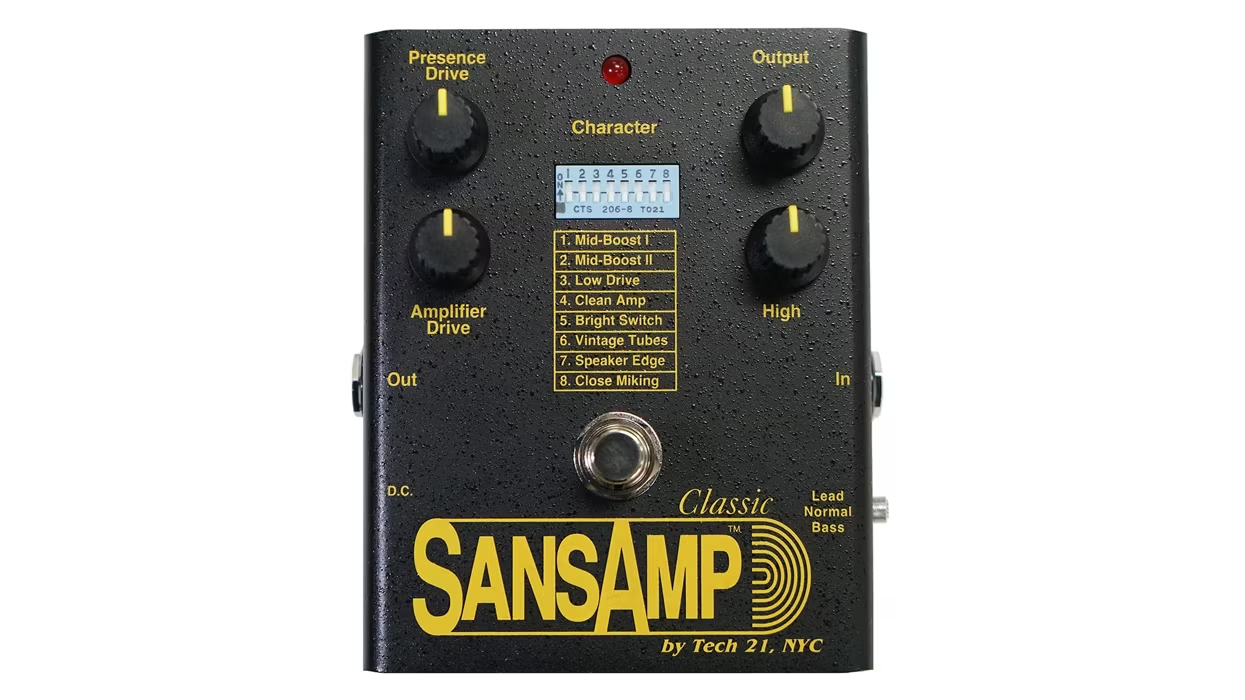
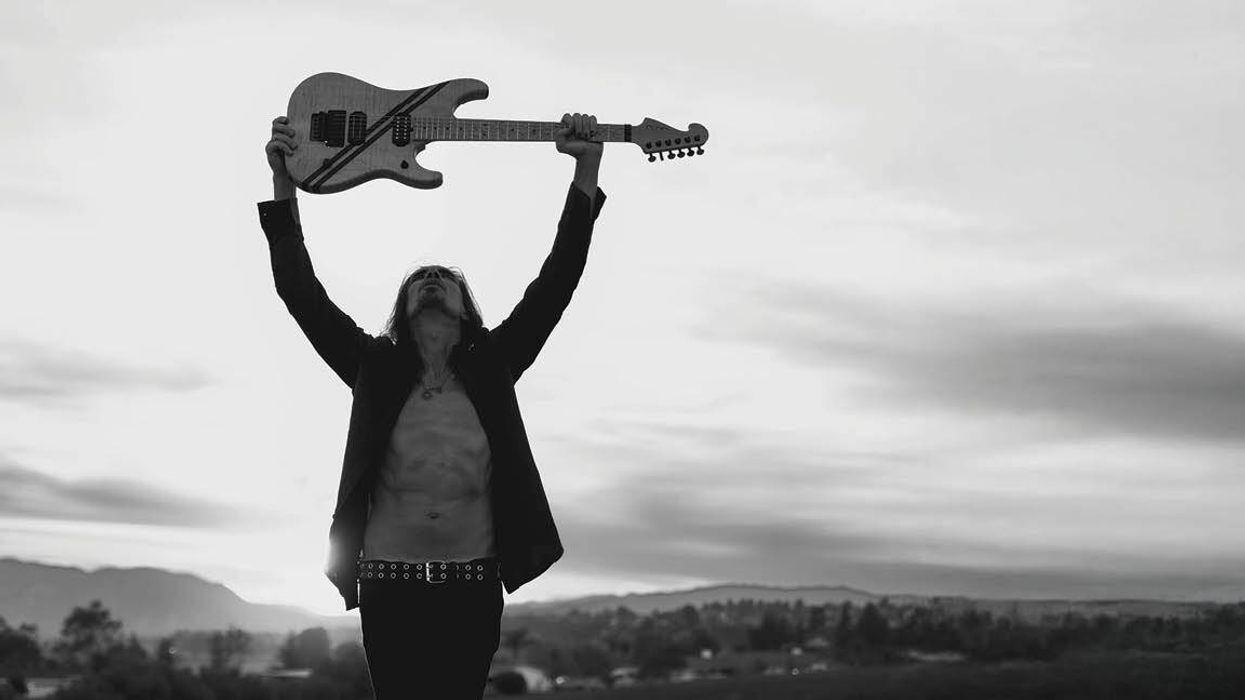
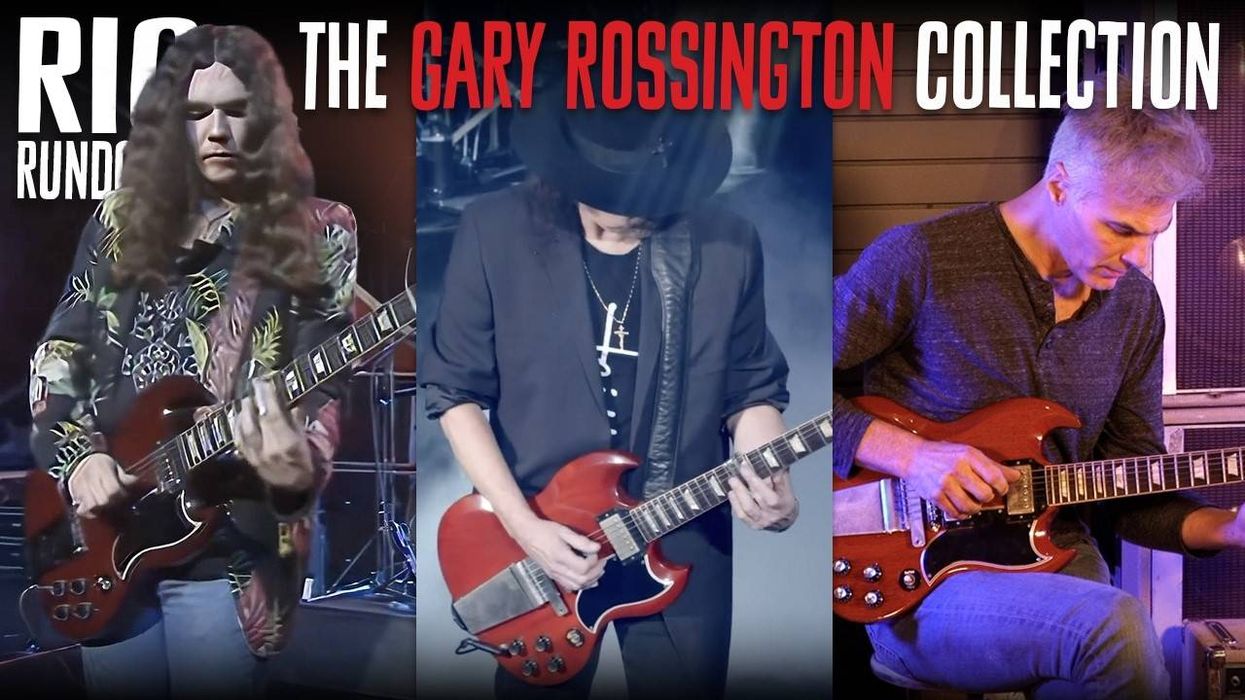
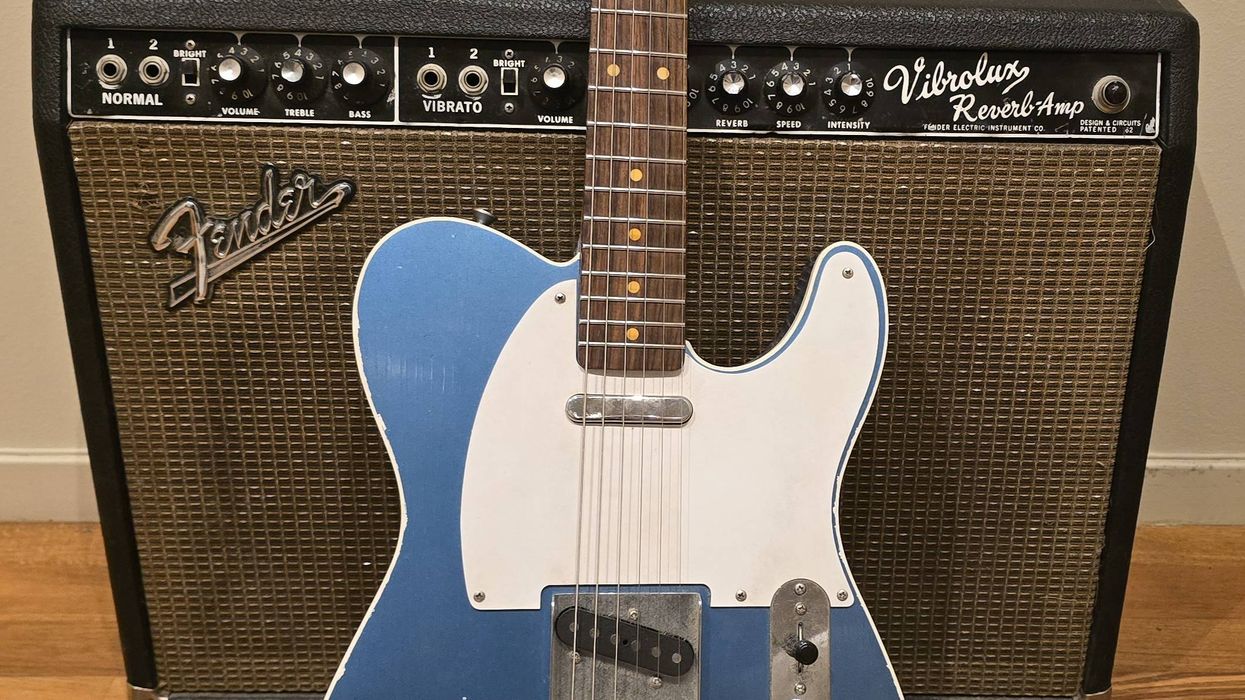
![Rig Rundown: Russian Circles’ Mike Sullivan [2025]](https://www.premierguitar.com/media-library/youtube.jpg?id=62303631&width=1245&height=700&quality=70&coordinates=0%2C0%2C0%2C0)

